Chinese emperor painting Stock Photos and Images
(1,561)See chinese emperor painting stock video clipsQuick filters:
Chinese emperor painting Stock Photos and Images
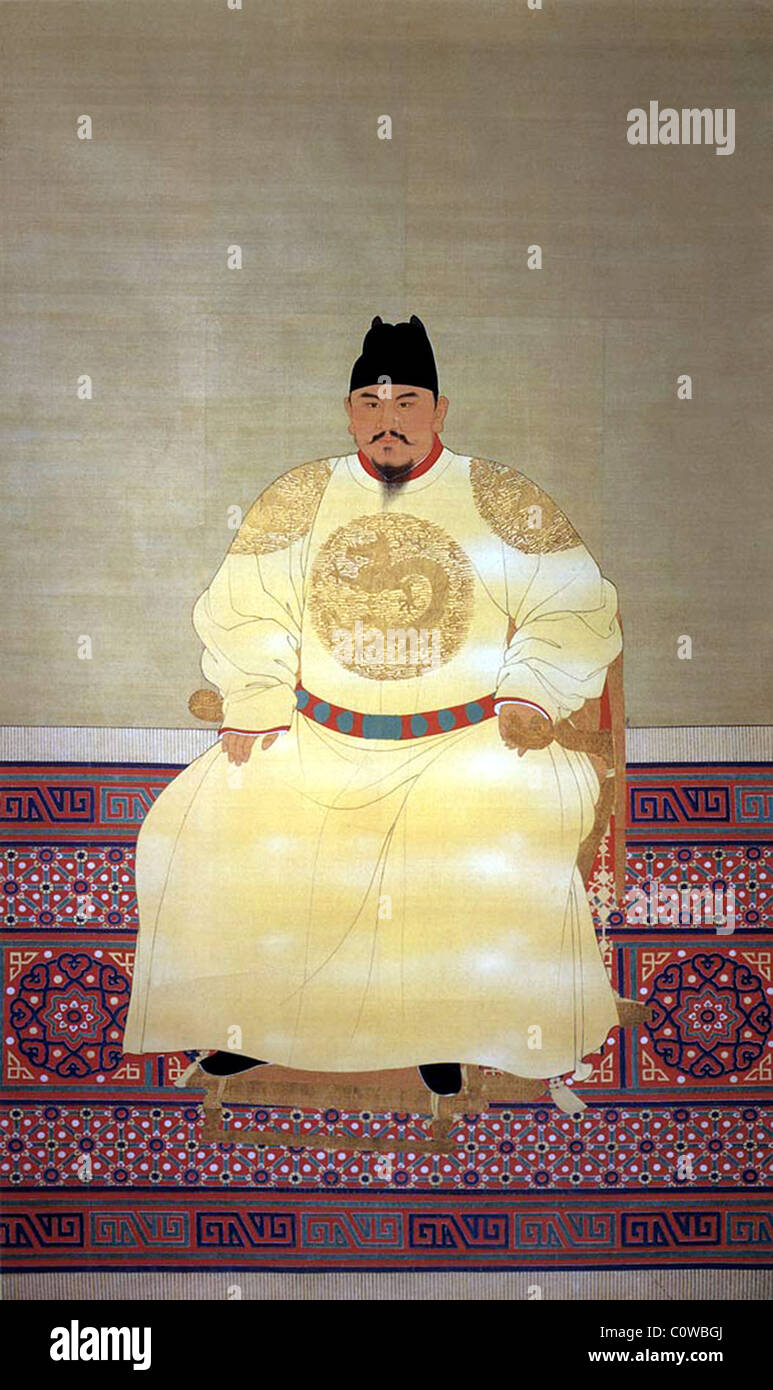 Hongwu Emperor (reigned 1368-1398 AD), Ming Dynasty, China. Stock Photohttps://www.alamy.com/image-license-details/?v=1https://www.alamy.com/stock-photo-hongwu-emperor-reigned-1368-1398-ad-ming-dynasty-china-34978626.html
Hongwu Emperor (reigned 1368-1398 AD), Ming Dynasty, China. Stock Photohttps://www.alamy.com/image-license-details/?v=1https://www.alamy.com/stock-photo-hongwu-emperor-reigned-1368-1398-ad-ming-dynasty-china-34978626.htmlRMC0WBGJ–Hongwu Emperor (reigned 1368-1398 AD), Ming Dynasty, China.
 Chinese Emperor, The Yongle Emperor (b.1360-d.1424), portrait on a hanging scroll, 1800-1899 Stock Photohttps://www.alamy.com/image-license-details/?v=1https://www.alamy.com/chinese-emperor-the-yongle-emperor-b1360-d1424-portrait-on-a-hanging-scroll-1800-1899-image425922806.html
Chinese Emperor, The Yongle Emperor (b.1360-d.1424), portrait on a hanging scroll, 1800-1899 Stock Photohttps://www.alamy.com/image-license-details/?v=1https://www.alamy.com/chinese-emperor-the-yongle-emperor-b1360-d1424-portrait-on-a-hanging-scroll-1800-1899-image425922806.htmlRM2FMXCTP–Chinese Emperor, The Yongle Emperor (b.1360-d.1424), portrait on a hanging scroll, 1800-1899
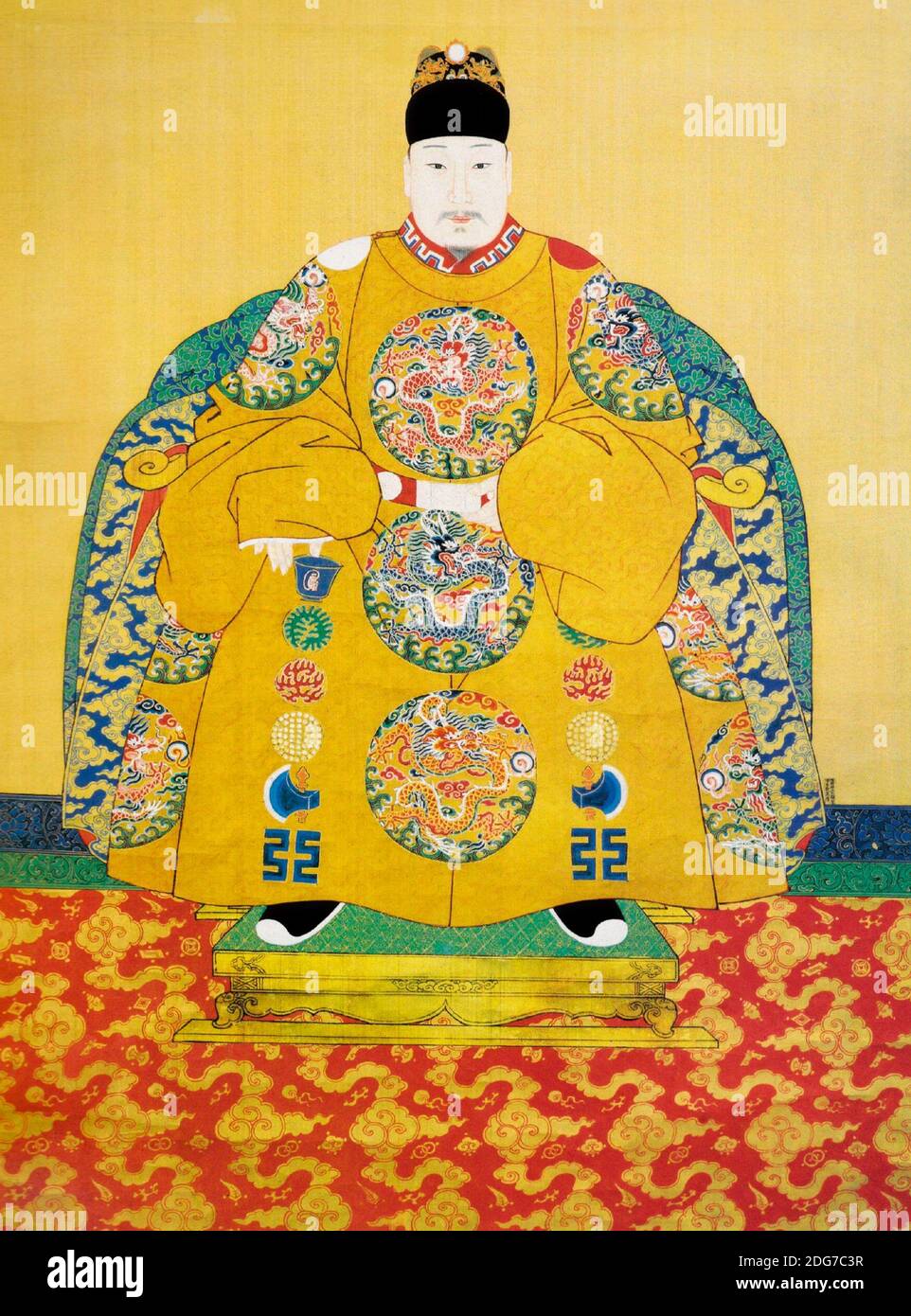 Seated portrait of Emperor Ming Shenzong - Ming Dynasty, China Stock Photohttps://www.alamy.com/image-license-details/?v=1https://www.alamy.com/seated-portrait-of-emperor-ming-shenzong-ming-dynasty-china-image388625771.html
Seated portrait of Emperor Ming Shenzong - Ming Dynasty, China Stock Photohttps://www.alamy.com/image-license-details/?v=1https://www.alamy.com/seated-portrait-of-emperor-ming-shenzong-ming-dynasty-china-image388625771.htmlRM2DG7C3R–Seated portrait of Emperor Ming Shenzong - Ming Dynasty, China
 A classic ancient painting of the qing emperor on horse Stock Photohttps://www.alamy.com/image-license-details/?v=1https://www.alamy.com/a-classic-ancient-painting-of-the-qing-emperor-on-horse-image62733293.html
A classic ancient painting of the qing emperor on horse Stock Photohttps://www.alamy.com/image-license-details/?v=1https://www.alamy.com/a-classic-ancient-painting-of-the-qing-emperor-on-horse-image62733293.htmlRFDJ1MXN–A classic ancient painting of the qing emperor on horse
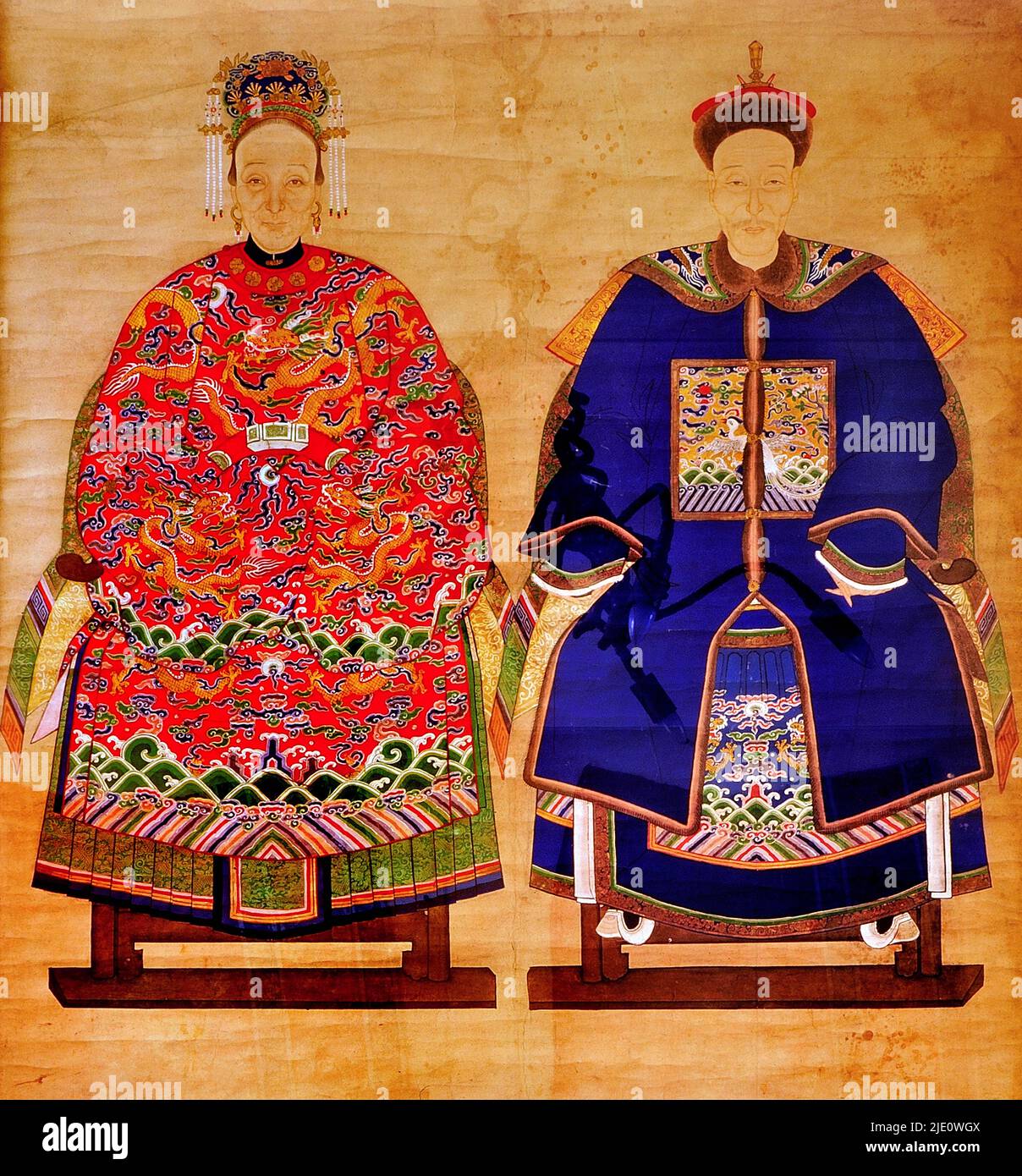 Ancient Chinese painting, portrait of a Chinese dignitary with his wife, tempera on canvas, Qing period 1644-1911. Stock Photohttps://www.alamy.com/image-license-details/?v=1https://www.alamy.com/ancient-chinese-painting-portrait-of-a-chinese-dignitary-with-his-wife-tempera-on-canvas-qing-period-1644-1911-image473305194.html
Ancient Chinese painting, portrait of a Chinese dignitary with his wife, tempera on canvas, Qing period 1644-1911. Stock Photohttps://www.alamy.com/image-license-details/?v=1https://www.alamy.com/ancient-chinese-painting-portrait-of-a-chinese-dignitary-with-his-wife-tempera-on-canvas-qing-period-1644-1911-image473305194.htmlRM2JE0WGX–Ancient Chinese painting, portrait of a Chinese dignitary with his wife, tempera on canvas, Qing period 1644-1911.
 Wall mural, painting showing the emperor and entourage on Mount Tai, Tai Shan, Shandong province, Taishan, China, World Heritage Stock Photohttps://www.alamy.com/image-license-details/?v=1https://www.alamy.com/stock-photo-wall-mural-painting-showing-the-emperor-and-entourage-on-mount-tai-23954419.html
Wall mural, painting showing the emperor and entourage on Mount Tai, Tai Shan, Shandong province, Taishan, China, World Heritage Stock Photohttps://www.alamy.com/image-license-details/?v=1https://www.alamy.com/stock-photo-wall-mural-painting-showing-the-emperor-and-entourage-on-mount-tai-23954419.htmlRMBAY62Y–Wall mural, painting showing the emperor and entourage on Mount Tai, Tai Shan, Shandong province, Taishan, China, World Heritage
 Old illustratiion of Emperor of China in traditional dresses in 1667. Long white and blue tunic with draping orange elements, cone hat and feathers. Stock Photohttps://www.alamy.com/image-license-details/?v=1https://www.alamy.com/stock-image-old-illustratiion-of-emperor-of-china-in-traditional-dresses-in-1667-165378292.html
Old illustratiion of Emperor of China in traditional dresses in 1667. Long white and blue tunic with draping orange elements, cone hat and feathers. Stock Photohttps://www.alamy.com/image-license-details/?v=1https://www.alamy.com/stock-image-old-illustratiion-of-emperor-of-china-in-traditional-dresses-in-1667-165378292.htmlRFKH1HKG–Old illustratiion of Emperor of China in traditional dresses in 1667. Long white and blue tunic with draping orange elements, cone hat and feathers.
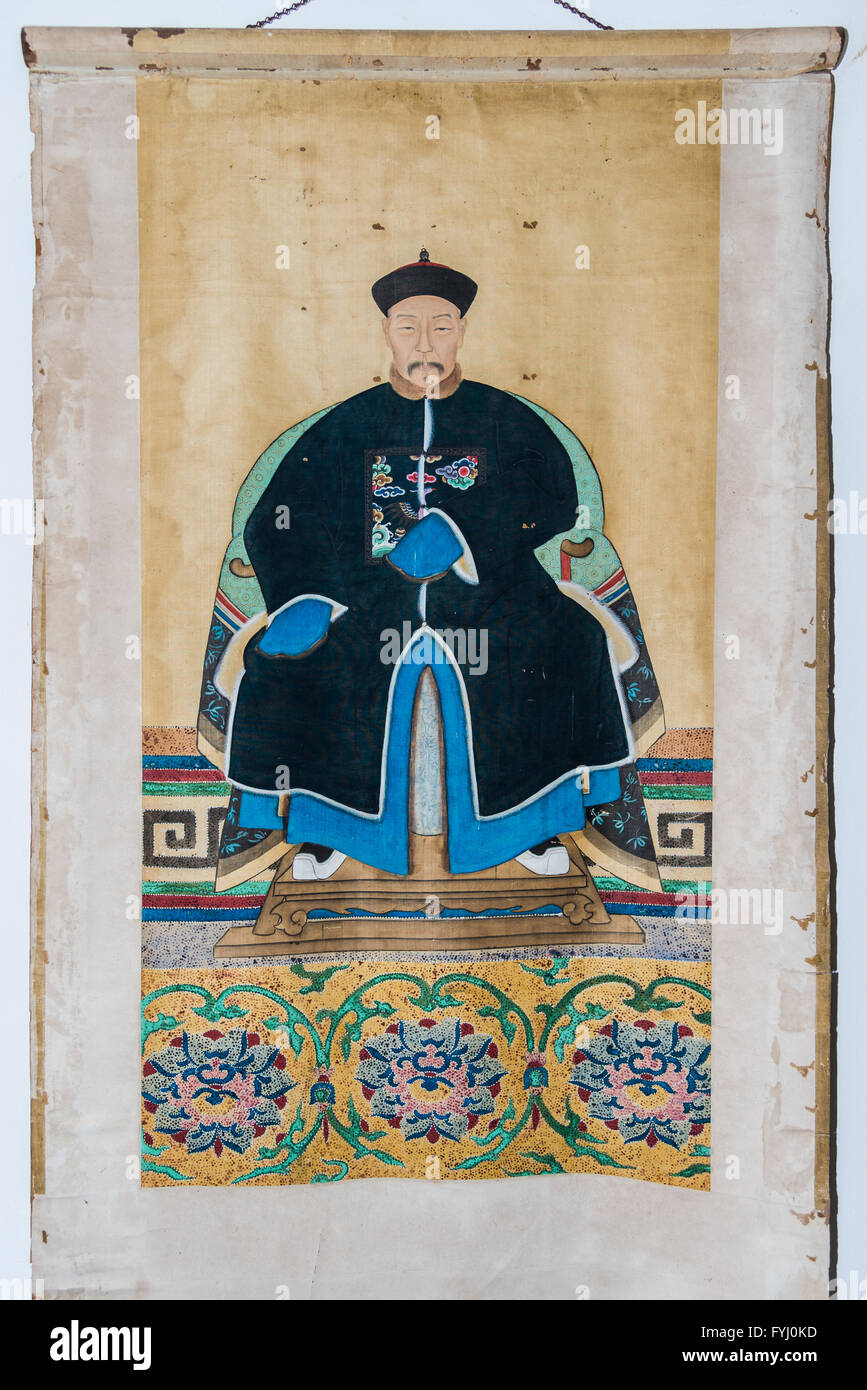 Silk scroll portrait of Emperor Kangxi (1662 - 1722 A.D.) of Qing Dynasty, China. Stock Photohttps://www.alamy.com/image-license-details/?v=1https://www.alamy.com/stock-photo-silk-scroll-portrait-of-emperor-kangxi-1662-1722-ad-of-qing-dynasty-103043233.html
Silk scroll portrait of Emperor Kangxi (1662 - 1722 A.D.) of Qing Dynasty, China. Stock Photohttps://www.alamy.com/image-license-details/?v=1https://www.alamy.com/stock-photo-silk-scroll-portrait-of-emperor-kangxi-1662-1722-ad-of-qing-dynasty-103043233.htmlRMFYJ0KD–Silk scroll portrait of Emperor Kangxi (1662 - 1722 A.D.) of Qing Dynasty, China.
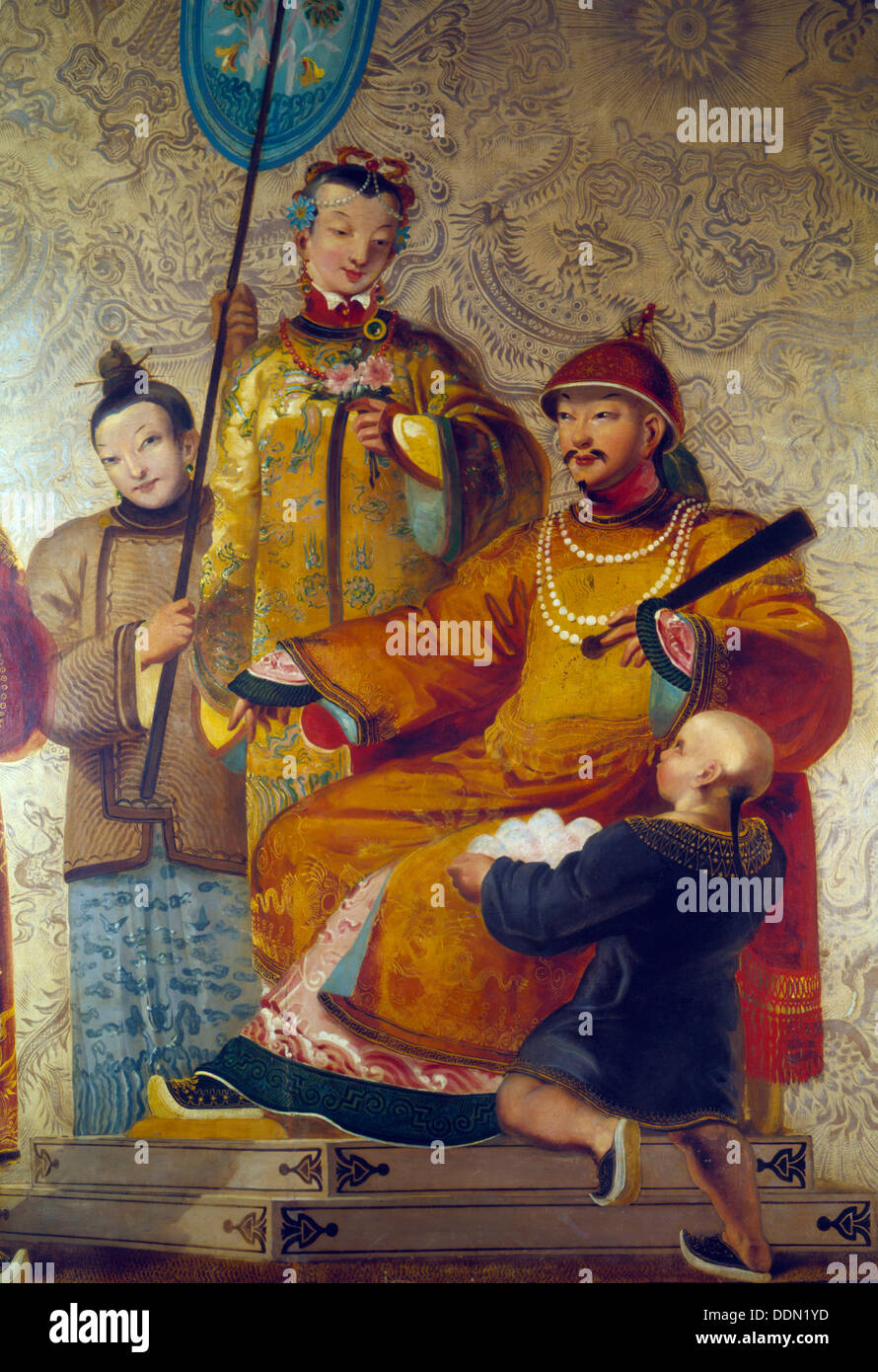 Chinese wall painting, Royal Pavilion, Brighton, East Sussex, early 19th century. Artist: Eric de Maré Stock Photohttps://www.alamy.com/image-license-details/?v=1https://www.alamy.com/chinese-wall-painting-royal-pavilion-brighton-east-sussex-early-19th-image60084177.html
Chinese wall painting, Royal Pavilion, Brighton, East Sussex, early 19th century. Artist: Eric de Maré Stock Photohttps://www.alamy.com/image-license-details/?v=1https://www.alamy.com/chinese-wall-painting-royal-pavilion-brighton-east-sussex-early-19th-image60084177.htmlRMDDN1YD–Chinese wall painting, Royal Pavilion, Brighton, East Sussex, early 19th century. Artist: Eric de Maré
 A portrait of Emperor Qianlong of the Qing dynasty Stock Photohttps://www.alamy.com/image-license-details/?v=1https://www.alamy.com/stock-photo-a-portrait-of-emperor-qianlong-of-the-qing-dynasty-73331691.html
A portrait of Emperor Qianlong of the Qing dynasty Stock Photohttps://www.alamy.com/image-license-details/?v=1https://www.alamy.com/stock-photo-a-portrait-of-emperor-qianlong-of-the-qing-dynasty-73331691.htmlRME78F8Y–A portrait of Emperor Qianlong of the Qing dynasty
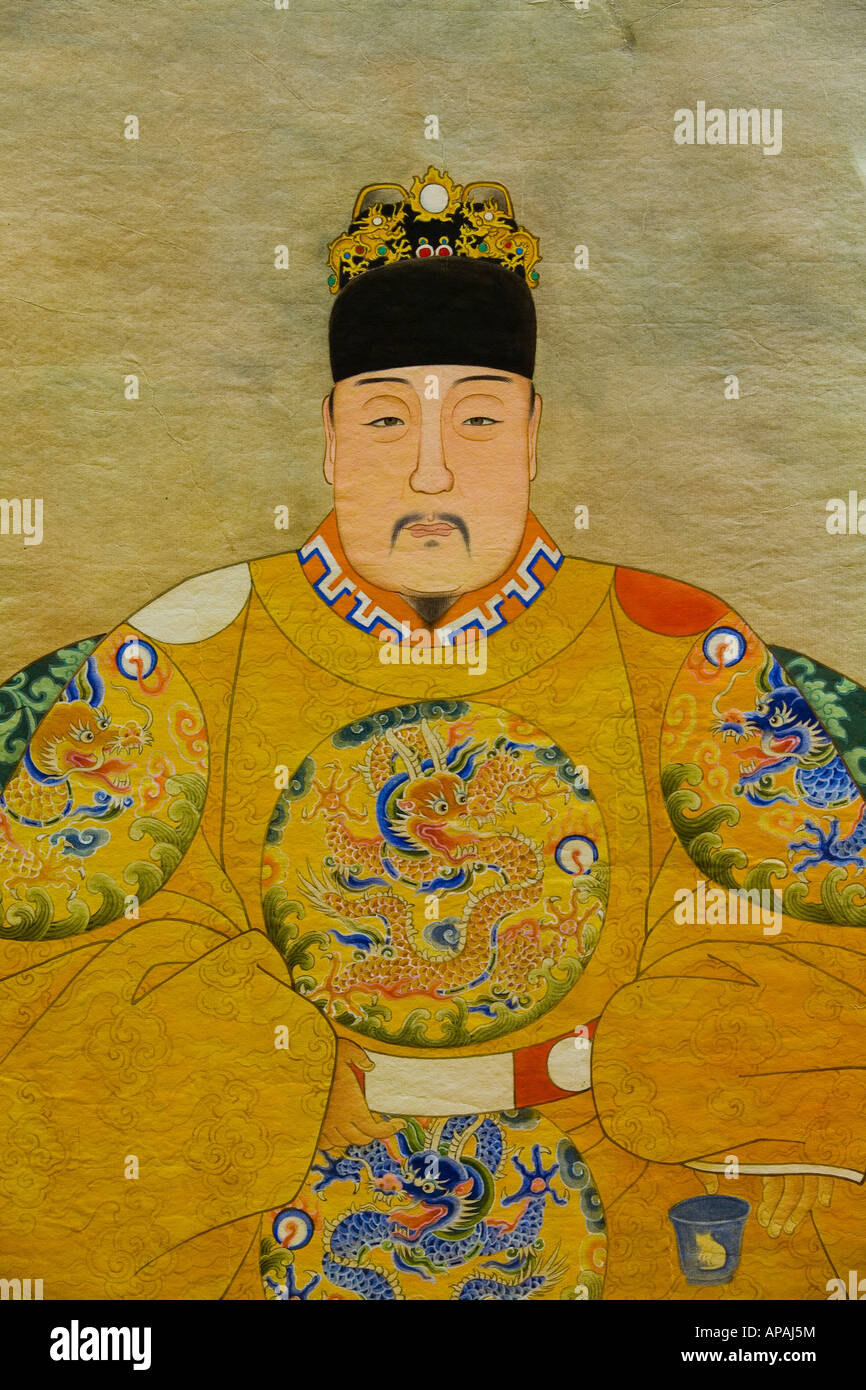 Ancient Painting Stock Photohttps://www.alamy.com/image-license-details/?v=1https://www.alamy.com/stock-photo-ancient-painting-15730015.html
Ancient Painting Stock Photohttps://www.alamy.com/image-license-details/?v=1https://www.alamy.com/stock-photo-ancient-painting-15730015.htmlRFAPAJ5M–Ancient Painting
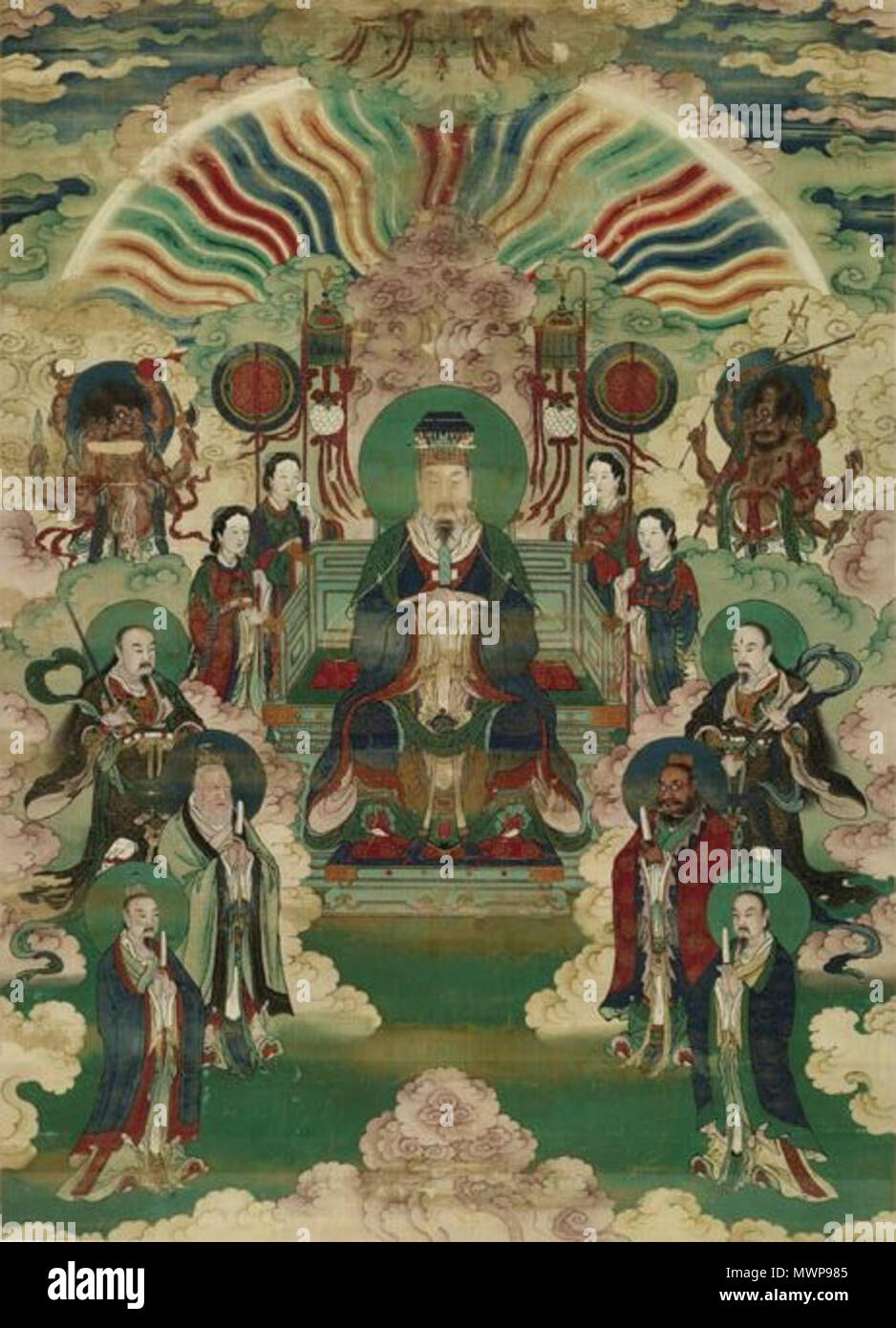 . Chinese painting of Portraits of Jade Emperor and the Heavenly Kings. Ink and color on silk . Unknown date. Anonymous 498 Portraits of Jade Emperor and the Heavenly Kings Stock Photohttps://www.alamy.com/image-license-details/?v=1https://www.alamy.com/chinese-painting-of-portraits-of-jade-emperor-and-the-heavenly-kings-ink-and-color-on-silk-unknown-date-anonymous-498-portraits-of-jade-emperor-and-the-heavenly-kings-image187960309.html
. Chinese painting of Portraits of Jade Emperor and the Heavenly Kings. Ink and color on silk . Unknown date. Anonymous 498 Portraits of Jade Emperor and the Heavenly Kings Stock Photohttps://www.alamy.com/image-license-details/?v=1https://www.alamy.com/chinese-painting-of-portraits-of-jade-emperor-and-the-heavenly-kings-ink-and-color-on-silk-unknown-date-anonymous-498-portraits-of-jade-emperor-and-the-heavenly-kings-image187960309.htmlRMMWP985–. Chinese painting of Portraits of Jade Emperor and the Heavenly Kings. Ink and color on silk . Unknown date. Anonymous 498 Portraits of Jade Emperor and the Heavenly Kings
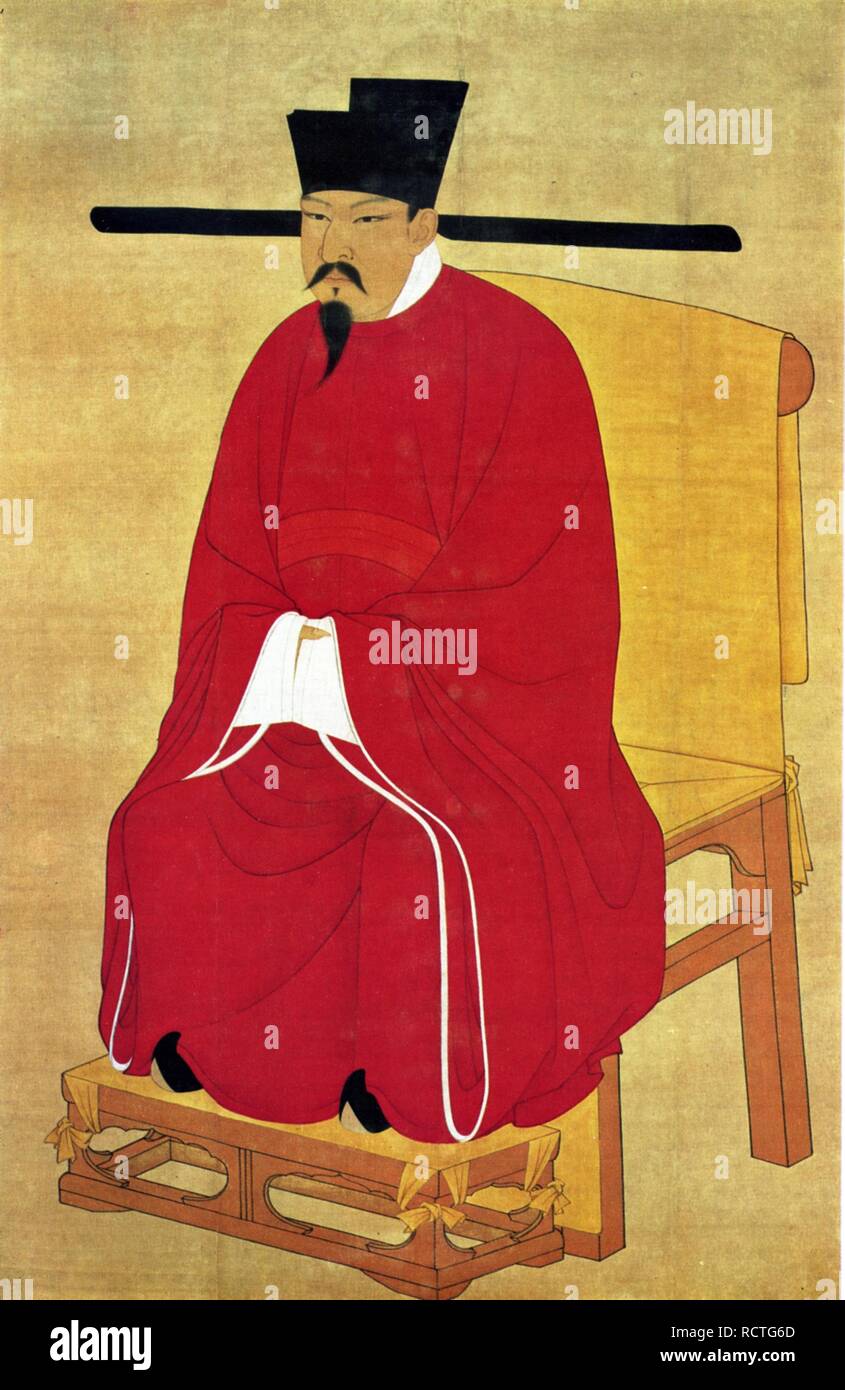 Portrait of Emperor Shenzong of Song (1048-1085). Museum: National Palace Museum, Taipei. Author: Chinese court painter. Stock Photohttps://www.alamy.com/image-license-details/?v=1https://www.alamy.com/portrait-of-emperor-shenzong-of-song-1048-1085-museum-national-palace-museum-taipei-author-chinese-court-painter-image231650229.html
Portrait of Emperor Shenzong of Song (1048-1085). Museum: National Palace Museum, Taipei. Author: Chinese court painter. Stock Photohttps://www.alamy.com/image-license-details/?v=1https://www.alamy.com/portrait-of-emperor-shenzong-of-song-1048-1085-museum-national-palace-museum-taipei-author-chinese-court-painter-image231650229.htmlRMRCTG6D–Portrait of Emperor Shenzong of Song (1048-1085). Museum: National Palace Museum, Taipei. Author: Chinese court painter.
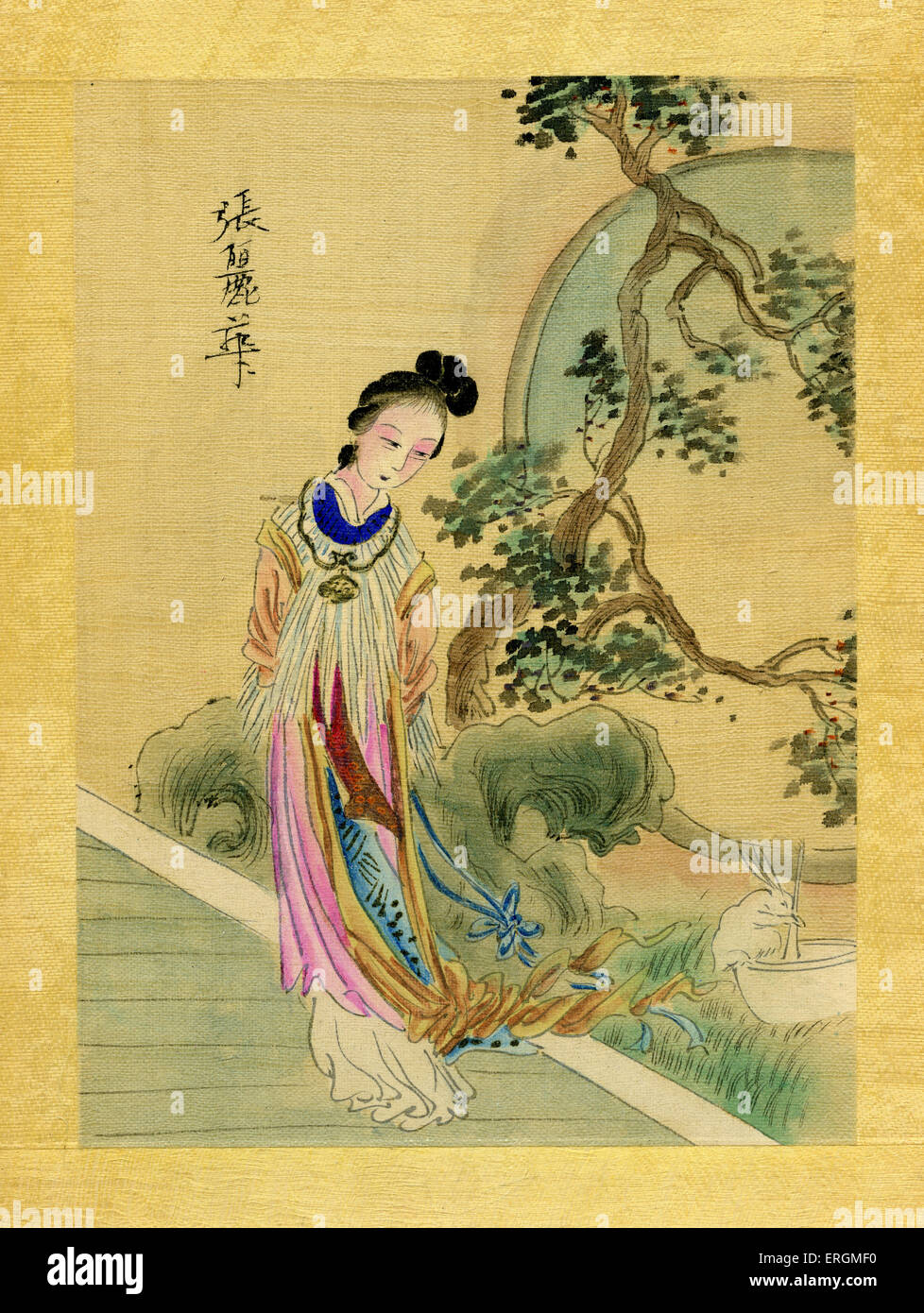 Chang Li Hua/Consort Zhang Lihua (died 589). Concubine of Chen Shubao/Houzhu of Chen (553-604) - last emperor of the Chinese Stock Photohttps://www.alamy.com/image-license-details/?v=1https://www.alamy.com/stock-photo-chang-li-huaconsort-zhang-lihua-died-589-concubine-of-chen-shubaohouzhu-83345892.html
Chang Li Hua/Consort Zhang Lihua (died 589). Concubine of Chen Shubao/Houzhu of Chen (553-604) - last emperor of the Chinese Stock Photohttps://www.alamy.com/image-license-details/?v=1https://www.alamy.com/stock-photo-chang-li-huaconsort-zhang-lihua-died-589-concubine-of-chen-shubaohouzhu-83345892.htmlRMERGMF0–Chang Li Hua/Consort Zhang Lihua (died 589). Concubine of Chen Shubao/Houzhu of Chen (553-604) - last emperor of the Chinese
 Auspicious Cranes by Emperor Huizong of Song (1082 - 1135) ,Year 1112 ( Northern Song Dynasty ), Technique ink and color on silk, Location Liaoning Provincial Museum Stock Photohttps://www.alamy.com/image-license-details/?v=1https://www.alamy.com/auspicious-cranes-by-emperor-huizong-of-song-1082-1135-year-1112-northern-song-dynasty-technique-ink-and-color-on-silk-location-liaoning-provincial-museum-image328085385.html
Auspicious Cranes by Emperor Huizong of Song (1082 - 1135) ,Year 1112 ( Northern Song Dynasty ), Technique ink and color on silk, Location Liaoning Provincial Museum Stock Photohttps://www.alamy.com/image-license-details/?v=1https://www.alamy.com/auspicious-cranes-by-emperor-huizong-of-song-1082-1135-year-1112-northern-song-dynasty-technique-ink-and-color-on-silk-location-liaoning-provincial-museum-image328085385.htmlRM2A1NG75–Auspicious Cranes by Emperor Huizong of Song (1082 - 1135) ,Year 1112 ( Northern Song Dynasty ), Technique ink and color on silk, Location Liaoning Provincial Museum
 Colorful portrait of Cixi, concubine of the emperor and Empress Dowager, Qing Dynasty, New Summer Palace, Beijing, China Stock Photohttps://www.alamy.com/image-license-details/?v=1https://www.alamy.com/stock-photo-colorful-portrait-of-cixi-concubine-of-the-emperor-and-empress-dowager-82132743.html
Colorful portrait of Cixi, concubine of the emperor and Empress Dowager, Qing Dynasty, New Summer Palace, Beijing, China Stock Photohttps://www.alamy.com/image-license-details/?v=1https://www.alamy.com/stock-photo-colorful-portrait-of-cixi-concubine-of-the-emperor-and-empress-dowager-82132743.htmlRMENHD47–Colorful portrait of Cixi, concubine of the emperor and Empress Dowager, Qing Dynasty, New Summer Palace, Beijing, China
 Portrait of Imperial Dowager Concubine Duan Kang Inside the Forbidden City Beijing China Stock Photohttps://www.alamy.com/image-license-details/?v=1https://www.alamy.com/portrait-of-imperial-dowager-concubine-duan-kang-inside-the-forbidden-image9771503.html
Portrait of Imperial Dowager Concubine Duan Kang Inside the Forbidden City Beijing China Stock Photohttps://www.alamy.com/image-license-details/?v=1https://www.alamy.com/portrait-of-imperial-dowager-concubine-duan-kang-inside-the-forbidden-image9771503.htmlRMAYG7Y0–Portrait of Imperial Dowager Concubine Duan Kang Inside the Forbidden City Beijing China
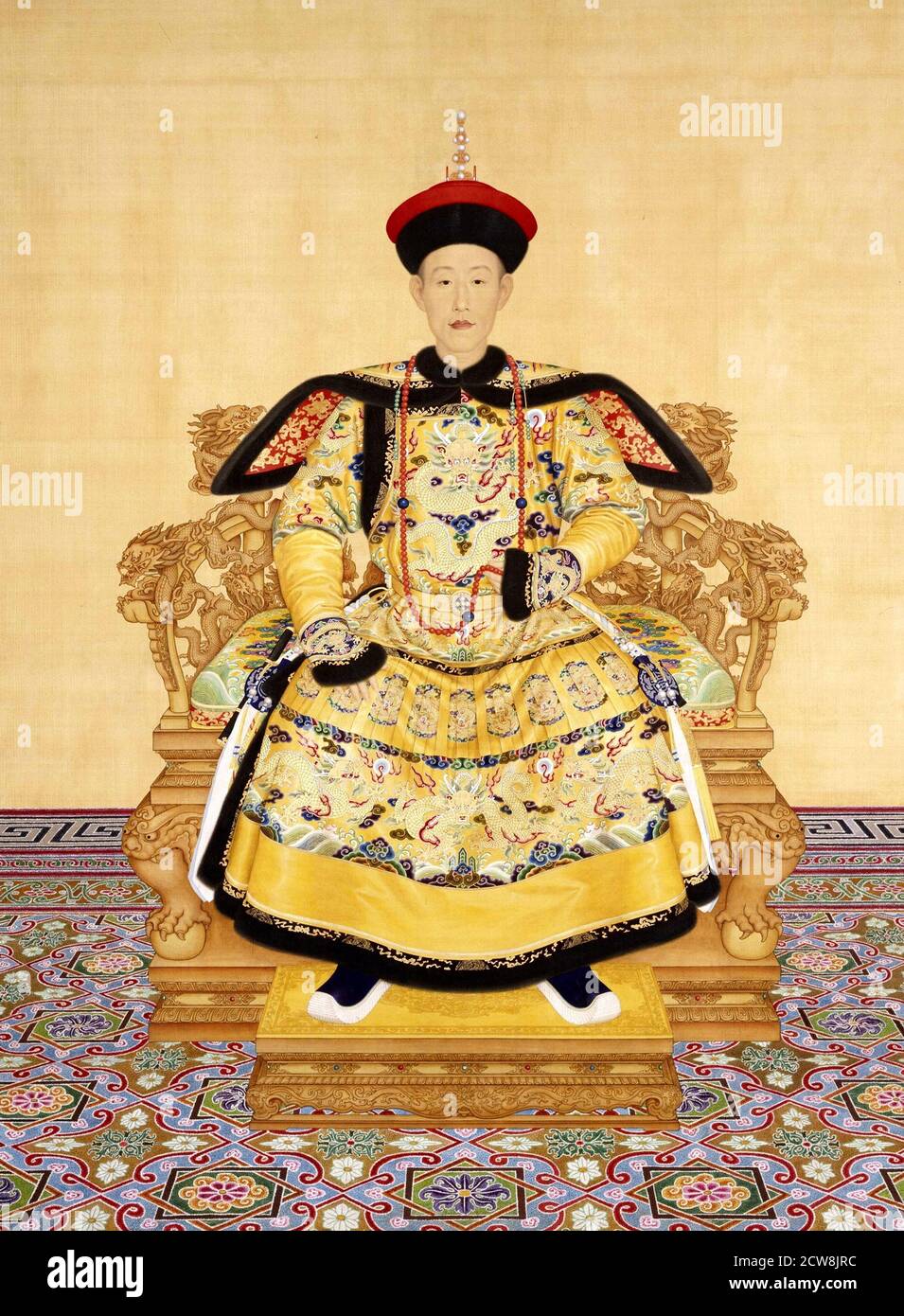 The Qianlong Emperor in court dress by Giuseppe Castiglione (1688-1766, Chinese name Lang Shining), 1736. The Qianlong Emperor (1711-1799) was the 6th Emperor of the Qing Dynasty in China Stock Photohttps://www.alamy.com/image-license-details/?v=1https://www.alamy.com/the-qianlong-emperor-in-court-dress-by-giuseppe-castiglione-1688-1766-chinese-name-lang-shining-1736-the-qianlong-emperor-1711-1799-was-the-6th-emperor-of-the-qing-dynasty-in-china-image376974512.html
The Qianlong Emperor in court dress by Giuseppe Castiglione (1688-1766, Chinese name Lang Shining), 1736. The Qianlong Emperor (1711-1799) was the 6th Emperor of the Qing Dynasty in China Stock Photohttps://www.alamy.com/image-license-details/?v=1https://www.alamy.com/the-qianlong-emperor-in-court-dress-by-giuseppe-castiglione-1688-1766-chinese-name-lang-shining-1736-the-qianlong-emperor-1711-1799-was-the-6th-emperor-of-the-qing-dynasty-in-china-image376974512.htmlRM2CW8JRC–The Qianlong Emperor in court dress by Giuseppe Castiglione (1688-1766, Chinese name Lang Shining), 1736. The Qianlong Emperor (1711-1799) was the 6th Emperor of the Qing Dynasty in China
 China, Hong Kong, Hollywood Road, Upper Lascar Row, Antique Shop Display, Historical Painting depicting Chinese Emperors Stock Photohttps://www.alamy.com/image-license-details/?v=1https://www.alamy.com/stock-photo-china-hong-kong-hollywood-road-upper-lascar-row-antique-shop-display-57742804.html
China, Hong Kong, Hollywood Road, Upper Lascar Row, Antique Shop Display, Historical Painting depicting Chinese Emperors Stock Photohttps://www.alamy.com/image-license-details/?v=1https://www.alamy.com/stock-photo-china-hong-kong-hollywood-road-upper-lascar-row-antique-shop-display-57742804.htmlRMD9XBF0–China, Hong Kong, Hollywood Road, Upper Lascar Row, Antique Shop Display, Historical Painting depicting Chinese Emperors
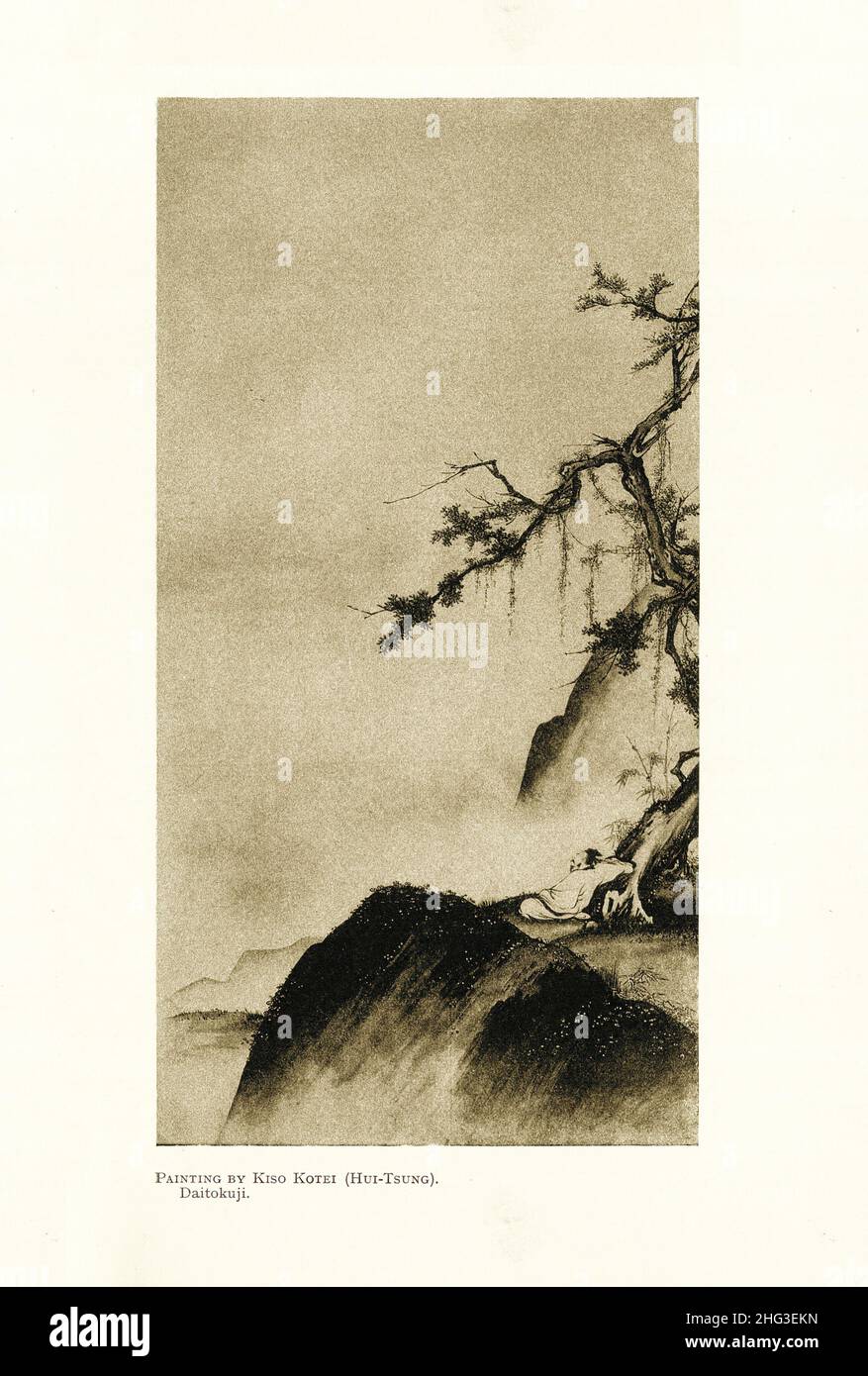 Chinese medieval painting by Kiso Kotei (Hui-Tsung). Daitoku-ji temple. Reproduction of book illustration of 1912 Emperor Huizong of Song (1082–1135), Stock Photohttps://www.alamy.com/image-license-details/?v=1https://www.alamy.com/chinese-medieval-painting-by-kiso-kotei-hui-tsung-daitoku-ji-temple-reproduction-of-book-illustration-of-1912-emperor-huizong-of-song-10821135-image457381449.html
Chinese medieval painting by Kiso Kotei (Hui-Tsung). Daitoku-ji temple. Reproduction of book illustration of 1912 Emperor Huizong of Song (1082–1135), Stock Photohttps://www.alamy.com/image-license-details/?v=1https://www.alamy.com/chinese-medieval-painting-by-kiso-kotei-hui-tsung-daitoku-ji-temple-reproduction-of-book-illustration-of-1912-emperor-huizong-of-song-10821135-image457381449.htmlRM2HG3EKN–Chinese medieval painting by Kiso Kotei (Hui-Tsung). Daitoku-ji temple. Reproduction of book illustration of 1912 Emperor Huizong of Song (1082–1135),
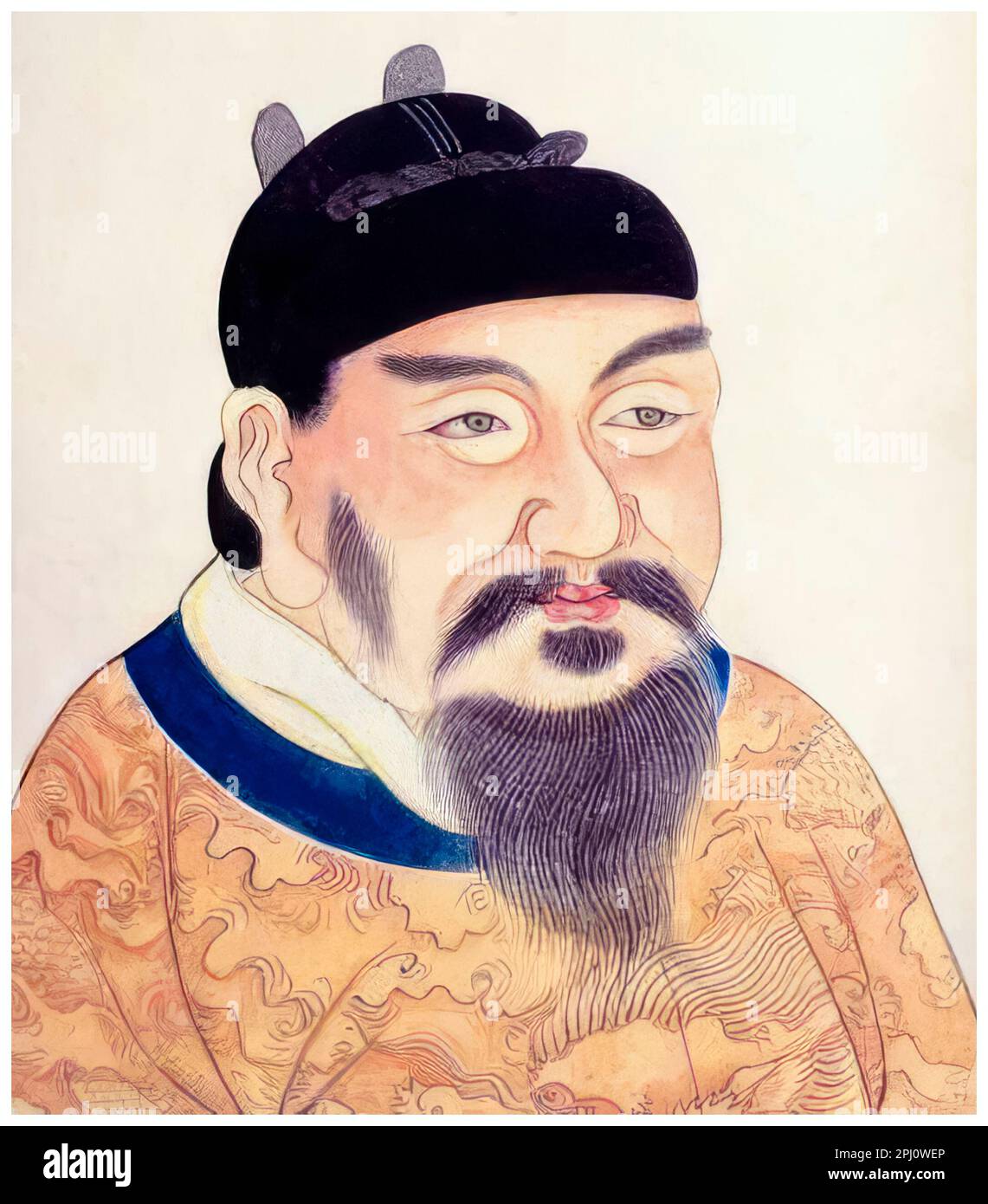 Emperor Gaozong of Tang (628-683), Third Chinese Emperor of the Tang Dynasty, portrait painting before 1799 Stock Photohttps://www.alamy.com/image-license-details/?v=1https://www.alamy.com/emperor-gaozong-of-tang-628-683-third-chinese-emperor-of-the-tang-dynasty-portrait-painting-before-1799-image544605230.html
Emperor Gaozong of Tang (628-683), Third Chinese Emperor of the Tang Dynasty, portrait painting before 1799 Stock Photohttps://www.alamy.com/image-license-details/?v=1https://www.alamy.com/emperor-gaozong-of-tang-628-683-third-chinese-emperor-of-the-tang-dynasty-portrait-painting-before-1799-image544605230.htmlRM2PJ0WEP–Emperor Gaozong of Tang (628-683), Third Chinese Emperor of the Tang Dynasty, portrait painting before 1799
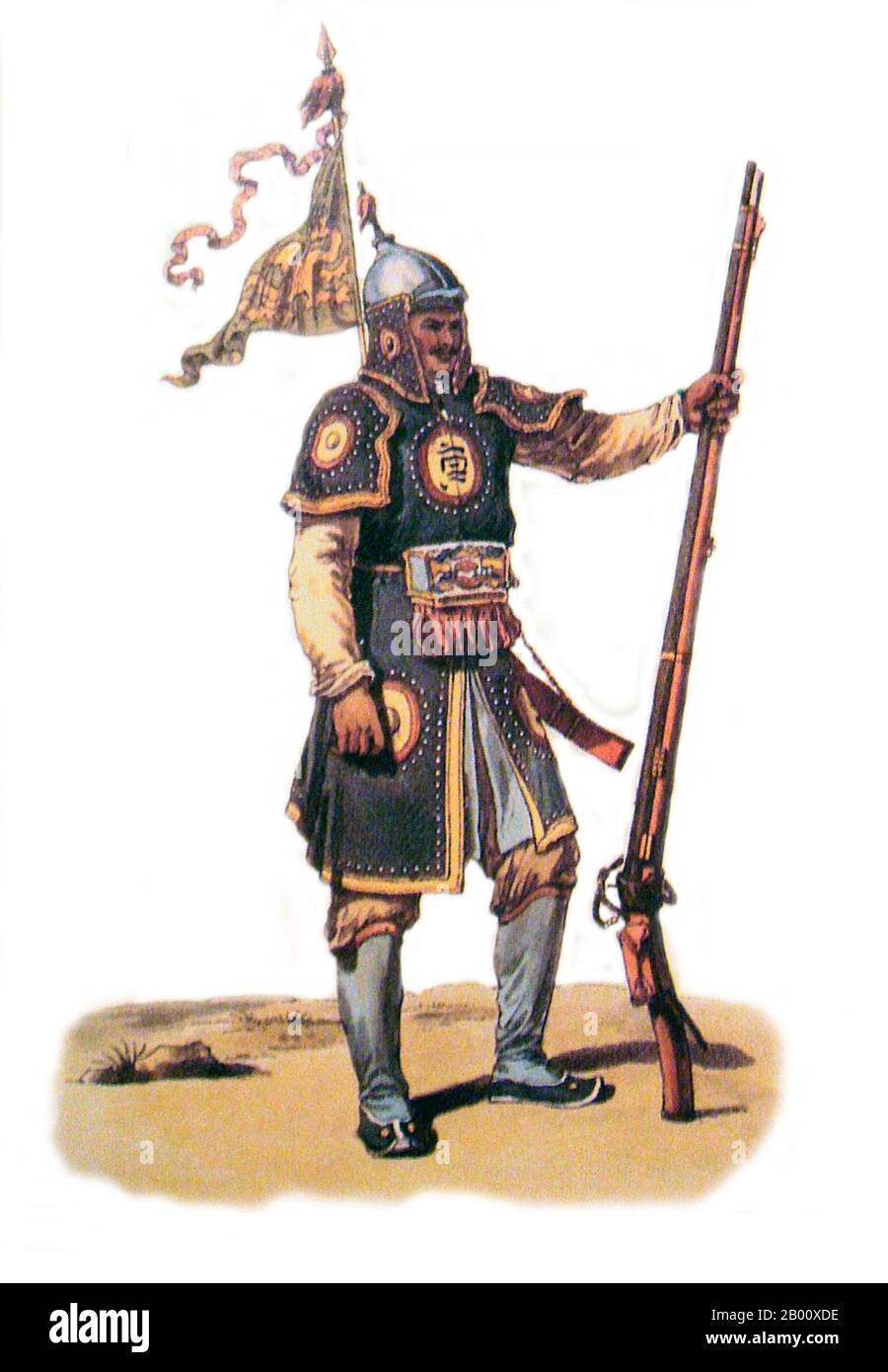 China: 'Soldier of the Emperor Qianlong'. Painting by William Alexander (1767-1816), 1793. Qianlong (25 September 1711 – 7 February 1799) was the sixth emperor of the Manchu-led Qing Dynasty, and the fourth Qing emperor to rule over China. The fourth son of the Yongzheng Emperor, he reigned officially from 11 October 1736 to 8 February 1796. On 8 February, he abdicated in favor of his son, Jiaqing, a filial act in order not to reign longer than his grandfather, the illustrious Kangxi Emperor. Despite his retirement, however, he retained ultimate power until his death in 1799. Stock Photohttps://www.alamy.com/image-license-details/?v=1https://www.alamy.com/china-soldier-of-the-emperor-qianlong-painting-by-william-alexander-1767-1816-1793-qianlong-25-september-1711-7-february-1799-was-the-sixth-emperor-of-the-manchu-led-qing-dynasty-and-the-fourth-qing-emperor-to-rule-over-china-the-fourth-son-of-the-yongzheng-emperor-he-reigned-officially-from-11-october-1736-to-8-february-1796-on-8-february-he-abdicated-in-favor-of-his-son-jiaqing-a-filial-act-in-order-not-to-reign-longer-than-his-grandfather-the-illustrious-kangxi-emperor-despite-his-retirement-however-he-retained-ultimate-power-until-his-death-in-1799-image344228122.html
China: 'Soldier of the Emperor Qianlong'. Painting by William Alexander (1767-1816), 1793. Qianlong (25 September 1711 – 7 February 1799) was the sixth emperor of the Manchu-led Qing Dynasty, and the fourth Qing emperor to rule over China. The fourth son of the Yongzheng Emperor, he reigned officially from 11 October 1736 to 8 February 1796. On 8 February, he abdicated in favor of his son, Jiaqing, a filial act in order not to reign longer than his grandfather, the illustrious Kangxi Emperor. Despite his retirement, however, he retained ultimate power until his death in 1799. Stock Photohttps://www.alamy.com/image-license-details/?v=1https://www.alamy.com/china-soldier-of-the-emperor-qianlong-painting-by-william-alexander-1767-1816-1793-qianlong-25-september-1711-7-february-1799-was-the-sixth-emperor-of-the-manchu-led-qing-dynasty-and-the-fourth-qing-emperor-to-rule-over-china-the-fourth-son-of-the-yongzheng-emperor-he-reigned-officially-from-11-october-1736-to-8-february-1796-on-8-february-he-abdicated-in-favor-of-his-son-jiaqing-a-filial-act-in-order-not-to-reign-longer-than-his-grandfather-the-illustrious-kangxi-emperor-despite-his-retirement-however-he-retained-ultimate-power-until-his-death-in-1799-image344228122.htmlRM2B00XDE–China: 'Soldier of the Emperor Qianlong'. Painting by William Alexander (1767-1816), 1793. Qianlong (25 September 1711 – 7 February 1799) was the sixth emperor of the Manchu-led Qing Dynasty, and the fourth Qing emperor to rule over China. The fourth son of the Yongzheng Emperor, he reigned officially from 11 October 1736 to 8 February 1796. On 8 February, he abdicated in favor of his son, Jiaqing, a filial act in order not to reign longer than his grandfather, the illustrious Kangxi Emperor. Despite his retirement, however, he retained ultimate power until his death in 1799.
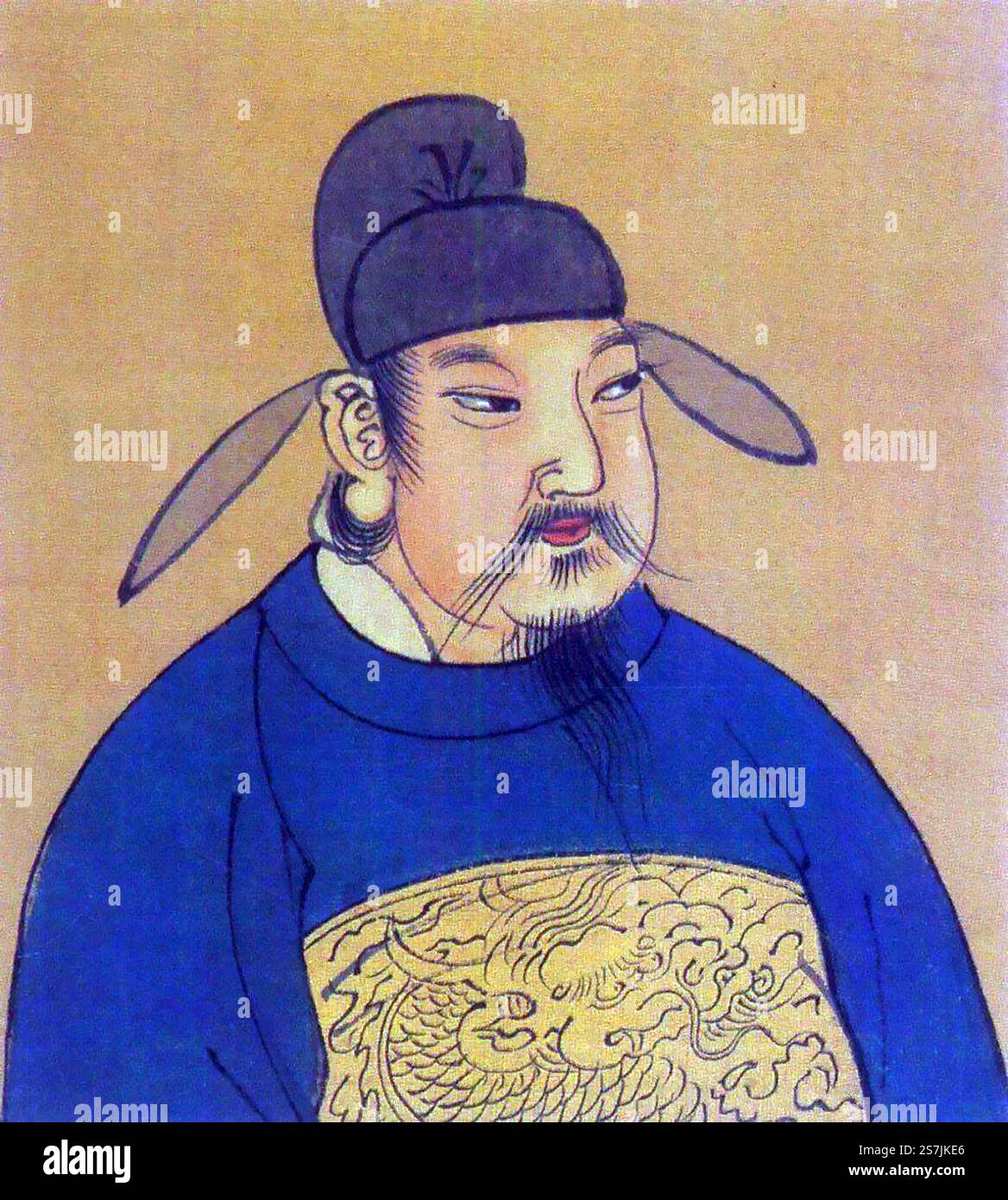 Emperor Xuanzong of Tang (685 – 762), Li Longji, emperor of the Tang dynasty of China, from 712 to 756. Stock Photohttps://www.alamy.com/image-license-details/?v=1https://www.alamy.com/emperor-xuanzong-of-tang-685-762-li-longji-emperor-of-the-tang-dynasty-of-china-from-712-to-756-image641496638.html
Emperor Xuanzong of Tang (685 – 762), Li Longji, emperor of the Tang dynasty of China, from 712 to 756. Stock Photohttps://www.alamy.com/image-license-details/?v=1https://www.alamy.com/emperor-xuanzong-of-tang-685-762-li-longji-emperor-of-the-tang-dynasty-of-china-from-712-to-756-image641496638.htmlRM2S7JKE6–Emperor Xuanzong of Tang (685 – 762), Li Longji, emperor of the Tang dynasty of China, from 712 to 756.
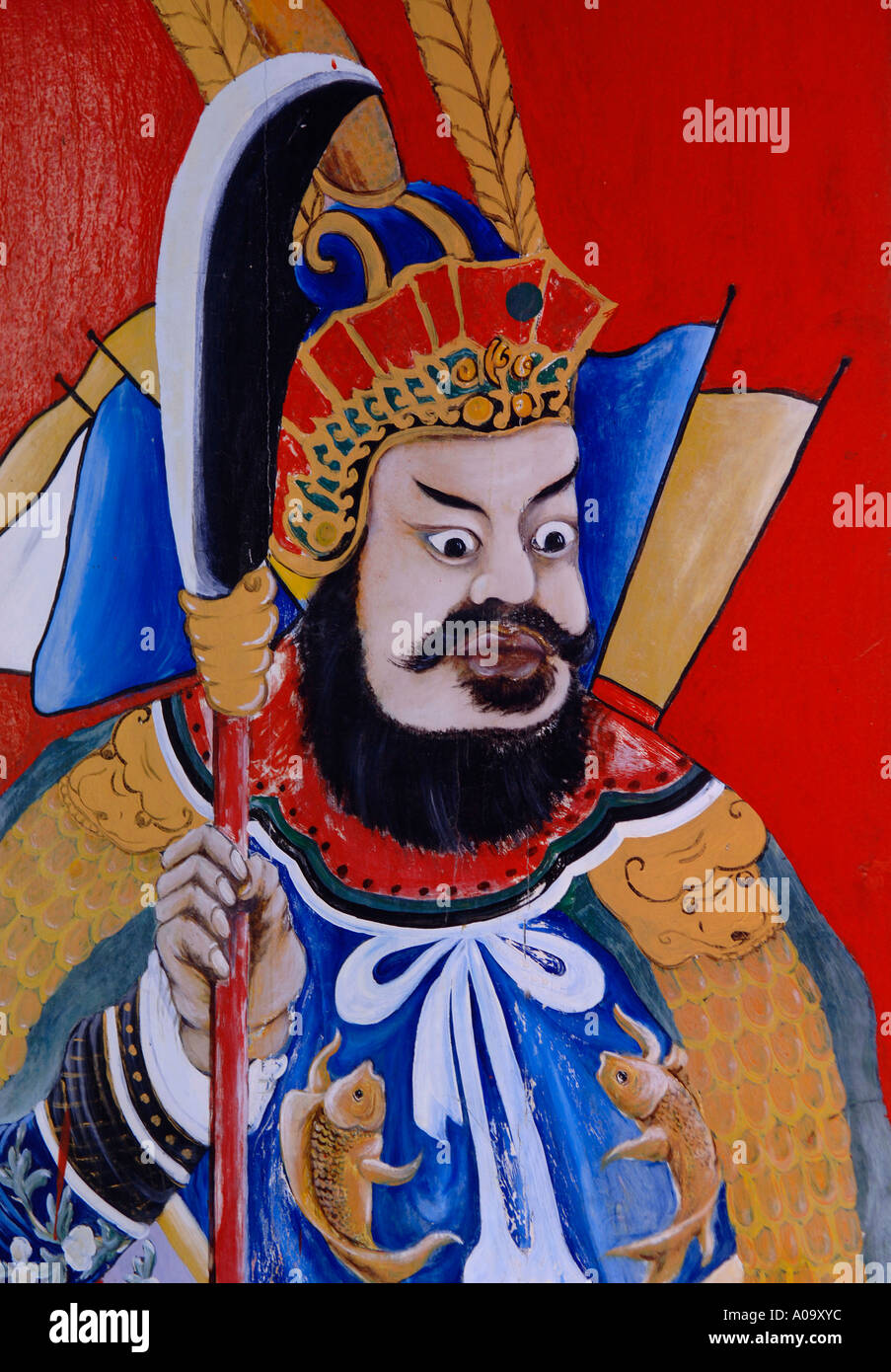 Painting of Chinese emperor Stock Photohttps://www.alamy.com/image-license-details/?v=1https://www.alamy.com/painting-of-chinese-emperor-image5673275.html
Painting of Chinese emperor Stock Photohttps://www.alamy.com/image-license-details/?v=1https://www.alamy.com/painting-of-chinese-emperor-image5673275.htmlRMA09XYC–Painting of Chinese emperor
 Seated portrait of Emperor Ming Xuanzong - Ming Dynasty, China Stock Photohttps://www.alamy.com/image-license-details/?v=1https://www.alamy.com/seated-portrait-of-emperor-ming-xuanzong-ming-dynasty-china-image388311987.html
Seated portrait of Emperor Ming Xuanzong - Ming Dynasty, China Stock Photohttps://www.alamy.com/image-license-details/?v=1https://www.alamy.com/seated-portrait-of-emperor-ming-xuanzong-ming-dynasty-china-image388311987.htmlRM2DFN3W7–Seated portrait of Emperor Ming Xuanzong - Ming Dynasty, China
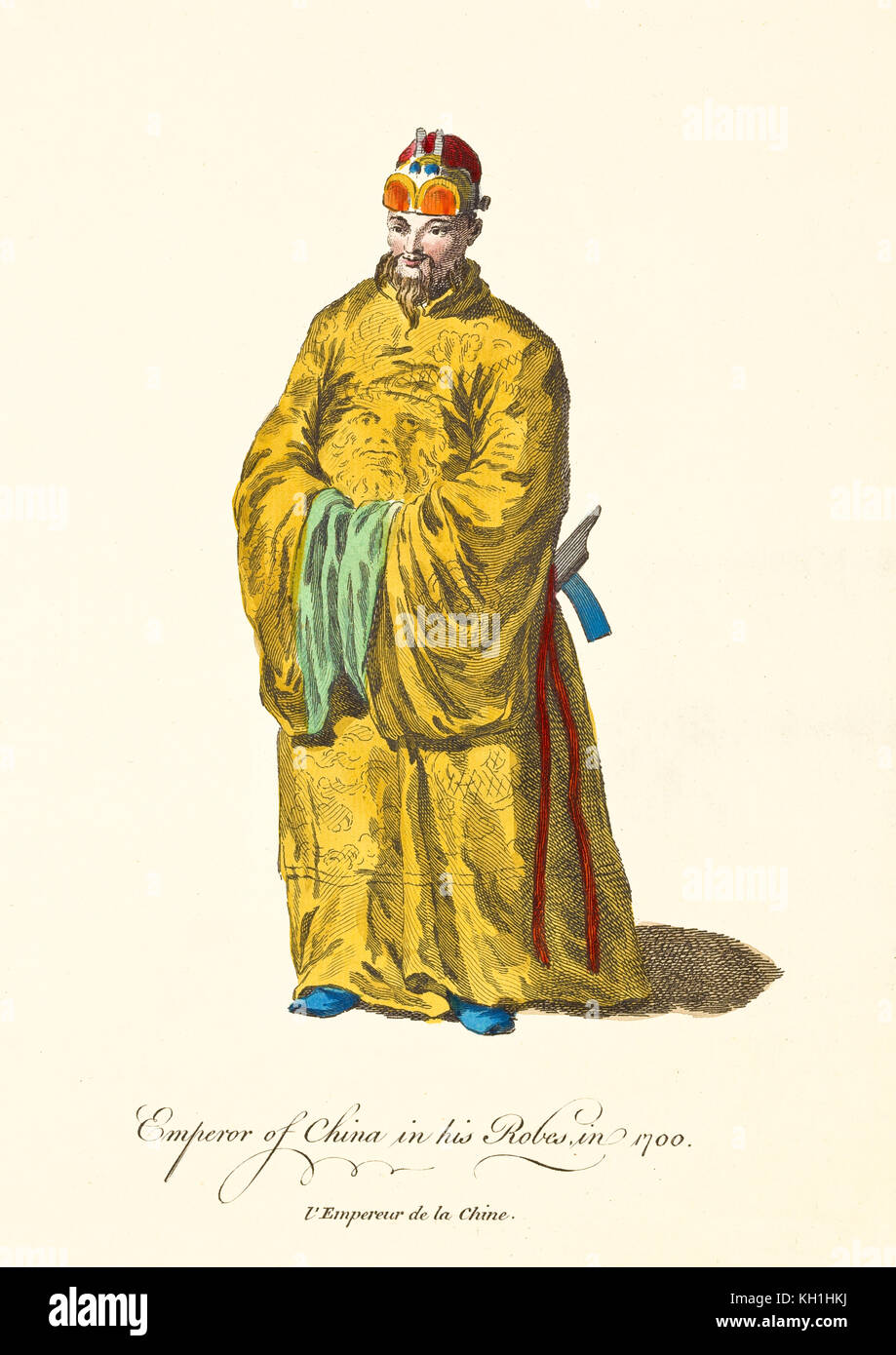 Emperor of China in traditional dresses in 1700. Spectacular gold long dress. Old illustration by J.M. Vien, publ. T. Jefferys, London, 1757-1772 Stock Photohttps://www.alamy.com/image-license-details/?v=1https://www.alamy.com/stock-image-emperor-of-china-in-traditional-dresses-in-1700-spectacular-gold-long-165378294.html
Emperor of China in traditional dresses in 1700. Spectacular gold long dress. Old illustration by J.M. Vien, publ. T. Jefferys, London, 1757-1772 Stock Photohttps://www.alamy.com/image-license-details/?v=1https://www.alamy.com/stock-image-emperor-of-china-in-traditional-dresses-in-1700-spectacular-gold-long-165378294.htmlRFKH1HKJ–Emperor of China in traditional dresses in 1700. Spectacular gold long dress. Old illustration by J.M. Vien, publ. T. Jefferys, London, 1757-1772
 Imperial Procession in Beijing, Conquests of the Chinese Emperor (series title), Conquêtes de l'Empereur de la Chine (series title), print maker: Isidore Stanislas Henri Helman, after painting by: unknown, publisher: Isidore Stanislas Henri Helman, print maker: France, after painting by: Beijing, publisher: Paris, publisher: Paris, 1786, paper, etching, engraving, height 306 mm × width 434 mm, print Stock Photohttps://www.alamy.com/image-license-details/?v=1https://www.alamy.com/imperial-procession-in-beijing-conquests-of-the-chinese-emperor-series-title-conqutes-de-lempereur-de-la-chine-series-title-print-maker-isidore-stanislas-henri-helman-after-painting-by-unknown-publisher-isidore-stanislas-henri-helman-print-maker-france-after-painting-by-beijing-publisher-paris-publisher-paris-1786-paper-etching-engraving-height-306-mm-width-434-mm-print-image599535949.html
Imperial Procession in Beijing, Conquests of the Chinese Emperor (series title), Conquêtes de l'Empereur de la Chine (series title), print maker: Isidore Stanislas Henri Helman, after painting by: unknown, publisher: Isidore Stanislas Henri Helman, print maker: France, after painting by: Beijing, publisher: Paris, publisher: Paris, 1786, paper, etching, engraving, height 306 mm × width 434 mm, print Stock Photohttps://www.alamy.com/image-license-details/?v=1https://www.alamy.com/imperial-procession-in-beijing-conquests-of-the-chinese-emperor-series-title-conqutes-de-lempereur-de-la-chine-series-title-print-maker-isidore-stanislas-henri-helman-after-painting-by-unknown-publisher-isidore-stanislas-henri-helman-print-maker-france-after-painting-by-beijing-publisher-paris-publisher-paris-1786-paper-etching-engraving-height-306-mm-width-434-mm-print-image599535949.htmlRM2WRB665–Imperial Procession in Beijing, Conquests of the Chinese Emperor (series title), Conquêtes de l'Empereur de la Chine (series title), print maker: Isidore Stanislas Henri Helman, after painting by: unknown, publisher: Isidore Stanislas Henri Helman, print maker: France, after painting by: Beijing, publisher: Paris, publisher: Paris, 1786, paper, etching, engraving, height 306 mm × width 434 mm, print
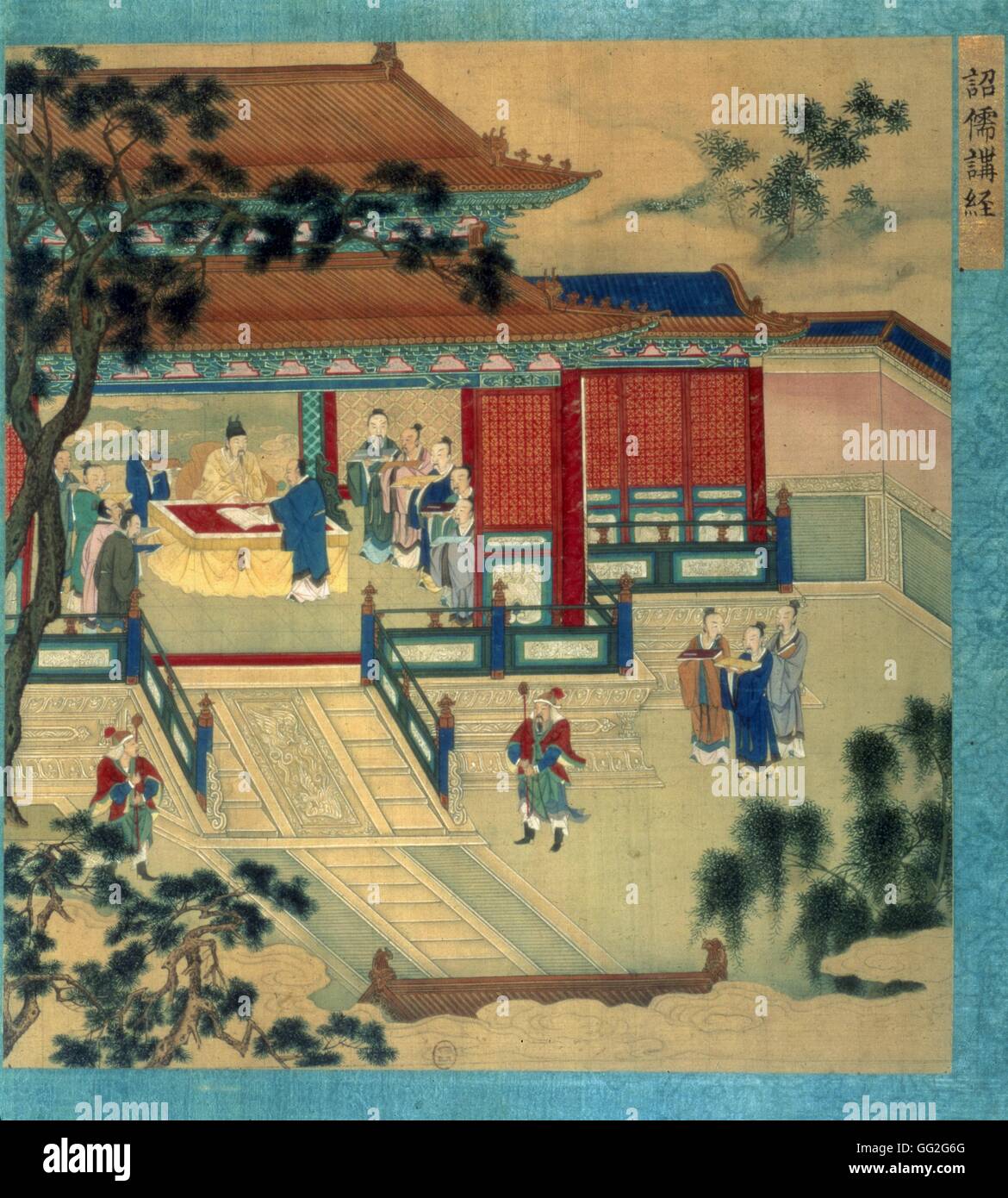 Anonymous Chinese school The Emperor of the Han dynasty with scholars translating classical texts. From 'The History of the Chinese Emperors' 18th century Painting on silk Paris, Bibliothèque Nationale de France Stock Photohttps://www.alamy.com/image-license-details/?v=1https://www.alamy.com/stock-photo-anonymous-chinese-school-the-emperor-of-the-han-dynasty-with-scholars-113153336.html
Anonymous Chinese school The Emperor of the Han dynasty with scholars translating classical texts. From 'The History of the Chinese Emperors' 18th century Painting on silk Paris, Bibliothèque Nationale de France Stock Photohttps://www.alamy.com/image-license-details/?v=1https://www.alamy.com/stock-photo-anonymous-chinese-school-the-emperor-of-the-han-dynasty-with-scholars-113153336.htmlRMGG2G6G–Anonymous Chinese school The Emperor of the Han dynasty with scholars translating classical texts. From 'The History of the Chinese Emperors' 18th century Painting on silk Paris, Bibliothèque Nationale de France
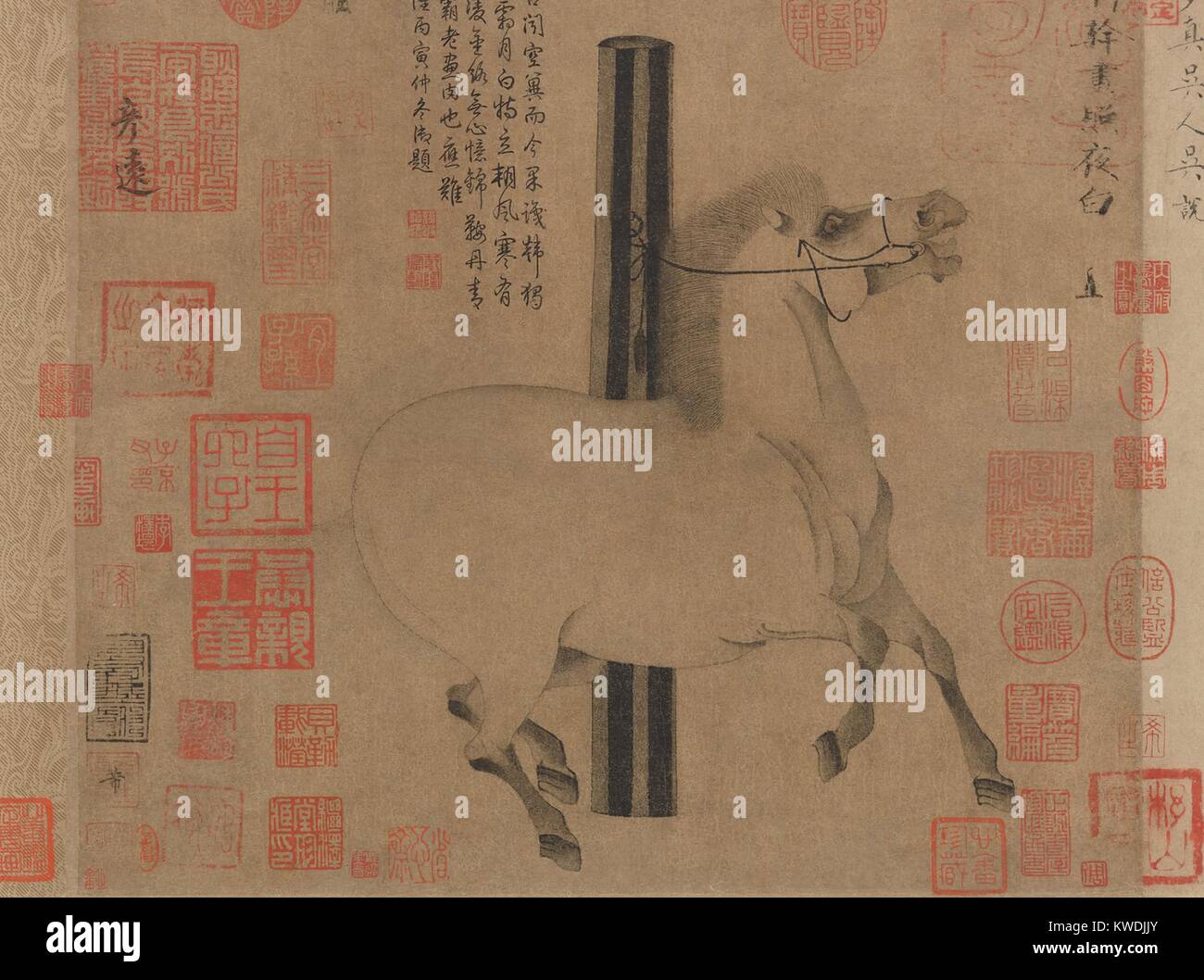 NIGHT SHINING WHITE, by Han Gan, 743-756, Chinese, Tang dynasty, painting, ink on paper. The animated horse of 8th century Emperor Xuanzong is portrayed with flaring nostrils and raised hoofs. This is the most famous work by Han Gan, the leading horse painter of his time. The seals and inscriptions added by later owners are a custom of Chinese connoisseurship (BSLOC 2017 16 6) Stock Photohttps://www.alamy.com/image-license-details/?v=1https://www.alamy.com/stock-photo-night-shining-white-by-han-gan-743-756-chinese-tang-dynasty-painting-170559731.html
NIGHT SHINING WHITE, by Han Gan, 743-756, Chinese, Tang dynasty, painting, ink on paper. The animated horse of 8th century Emperor Xuanzong is portrayed with flaring nostrils and raised hoofs. This is the most famous work by Han Gan, the leading horse painter of his time. The seals and inscriptions added by later owners are a custom of Chinese connoisseurship (BSLOC 2017 16 6) Stock Photohttps://www.alamy.com/image-license-details/?v=1https://www.alamy.com/stock-photo-night-shining-white-by-han-gan-743-756-chinese-tang-dynasty-painting-170559731.htmlRMKWDJJY–NIGHT SHINING WHITE, by Han Gan, 743-756, Chinese, Tang dynasty, painting, ink on paper. The animated horse of 8th century Emperor Xuanzong is portrayed with flaring nostrils and raised hoofs. This is the most famous work by Han Gan, the leading horse painter of his time. The seals and inscriptions added by later owners are a custom of Chinese connoisseurship (BSLOC 2017 16 6)
 Ancient Painting Stock Photohttps://www.alamy.com/image-license-details/?v=1https://www.alamy.com/stock-photo-ancient-painting-15730002.html
Ancient Painting Stock Photohttps://www.alamy.com/image-license-details/?v=1https://www.alamy.com/stock-photo-ancient-painting-15730002.htmlRFAPAJ4K–Ancient Painting
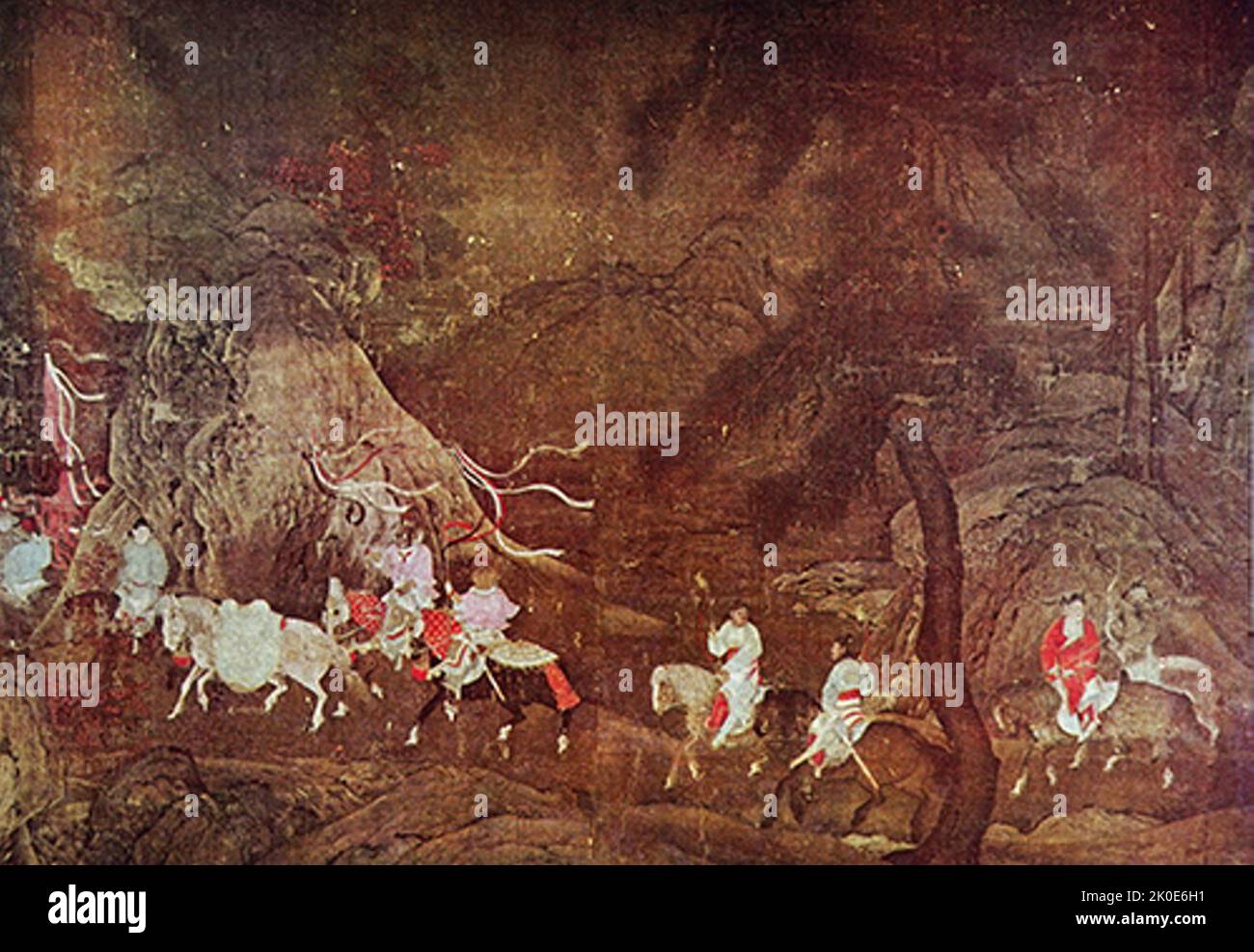 Emperor Minghuang's Voyage to Shu, The Tribute Horse. By an anonymous 12th-century artist. Detail of a vertical scroll, ink and colours on silk. Chinese painting. Stock Photohttps://www.alamy.com/image-license-details/?v=1https://www.alamy.com/emperor-minghuangs-voyage-to-shu-the-tribute-horse-by-an-anonymous-12th-century-artist-detail-of-a-vertical-scroll-ink-and-colours-on-silk-chinese-painting-image482202813.html
Emperor Minghuang's Voyage to Shu, The Tribute Horse. By an anonymous 12th-century artist. Detail of a vertical scroll, ink and colours on silk. Chinese painting. Stock Photohttps://www.alamy.com/image-license-details/?v=1https://www.alamy.com/emperor-minghuangs-voyage-to-shu-the-tribute-horse-by-an-anonymous-12th-century-artist-detail-of-a-vertical-scroll-ink-and-colours-on-silk-chinese-painting-image482202813.htmlRM2K0E6H1–Emperor Minghuang's Voyage to Shu, The Tribute Horse. By an anonymous 12th-century artist. Detail of a vertical scroll, ink and colours on silk. Chinese painting.
 vintage authentic oriental illustration Stock Photohttps://www.alamy.com/image-license-details/?v=1https://www.alamy.com/vintage-authentic-oriental-illustration-image184306573.html
vintage authentic oriental illustration Stock Photohttps://www.alamy.com/image-license-details/?v=1https://www.alamy.com/vintage-authentic-oriental-illustration-image184306573.htmlRMMKRTWH–vintage authentic oriental illustration
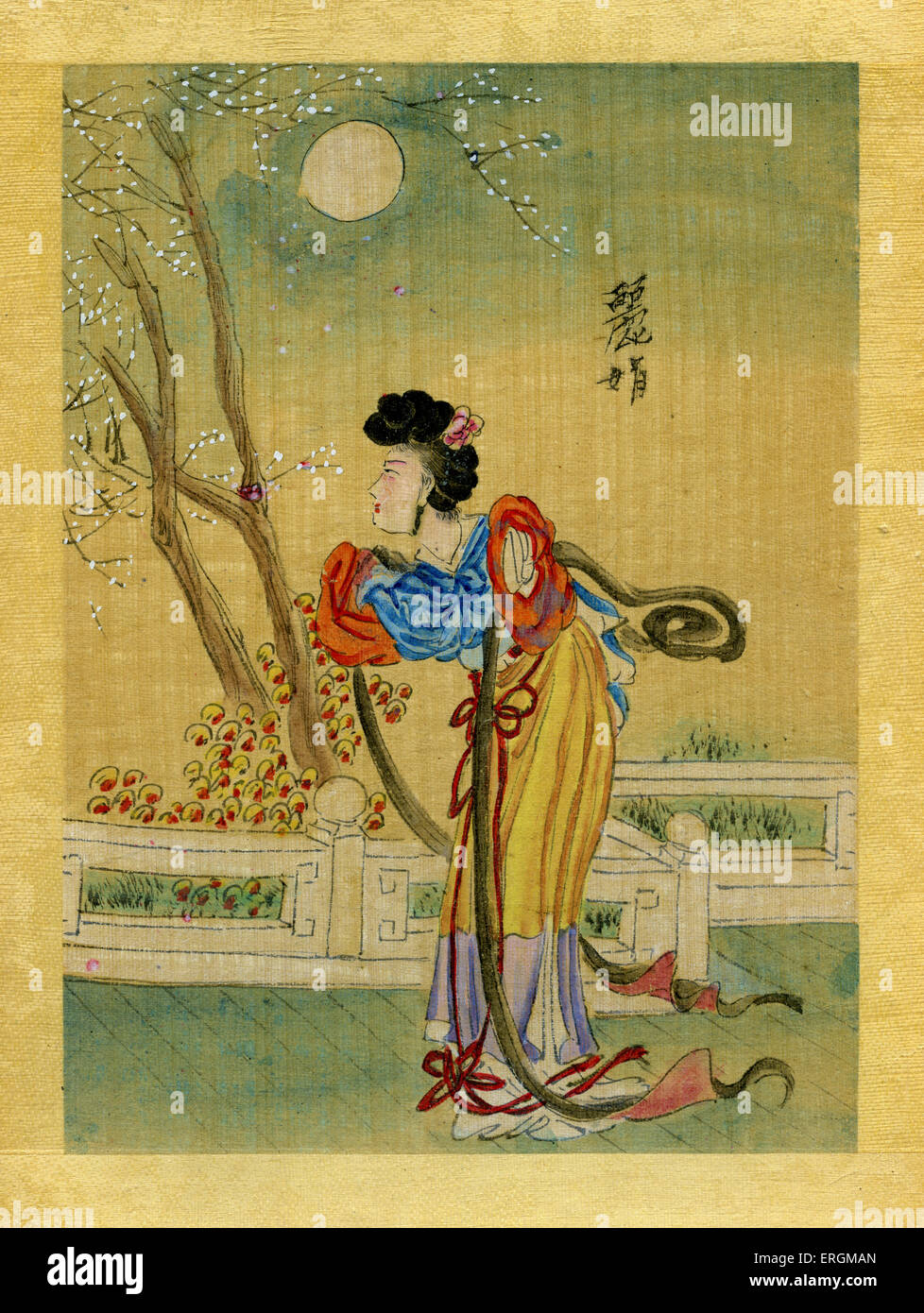 Li-Chuan/ Madam Li / Li Furen/ Lady Li. A favourite concubine of Emperor Wu of Han (Han Wudi)- the seventh emperor of the Han Stock Photohttps://www.alamy.com/image-license-details/?v=1https://www.alamy.com/stock-photo-li-chuan-madam-li-li-furen-lady-li-a-favourite-concubine-of-emperor-83345773.html
Li-Chuan/ Madam Li / Li Furen/ Lady Li. A favourite concubine of Emperor Wu of Han (Han Wudi)- the seventh emperor of the Han Stock Photohttps://www.alamy.com/image-license-details/?v=1https://www.alamy.com/stock-photo-li-chuan-madam-li-li-furen-lady-li-a-favourite-concubine-of-emperor-83345773.htmlRMERGMAN–Li-Chuan/ Madam Li / Li Furen/ Lady Li. A favourite concubine of Emperor Wu of Han (Han Wudi)- the seventh emperor of the Han
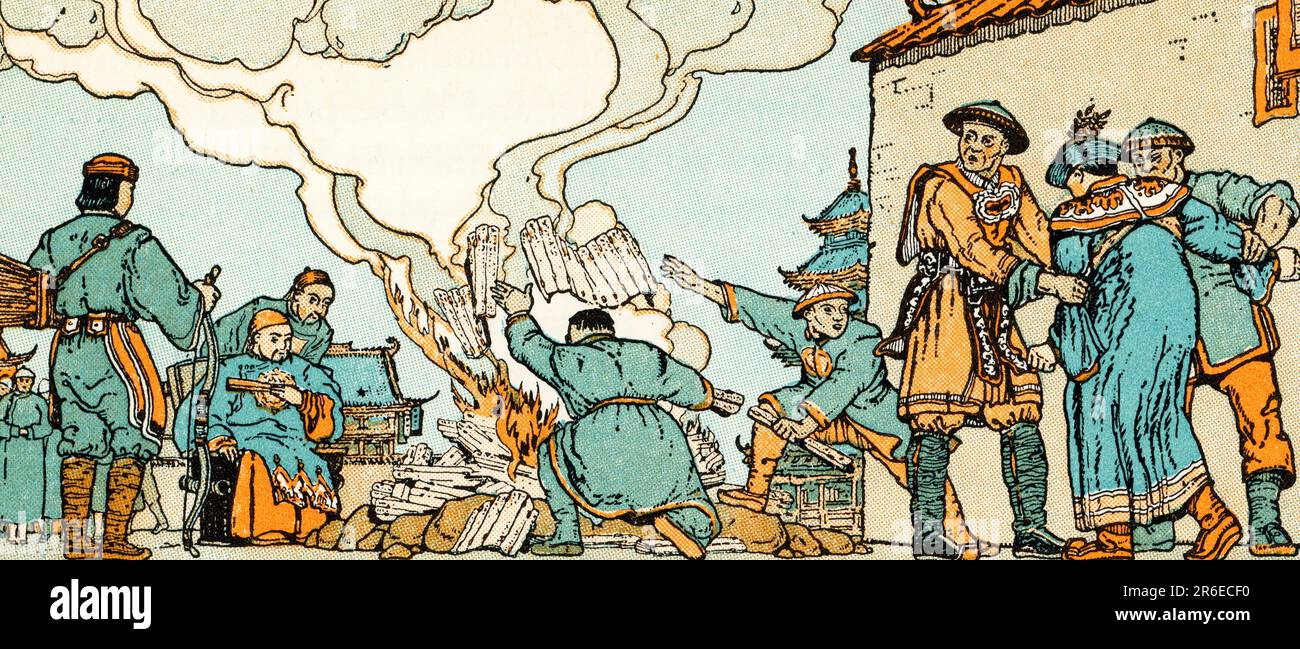 Qin Shi Huang (259-210 BC) having the books of Confucius burned. Qin Shi Huang was the founder of the Qin dynasty and the first emperor of a unified China. Later Confucian historians condemned the emperor, alleging that he burned the classics and buried Confucian scholars alive. They eventually compiled a list of the Ten Crimes of Qin to highlight his tyrannical actions. Stock Photohttps://www.alamy.com/image-license-details/?v=1https://www.alamy.com/qin-shi-huang-259-210-bc-having-the-books-of-confucius-burned-qin-shi-huang-was-the-founder-of-the-qin-dynasty-and-the-first-emperor-of-a-unified-china-later-confucian-historians-condemned-the-emperor-alleging-that-he-burned-the-classics-and-buried-confucian-scholars-alive-they-eventually-compiled-a-list-of-the-ten-crimes-of-qin-to-highlight-his-tyrannical-actions-image554736868.html
Qin Shi Huang (259-210 BC) having the books of Confucius burned. Qin Shi Huang was the founder of the Qin dynasty and the first emperor of a unified China. Later Confucian historians condemned the emperor, alleging that he burned the classics and buried Confucian scholars alive. They eventually compiled a list of the Ten Crimes of Qin to highlight his tyrannical actions. Stock Photohttps://www.alamy.com/image-license-details/?v=1https://www.alamy.com/qin-shi-huang-259-210-bc-having-the-books-of-confucius-burned-qin-shi-huang-was-the-founder-of-the-qin-dynasty-and-the-first-emperor-of-a-unified-china-later-confucian-historians-condemned-the-emperor-alleging-that-he-burned-the-classics-and-buried-confucian-scholars-alive-they-eventually-compiled-a-list-of-the-ten-crimes-of-qin-to-highlight-his-tyrannical-actions-image554736868.htmlRM2R6ECF0–Qin Shi Huang (259-210 BC) having the books of Confucius burned. Qin Shi Huang was the founder of the Qin dynasty and the first emperor of a unified China. Later Confucian historians condemned the emperor, alleging that he burned the classics and buried Confucian scholars alive. They eventually compiled a list of the Ten Crimes of Qin to highlight his tyrannical actions.
 Two Salukis, a painting by the Hsuan Te emperor (reigned 1426-36) Stock Photohttps://www.alamy.com/image-license-details/?v=1https://www.alamy.com/two-salukis-a-painting-by-the-hsuan-te-emperor-reigned-1426-36-image268800857.html
Two Salukis, a painting by the Hsuan Te emperor (reigned 1426-36) Stock Photohttps://www.alamy.com/image-license-details/?v=1https://www.alamy.com/two-salukis-a-painting-by-the-hsuan-te-emperor-reigned-1426-36-image268800857.htmlRMWH8X6H–Two Salukis, a painting by the Hsuan Te emperor (reigned 1426-36)
 Scroll of Nine Songs: Eastern Emperor Tai Yi Stock Photohttps://www.alamy.com/image-license-details/?v=1https://www.alamy.com/scroll-of-nine-songs-eastern-emperor-tai-yi-image179866294.html
Scroll of Nine Songs: Eastern Emperor Tai Yi Stock Photohttps://www.alamy.com/image-license-details/?v=1https://www.alamy.com/scroll-of-nine-songs-eastern-emperor-tai-yi-image179866294.htmlRMMCHH86–Scroll of Nine Songs: Eastern Emperor Tai Yi
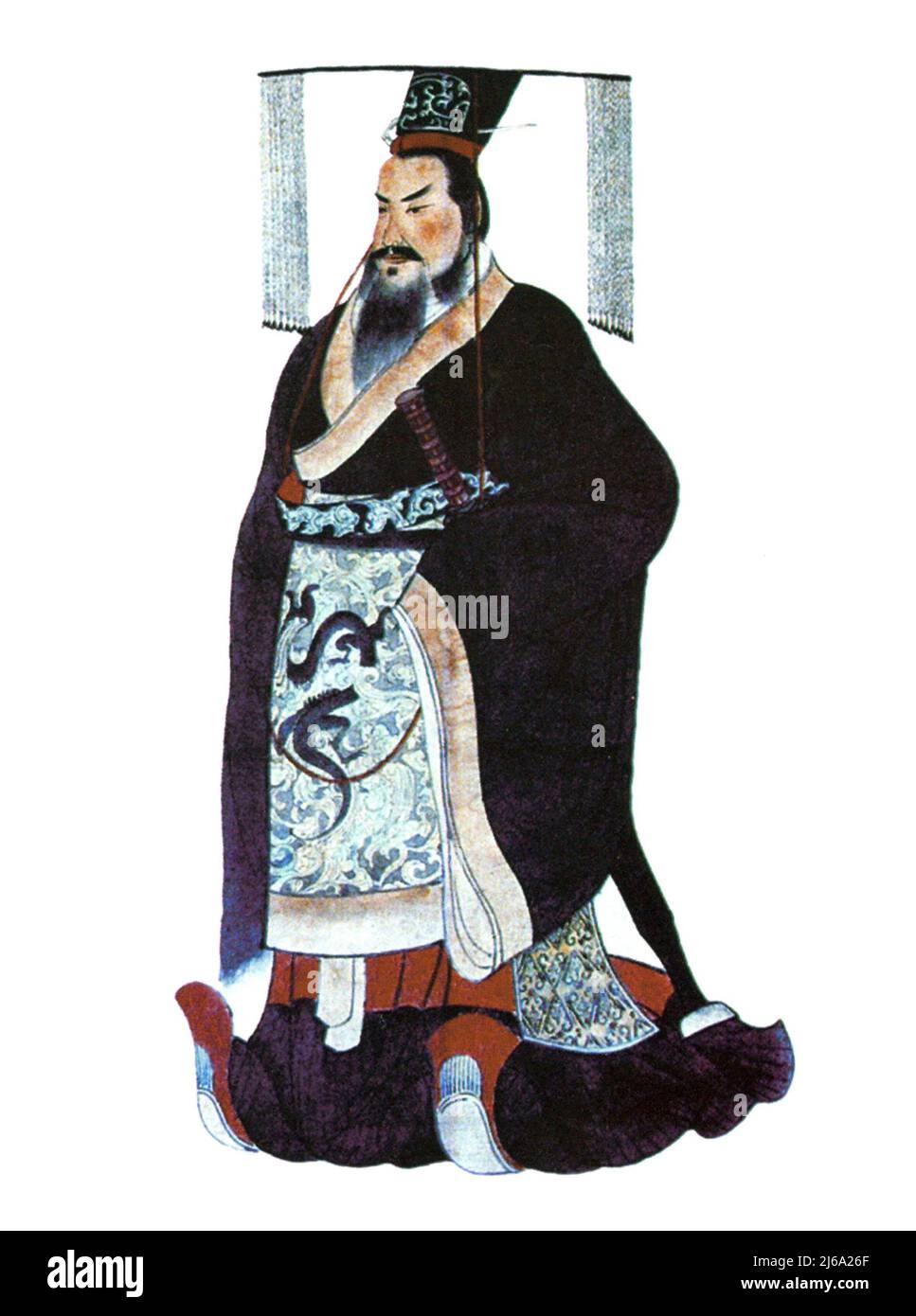 Qin Shi Huang (259 BC-210 BC). Portrait of the founder of the Qin dynasty and the first emperor of a unified China. Illustration, c.1850, from 'China's terracotta army and the First Emperor's mausoleum' by Zhongyi Yuan Stock Photohttps://www.alamy.com/image-license-details/?v=1https://www.alamy.com/qin-shi-huang-259-bc-210-bc-portrait-of-the-founder-of-the-qin-dynasty-and-the-first-emperor-of-a-unified-china-illustration-c1850-from-chinas-terracotta-army-and-the-first-emperors-mausoleum-by-zhongyi-yuan-image468589143.html
Qin Shi Huang (259 BC-210 BC). Portrait of the founder of the Qin dynasty and the first emperor of a unified China. Illustration, c.1850, from 'China's terracotta army and the First Emperor's mausoleum' by Zhongyi Yuan Stock Photohttps://www.alamy.com/image-license-details/?v=1https://www.alamy.com/qin-shi-huang-259-bc-210-bc-portrait-of-the-founder-of-the-qin-dynasty-and-the-first-emperor-of-a-unified-china-illustration-c1850-from-chinas-terracotta-army-and-the-first-emperors-mausoleum-by-zhongyi-yuan-image468589143.htmlRM2J6A26F–Qin Shi Huang (259 BC-210 BC). Portrait of the founder of the Qin dynasty and the first emperor of a unified China. Illustration, c.1850, from 'China's terracotta army and the First Emperor's mausoleum' by Zhongyi Yuan
 Chinese Palace scene Stock Photohttps://www.alamy.com/image-license-details/?v=1https://www.alamy.com/stock-photo-chinese-palace-scene-18752044.html
Chinese Palace scene Stock Photohttps://www.alamy.com/image-license-details/?v=1https://www.alamy.com/stock-photo-chinese-palace-scene-18752044.htmlRFB2E6BT–Chinese Palace scene
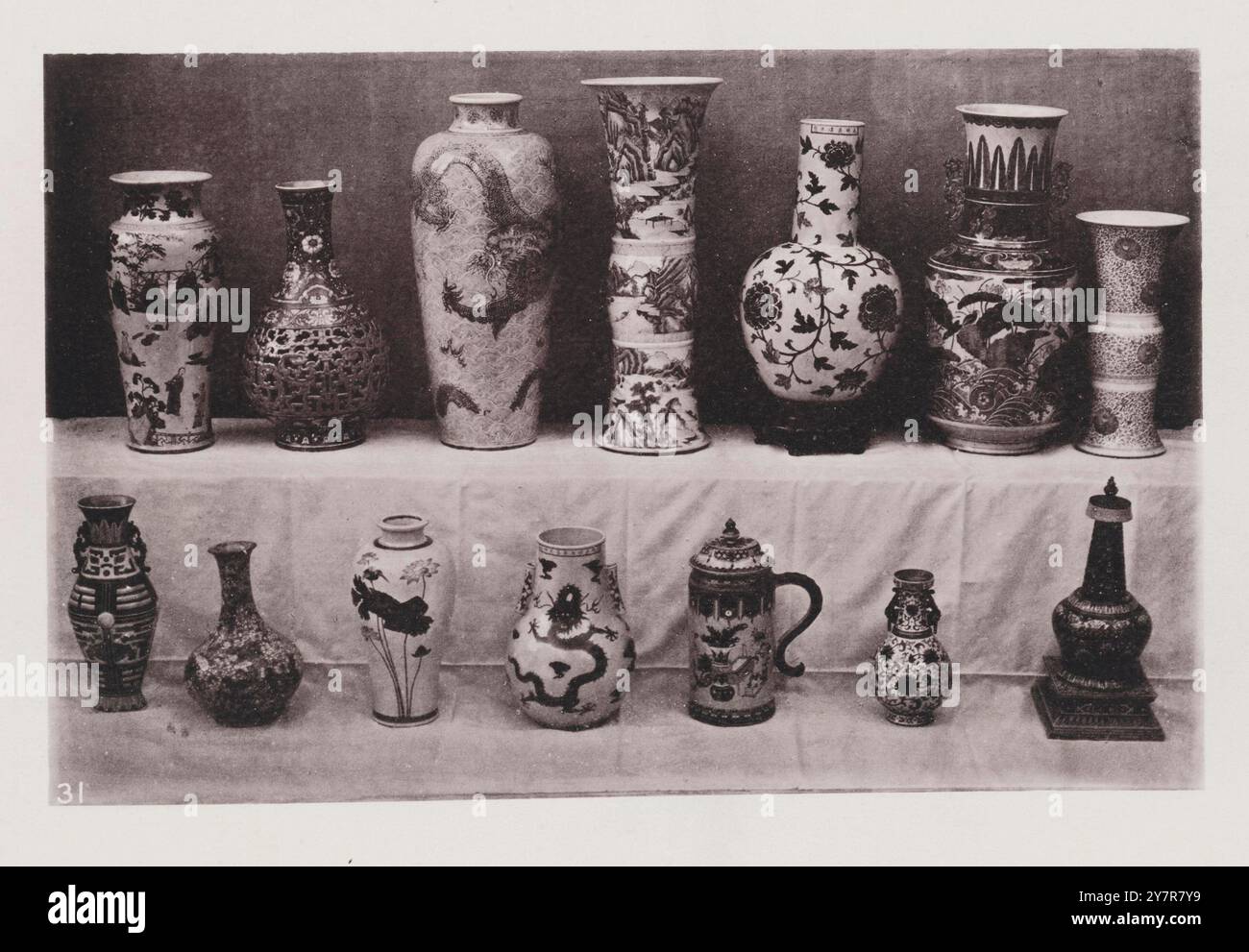 Vintage photo of an ancient Chinese porcelain ware. The finest China porcelain is supplied from a district east of the Poyang Lake from 'The celebrated manufactories of Kingteh-chin, named after an emperor of the Sung dynasty, in whose reign, AD. 1004, they were established.' The central vase presented in the upper row in this picuture affords an excellent example of landscape painting during the early part of the present dynasty, probably of the reign of Kanghi (a.d. 1662-1722). The next vase to the right, set on a stand of wood, is probably the finest example in the collection, exhibiting f Stock Photohttps://www.alamy.com/image-license-details/?v=1https://www.alamy.com/vintage-photo-of-an-ancient-chinese-porcelain-ware-the-finest-china-porcelain-is-supplied-from-a-district-east-of-the-poyang-lake-from-the-celebrated-manufactories-of-kingteh-chin-named-after-an-emperor-of-the-sung-dynasty-in-whose-reign-ad-1004-they-were-established-the-central-vase-presented-in-the-upper-row-in-this-picuture-affords-an-excellent-example-of-landscape-painting-during-the-early-part-of-the-present-dynasty-probably-of-the-reign-of-kanghi-ad-1662-1722-the-next-vase-to-the-right-set-on-a-stand-of-wood-is-probably-the-finest-example-in-the-collection-exhibiting-f-image624386989.html
Vintage photo of an ancient Chinese porcelain ware. The finest China porcelain is supplied from a district east of the Poyang Lake from 'The celebrated manufactories of Kingteh-chin, named after an emperor of the Sung dynasty, in whose reign, AD. 1004, they were established.' The central vase presented in the upper row in this picuture affords an excellent example of landscape painting during the early part of the present dynasty, probably of the reign of Kanghi (a.d. 1662-1722). The next vase to the right, set on a stand of wood, is probably the finest example in the collection, exhibiting f Stock Photohttps://www.alamy.com/image-license-details/?v=1https://www.alamy.com/vintage-photo-of-an-ancient-chinese-porcelain-ware-the-finest-china-porcelain-is-supplied-from-a-district-east-of-the-poyang-lake-from-the-celebrated-manufactories-of-kingteh-chin-named-after-an-emperor-of-the-sung-dynasty-in-whose-reign-ad-1004-they-were-established-the-central-vase-presented-in-the-upper-row-in-this-picuture-affords-an-excellent-example-of-landscape-painting-during-the-early-part-of-the-present-dynasty-probably-of-the-reign-of-kanghi-ad-1662-1722-the-next-vase-to-the-right-set-on-a-stand-of-wood-is-probably-the-finest-example-in-the-collection-exhibiting-f-image624386989.htmlRM2Y7R7Y9–Vintage photo of an ancient Chinese porcelain ware. The finest China porcelain is supplied from a district east of the Poyang Lake from 'The celebrated manufactories of Kingteh-chin, named after an emperor of the Sung dynasty, in whose reign, AD. 1004, they were established.' The central vase presented in the upper row in this picuture affords an excellent example of landscape painting during the early part of the present dynasty, probably of the reign of Kanghi (a.d. 1662-1722). The next vase to the right, set on a stand of wood, is probably the finest example in the collection, exhibiting f
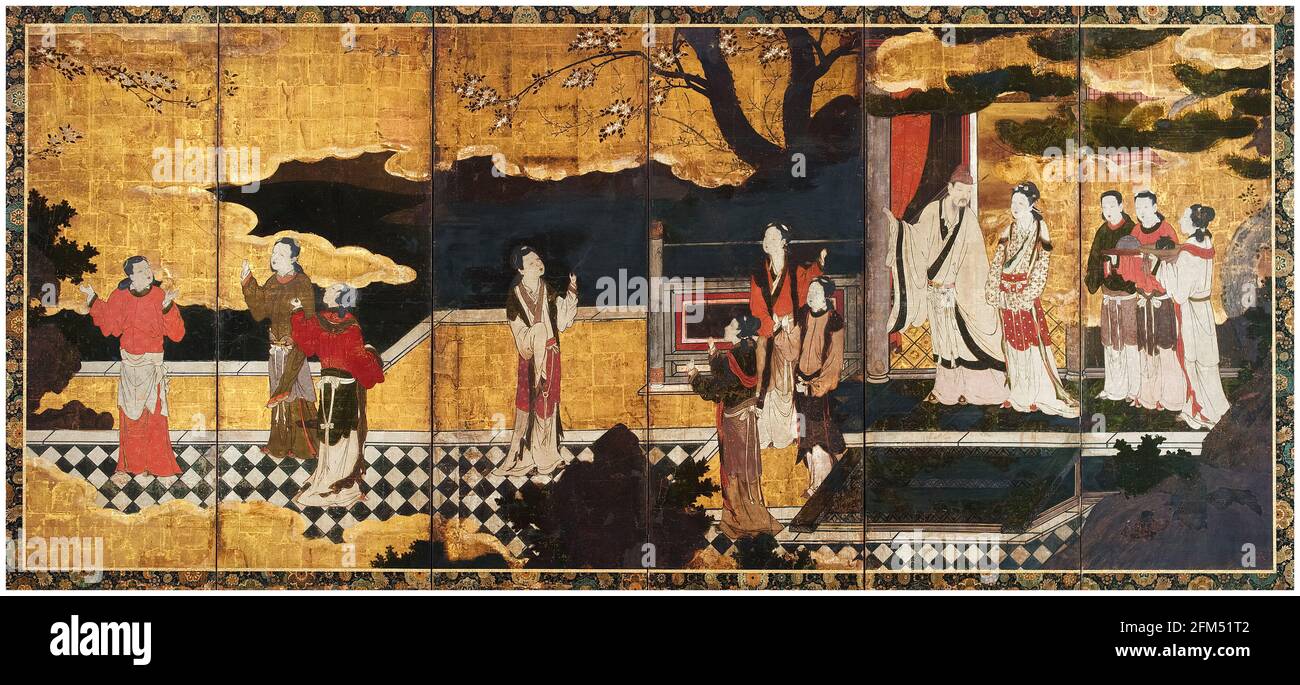 The Chinese Emperor Xuanzong of Tang (685-762), and Concubine Yang Guifei (719-756), with attendants on a terrace, painting by Kano Eitoku, 1550-1590 Stock Photohttps://www.alamy.com/image-license-details/?v=1https://www.alamy.com/the-chineseemperor-xuanzong-of-tang-685-762-and-concubine-yang-guifei-719-756-with-attendants-on-a-terrace-painting-by-kano-eitoku-1550-1590-image425453170.html
The Chinese Emperor Xuanzong of Tang (685-762), and Concubine Yang Guifei (719-756), with attendants on a terrace, painting by Kano Eitoku, 1550-1590 Stock Photohttps://www.alamy.com/image-license-details/?v=1https://www.alamy.com/the-chineseemperor-xuanzong-of-tang-685-762-and-concubine-yang-guifei-719-756-with-attendants-on-a-terrace-painting-by-kano-eitoku-1550-1590-image425453170.htmlRM2FM51T2–The Chinese Emperor Xuanzong of Tang (685-762), and Concubine Yang Guifei (719-756), with attendants on a terrace, painting by Kano Eitoku, 1550-1590
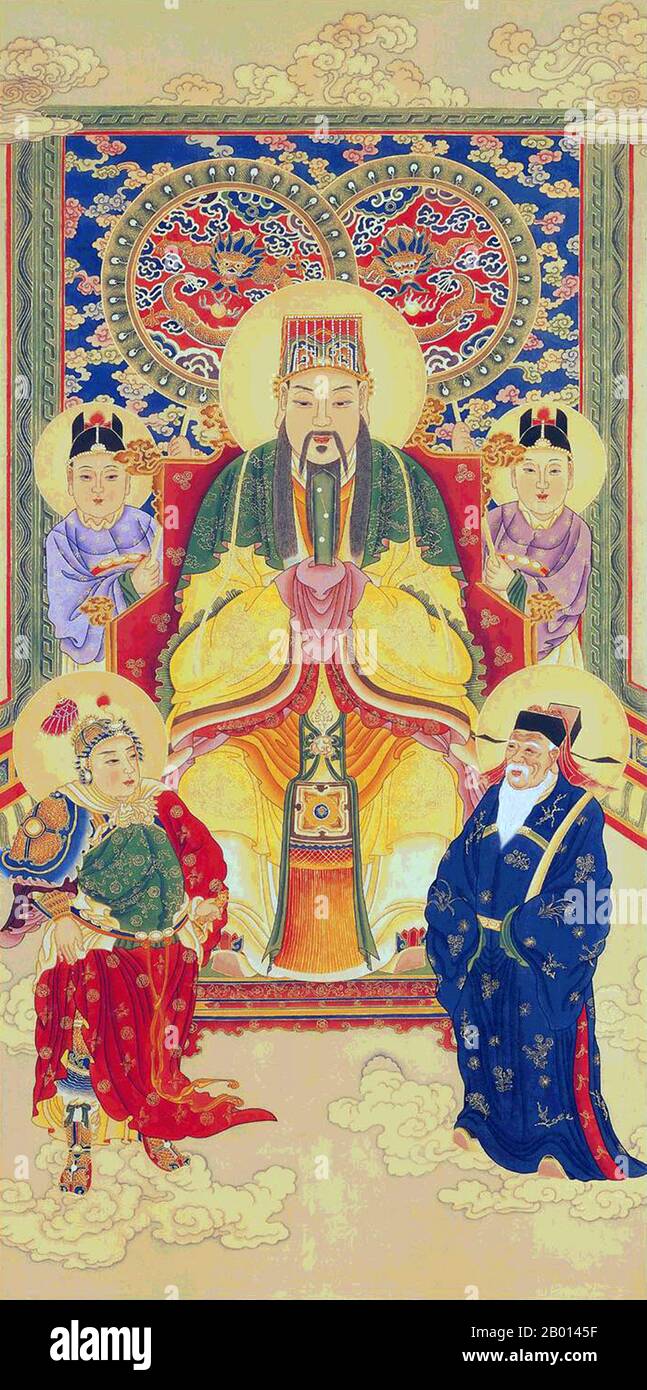 China: Yuhuang Dadi, the 'Jade Emperor', supreme deity of Daoism. Hanging scroll painting, c. 20th century. The Jade Emperor is the Daoist ruler of Heaven and all realms of existence below including that of Man and Hell, according to Daoist mythology. He is one of the most important gods of the Chinese traditional religion pantheon. In Daoist belief, the Jade Emperor governs all of the mortals' realm and below, but ranks below the Three Pure Ones. Stock Photohttps://www.alamy.com/image-license-details/?v=1https://www.alamy.com/china-yuhuang-dadi-the-jade-emperor-supreme-deity-of-daoism-hanging-scroll-painting-c-20th-century-the-jade-emperor-is-the-daoist-ruler-of-heaven-and-all-realms-of-existence-below-including-that-of-man-and-hell-according-to-daoist-mythology-he-is-one-of-the-most-important-gods-of-the-chinese-traditional-religion-pantheon-in-daoist-belief-the-jade-emperor-governs-all-of-the-mortals-realm-and-below-but-ranks-below-the-three-pure-ones-image344232603.html
China: Yuhuang Dadi, the 'Jade Emperor', supreme deity of Daoism. Hanging scroll painting, c. 20th century. The Jade Emperor is the Daoist ruler of Heaven and all realms of existence below including that of Man and Hell, according to Daoist mythology. He is one of the most important gods of the Chinese traditional religion pantheon. In Daoist belief, the Jade Emperor governs all of the mortals' realm and below, but ranks below the Three Pure Ones. Stock Photohttps://www.alamy.com/image-license-details/?v=1https://www.alamy.com/china-yuhuang-dadi-the-jade-emperor-supreme-deity-of-daoism-hanging-scroll-painting-c-20th-century-the-jade-emperor-is-the-daoist-ruler-of-heaven-and-all-realms-of-existence-below-including-that-of-man-and-hell-according-to-daoist-mythology-he-is-one-of-the-most-important-gods-of-the-chinese-traditional-religion-pantheon-in-daoist-belief-the-jade-emperor-governs-all-of-the-mortals-realm-and-below-but-ranks-below-the-three-pure-ones-image344232603.htmlRM2B0145F–China: Yuhuang Dadi, the 'Jade Emperor', supreme deity of Daoism. Hanging scroll painting, c. 20th century. The Jade Emperor is the Daoist ruler of Heaven and all realms of existence below including that of Man and Hell, according to Daoist mythology. He is one of the most important gods of the Chinese traditional religion pantheon. In Daoist belief, the Jade Emperor governs all of the mortals' realm and below, but ranks below the Three Pure Ones.
 Full scroll of the Emperor Taizong Receiving the Tibetan Envoy. Song dynasty by Yan Liben Stock Photohttps://www.alamy.com/image-license-details/?v=1https://www.alamy.com/full-scroll-of-the-emperor-taizong-receiving-the-tibetan-envoy-song-dynasty-by-yan-liben-image573255769.html
Full scroll of the Emperor Taizong Receiving the Tibetan Envoy. Song dynasty by Yan Liben Stock Photohttps://www.alamy.com/image-license-details/?v=1https://www.alamy.com/full-scroll-of-the-emperor-taizong-receiving-the-tibetan-envoy-song-dynasty-by-yan-liben-image573255769.htmlRM2T8J1G9–Full scroll of the Emperor Taizong Receiving the Tibetan Envoy. Song dynasty by Yan Liben
 Mandarin - Chinese Art, Painting at Chinese Temple, Singaraja, North Bali, Indonesia Stock Photohttps://www.alamy.com/image-license-details/?v=1https://www.alamy.com/mandarin-chinese-art-painting-at-chinese-temple-singaraja-north-bali-image5671088.html
Mandarin - Chinese Art, Painting at Chinese Temple, Singaraja, North Bali, Indonesia Stock Photohttps://www.alamy.com/image-license-details/?v=1https://www.alamy.com/mandarin-chinese-art-painting-at-chinese-temple-singaraja-north-bali-image5671088.htmlRFA09FR1–Mandarin - Chinese Art, Painting at Chinese Temple, Singaraja, North Bali, Indonesia
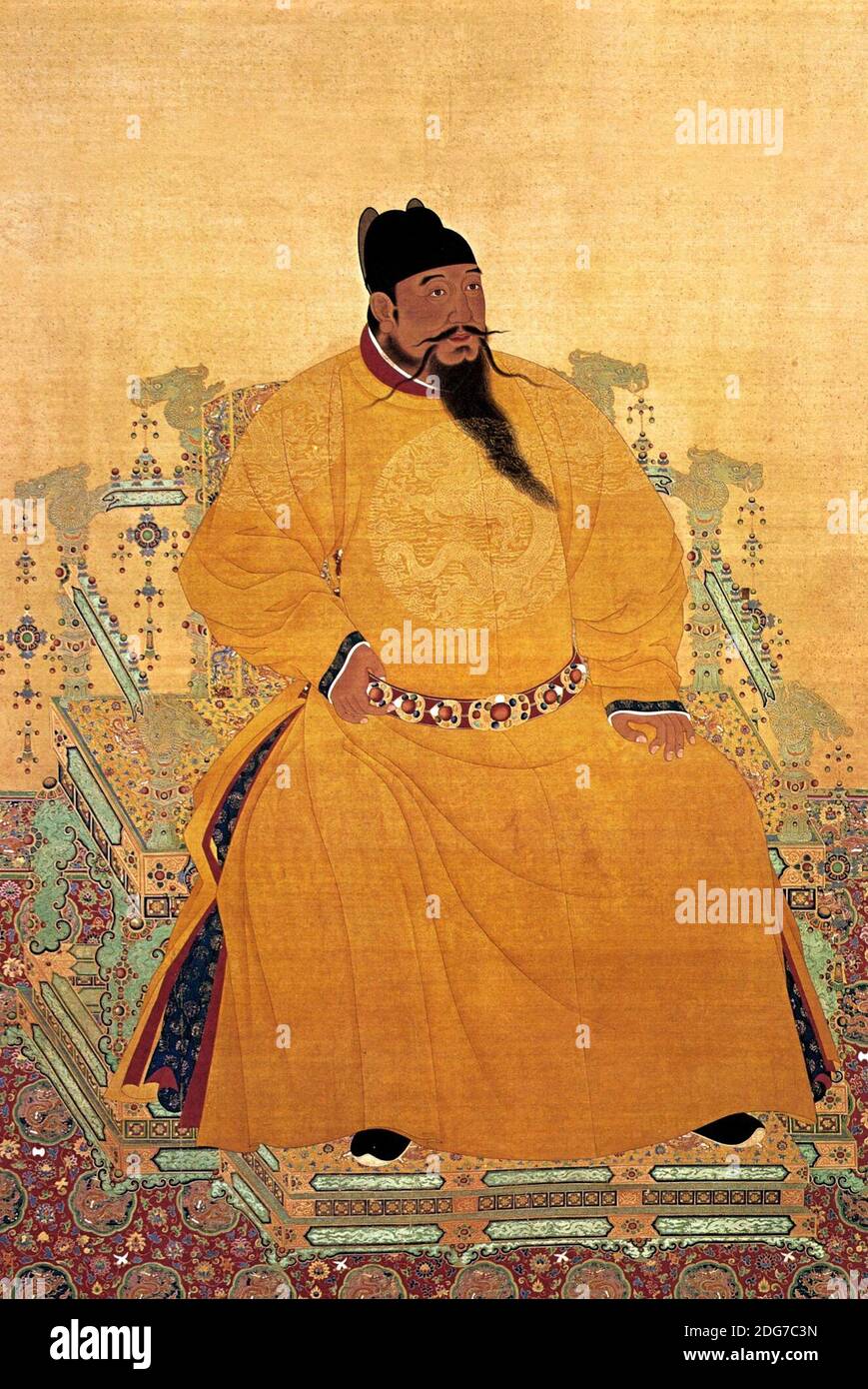 Emperor Chengzu of the Ming Dynasty Stock Photohttps://www.alamy.com/image-license-details/?v=1https://www.alamy.com/emperor-chengzu-of-the-ming-dynasty-image388625769.html
Emperor Chengzu of the Ming Dynasty Stock Photohttps://www.alamy.com/image-license-details/?v=1https://www.alamy.com/emperor-chengzu-of-the-ming-dynasty-image388625769.htmlRM2DG7C3N–Emperor Chengzu of the Ming Dynasty
 Chinese Shrine,Temple,in Angsila,Chonburi,Thailand.Asia Stock Photohttps://www.alamy.com/image-license-details/?v=1https://www.alamy.com/stock-photo-chinese-shrinetemplein-angsilachonburithailandasia-36890742.html
Chinese Shrine,Temple,in Angsila,Chonburi,Thailand.Asia Stock Photohttps://www.alamy.com/image-license-details/?v=1https://www.alamy.com/stock-photo-chinese-shrinetemplein-angsilachonburithailandasia-36890742.htmlRFC40EEE–Chinese Shrine,Temple,in Angsila,Chonburi,Thailand.Asia
 Imperial Procession in Beijing, Conquests of the Chinese Emperor (series title), Conquêtes de l'Empereur de la Chine (series title), print maker: Isidore Stanislas Henri Helman, after painting by: unknown, publisher: Isidore Stanislas Henri Helman, print maker: France, after painting by: Beijing, publisher: Paris, publisher: Paris, 1786, paper, etching, engraving, height 305 mm × width 434 mm, print Stock Photohttps://www.alamy.com/image-license-details/?v=1https://www.alamy.com/imperial-procession-in-beijing-conquests-of-the-chinese-emperor-series-title-conqutes-de-lempereur-de-la-chine-series-title-print-maker-isidore-stanislas-henri-helman-after-painting-by-unknown-publisher-isidore-stanislas-henri-helman-print-maker-france-after-painting-by-beijing-publisher-paris-publisher-paris-1786-paper-etching-engraving-height-305-mm-width-434-mm-print-image599535948.html
Imperial Procession in Beijing, Conquests of the Chinese Emperor (series title), Conquêtes de l'Empereur de la Chine (series title), print maker: Isidore Stanislas Henri Helman, after painting by: unknown, publisher: Isidore Stanislas Henri Helman, print maker: France, after painting by: Beijing, publisher: Paris, publisher: Paris, 1786, paper, etching, engraving, height 305 mm × width 434 mm, print Stock Photohttps://www.alamy.com/image-license-details/?v=1https://www.alamy.com/imperial-procession-in-beijing-conquests-of-the-chinese-emperor-series-title-conqutes-de-lempereur-de-la-chine-series-title-print-maker-isidore-stanislas-henri-helman-after-painting-by-unknown-publisher-isidore-stanislas-henri-helman-print-maker-france-after-painting-by-beijing-publisher-paris-publisher-paris-1786-paper-etching-engraving-height-305-mm-width-434-mm-print-image599535948.htmlRM2WRB664–Imperial Procession in Beijing, Conquests of the Chinese Emperor (series title), Conquêtes de l'Empereur de la Chine (series title), print maker: Isidore Stanislas Henri Helman, after painting by: unknown, publisher: Isidore Stanislas Henri Helman, print maker: France, after painting by: Beijing, publisher: Paris, publisher: Paris, 1786, paper, etching, engraving, height 305 mm × width 434 mm, print
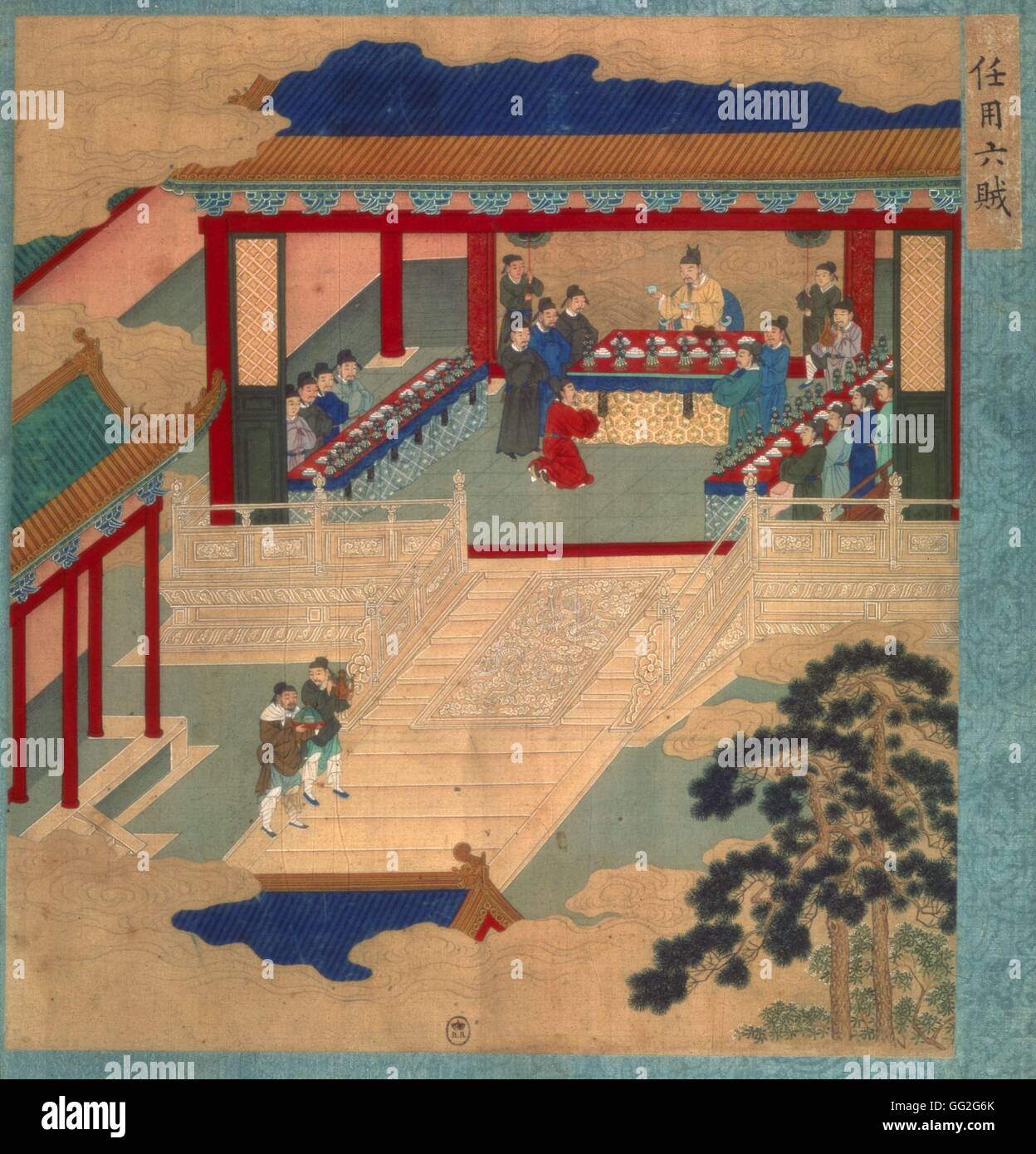 Anonymous Chinese school Emperor Hui-tsung (1101-1125) of the Sung dynasty taking part in a festival in which he drinks from a cup made of precious stone. From: The History of the Chinese Emperors. China, Qing dynasty 18th century Painting on silk Paris, Stock Photohttps://www.alamy.com/image-license-details/?v=1https://www.alamy.com/stock-photo-anonymous-chinese-school-emperor-hui-tsung-1101-1125-of-the-sung-dynasty-113153339.html
Anonymous Chinese school Emperor Hui-tsung (1101-1125) of the Sung dynasty taking part in a festival in which he drinks from a cup made of precious stone. From: The History of the Chinese Emperors. China, Qing dynasty 18th century Painting on silk Paris, Stock Photohttps://www.alamy.com/image-license-details/?v=1https://www.alamy.com/stock-photo-anonymous-chinese-school-emperor-hui-tsung-1101-1125-of-the-sung-dynasty-113153339.htmlRMGG2G6K–Anonymous Chinese school Emperor Hui-tsung (1101-1125) of the Sung dynasty taking part in a festival in which he drinks from a cup made of precious stone. From: The History of the Chinese Emperors. China, Qing dynasty 18th century Painting on silk Paris,
 Taiwan, Jiufen, Chinese temple wall painting Stock Photohttps://www.alamy.com/image-license-details/?v=1https://www.alamy.com/stock-photo-taiwan-jiufen-chinese-temple-wall-painting-103935721.html
Taiwan, Jiufen, Chinese temple wall painting Stock Photohttps://www.alamy.com/image-license-details/?v=1https://www.alamy.com/stock-photo-taiwan-jiufen-chinese-temple-wall-painting-103935721.htmlRMG12K21–Taiwan, Jiufen, Chinese temple wall painting
 AMH-7970-KB Dutch being received by the Chinese emperor Stock Photohttps://www.alamy.com/image-license-details/?v=1https://www.alamy.com/stock-photo-amh-7970-kb-dutch-being-received-by-the-chinese-emperor-132610272.html
AMH-7970-KB Dutch being received by the Chinese emperor Stock Photohttps://www.alamy.com/image-license-details/?v=1https://www.alamy.com/stock-photo-amh-7970-kb-dutch-being-received-by-the-chinese-emperor-132610272.htmlRMHKMWN4–AMH-7970-KB Dutch being received by the Chinese emperor
 The Guangxu Emperor (1871 ? 14 November 1908),was the eleventh emperor of the Qing dynasty. His reign was largely dominated by his maternal aunt Empress Dowager Cixi. He initiated the radical Hundred Days' Reform but was abruptly stopped when the Empress Dowager launched a coup in 1898, after which he was held under virtual house arrest until his death. Stock Photohttps://www.alamy.com/image-license-details/?v=1https://www.alamy.com/the-guangxu-emperor-1871-14-november-1908was-the-eleventh-emperor-of-the-qing-dynasty-his-reign-was-largely-dominated-by-his-maternal-aunt-empress-dowager-cixi-he-initiated-the-radical-hundred-days-reform-but-was-abruptly-stopped-when-the-empress-dowager-launched-a-coup-in-1898-after-which-he-was-held-under-virtual-house-arrest-until-his-death-image634299668.html
The Guangxu Emperor (1871 ? 14 November 1908),was the eleventh emperor of the Qing dynasty. His reign was largely dominated by his maternal aunt Empress Dowager Cixi. He initiated the radical Hundred Days' Reform but was abruptly stopped when the Empress Dowager launched a coup in 1898, after which he was held under virtual house arrest until his death. Stock Photohttps://www.alamy.com/image-license-details/?v=1https://www.alamy.com/the-guangxu-emperor-1871-14-november-1908was-the-eleventh-emperor-of-the-qing-dynasty-his-reign-was-largely-dominated-by-his-maternal-aunt-empress-dowager-cixi-he-initiated-the-radical-hundred-days-reform-but-was-abruptly-stopped-when-the-empress-dowager-launched-a-coup-in-1898-after-which-he-was-held-under-virtual-house-arrest-until-his-death-image634299668.htmlRM2YRXRKG–The Guangxu Emperor (1871 ? 14 November 1908),was the eleventh emperor of the Qing dynasty. His reign was largely dominated by his maternal aunt Empress Dowager Cixi. He initiated the radical Hundred Days' Reform but was abruptly stopped when the Empress Dowager launched a coup in 1898, after which he was held under virtual house arrest until his death.
 vintage authentic oriental illustration Stock Photohttps://www.alamy.com/image-license-details/?v=1https://www.alamy.com/vintage-authentic-oriental-illustration-image184304589.html
vintage authentic oriental illustration Stock Photohttps://www.alamy.com/image-license-details/?v=1https://www.alamy.com/vintage-authentic-oriental-illustration-image184304589.htmlRMMKRPAN–vintage authentic oriental illustration
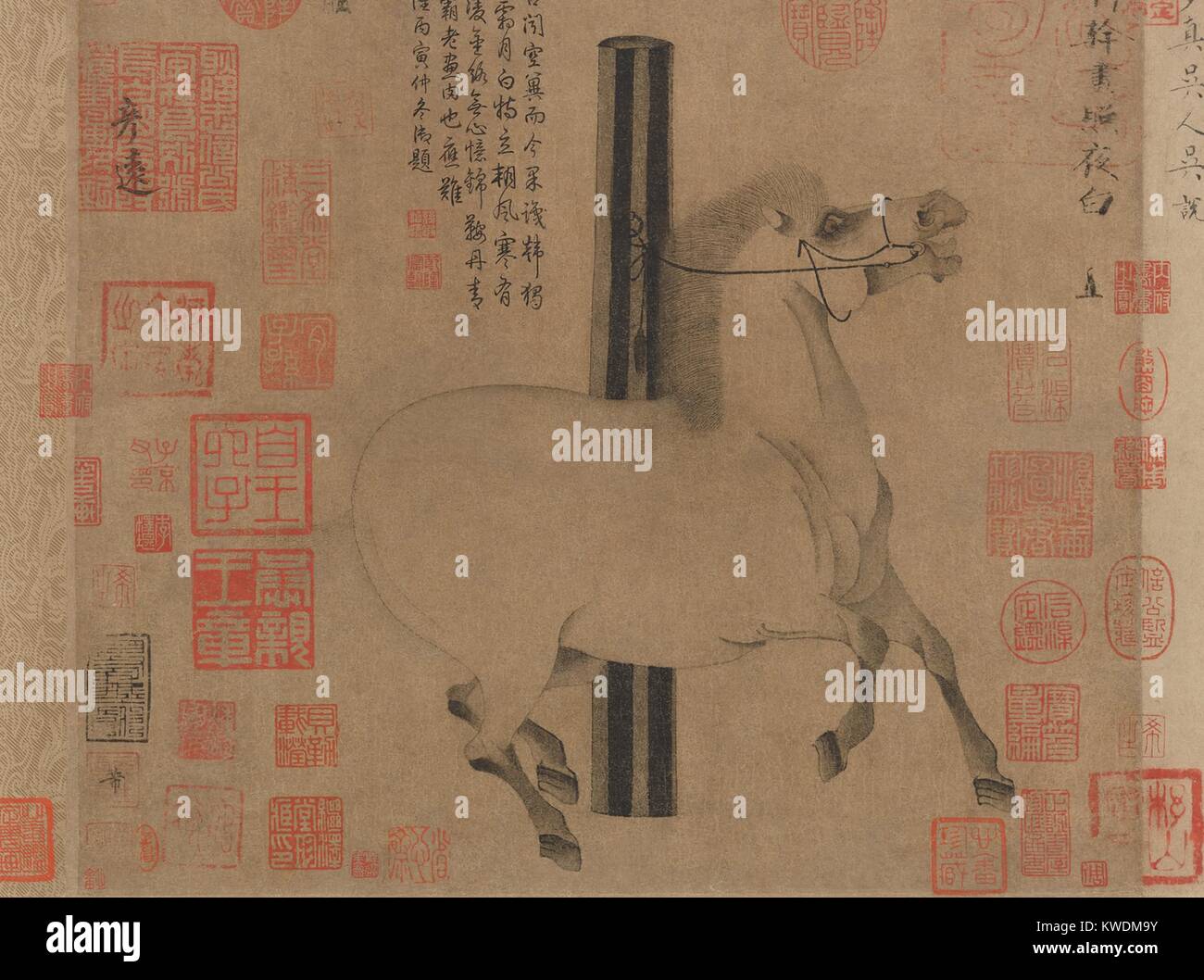 NIGHT SHINING WHITE, by Han Gan, 743-756, Chinese, Tang dynasty, painting, ink on paper. The animated horse of 8th century Emperor Xuanzong is portrayed with flaring nostrils and raised hoofs. This is the most famous work by Han Gan, the leading horse painter of his time. The seals and inscriptions added by later owners are a custom of Chinese connoisseurship (BSLOC 2017 16 6) Stock Photohttps://www.alamy.com/image-license-details/?v=1https://www.alamy.com/stock-photo-night-shining-white-by-han-gan-743-756-chinese-tang-dynasty-painting-170561047.html
NIGHT SHINING WHITE, by Han Gan, 743-756, Chinese, Tang dynasty, painting, ink on paper. The animated horse of 8th century Emperor Xuanzong is portrayed with flaring nostrils and raised hoofs. This is the most famous work by Han Gan, the leading horse painter of his time. The seals and inscriptions added by later owners are a custom of Chinese connoisseurship (BSLOC 2017 16 6) Stock Photohttps://www.alamy.com/image-license-details/?v=1https://www.alamy.com/stock-photo-night-shining-white-by-han-gan-743-756-chinese-tang-dynasty-painting-170561047.htmlRMKWDM9Y–NIGHT SHINING WHITE, by Han Gan, 743-756, Chinese, Tang dynasty, painting, ink on paper. The animated horse of 8th century Emperor Xuanzong is portrayed with flaring nostrils and raised hoofs. This is the most famous work by Han Gan, the leading horse painter of his time. The seals and inscriptions added by later owners are a custom of Chinese connoisseurship (BSLOC 2017 16 6)
 Beijing, China, Chinese Treasures, Art, Urban Monument, 'The Forbidden City', Historic Painting, Royal Scene, Reproduction on Sale in Shop Emperor Stock Photohttps://www.alamy.com/image-license-details/?v=1https://www.alamy.com/beijing-china-chinese-treasures-art-urban-monument-the-forbidden-city-historic-painting-royal-scene-reproduction-on-sale-in-shop-emperor-image573089981.html
Beijing, China, Chinese Treasures, Art, Urban Monument, 'The Forbidden City', Historic Painting, Royal Scene, Reproduction on Sale in Shop Emperor Stock Photohttps://www.alamy.com/image-license-details/?v=1https://www.alamy.com/beijing-china-chinese-treasures-art-urban-monument-the-forbidden-city-historic-painting-royal-scene-reproduction-on-sale-in-shop-emperor-image573089981.htmlRM2T8AE39–Beijing, China, Chinese Treasures, Art, Urban Monument, 'The Forbidden City', Historic Painting, Royal Scene, Reproduction on Sale in Shop Emperor
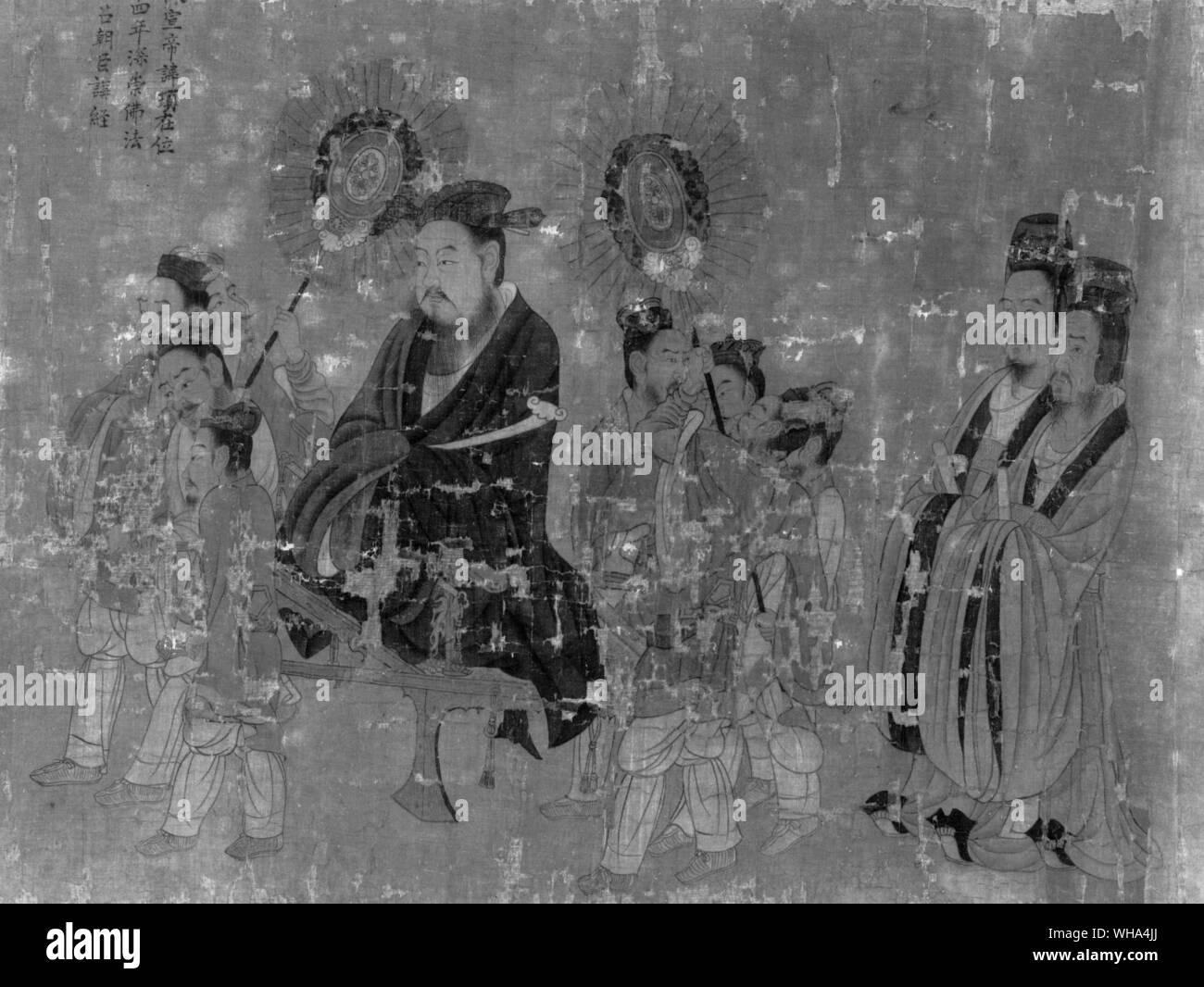 Yen Li Pen. Emperor Husan (Hsuan ?) Ti of Ch'en dynasty.. Yen Li-pen , d. 673, Chinese painter, foremost master of the T'ang dynasty. He became the most celebrated court painter of the 7th cent. and held several high public offices. Although probably none of his original works survives today, records tell us that he was most renowned for his paintings of Buddhist and Taoist themes and also as the painter of historical personages and events. The superb scroll painting Portraits of Thirteen Emperors in the Museum of Fine Arts, Boston, has been attributed to him but may be a copy. It represents Stock Photohttps://www.alamy.com/image-license-details/?v=1https://www.alamy.com/yen-li-pen-emperor-husan-hsuan-ti-of-chen-dynasty-yen-li-pen-d-673-chinese-painter-foremost-master-of-the-tang-dynasty-he-became-the-most-celebrated-court-painter-of-the-7th-cent-and-held-several-high-public-offices-although-probably-none-of-his-original-works-survives-today-records-tell-us-that-he-was-most-renowned-for-his-paintings-of-buddhist-and-taoist-themes-and-also-as-the-painter-of-historical-personages-and-events-the-superb-scroll-painting-portraits-of-thirteen-emperors-in-the-museum-of-fine-arts-boston-has-been-attributed-to-him-but-may-be-a-copy-it-represents-image268827850.html
Yen Li Pen. Emperor Husan (Hsuan ?) Ti of Ch'en dynasty.. Yen Li-pen , d. 673, Chinese painter, foremost master of the T'ang dynasty. He became the most celebrated court painter of the 7th cent. and held several high public offices. Although probably none of his original works survives today, records tell us that he was most renowned for his paintings of Buddhist and Taoist themes and also as the painter of historical personages and events. The superb scroll painting Portraits of Thirteen Emperors in the Museum of Fine Arts, Boston, has been attributed to him but may be a copy. It represents Stock Photohttps://www.alamy.com/image-license-details/?v=1https://www.alamy.com/yen-li-pen-emperor-husan-hsuan-ti-of-chen-dynasty-yen-li-pen-d-673-chinese-painter-foremost-master-of-the-tang-dynasty-he-became-the-most-celebrated-court-painter-of-the-7th-cent-and-held-several-high-public-offices-although-probably-none-of-his-original-works-survives-today-records-tell-us-that-he-was-most-renowned-for-his-paintings-of-buddhist-and-taoist-themes-and-also-as-the-painter-of-historical-personages-and-events-the-superb-scroll-painting-portraits-of-thirteen-emperors-in-the-museum-of-fine-arts-boston-has-been-attributed-to-him-but-may-be-a-copy-it-represents-image268827850.htmlRMWHA4JJ–Yen Li Pen. Emperor Husan (Hsuan ?) Ti of Ch'en dynasty.. Yen Li-pen , d. 673, Chinese painter, foremost master of the T'ang dynasty. He became the most celebrated court painter of the 7th cent. and held several high public offices. Although probably none of his original works survives today, records tell us that he was most renowned for his paintings of Buddhist and Taoist themes and also as the painter of historical personages and events. The superb scroll painting Portraits of Thirteen Emperors in the Museum of Fine Arts, Boston, has been attributed to him but may be a copy. It represents
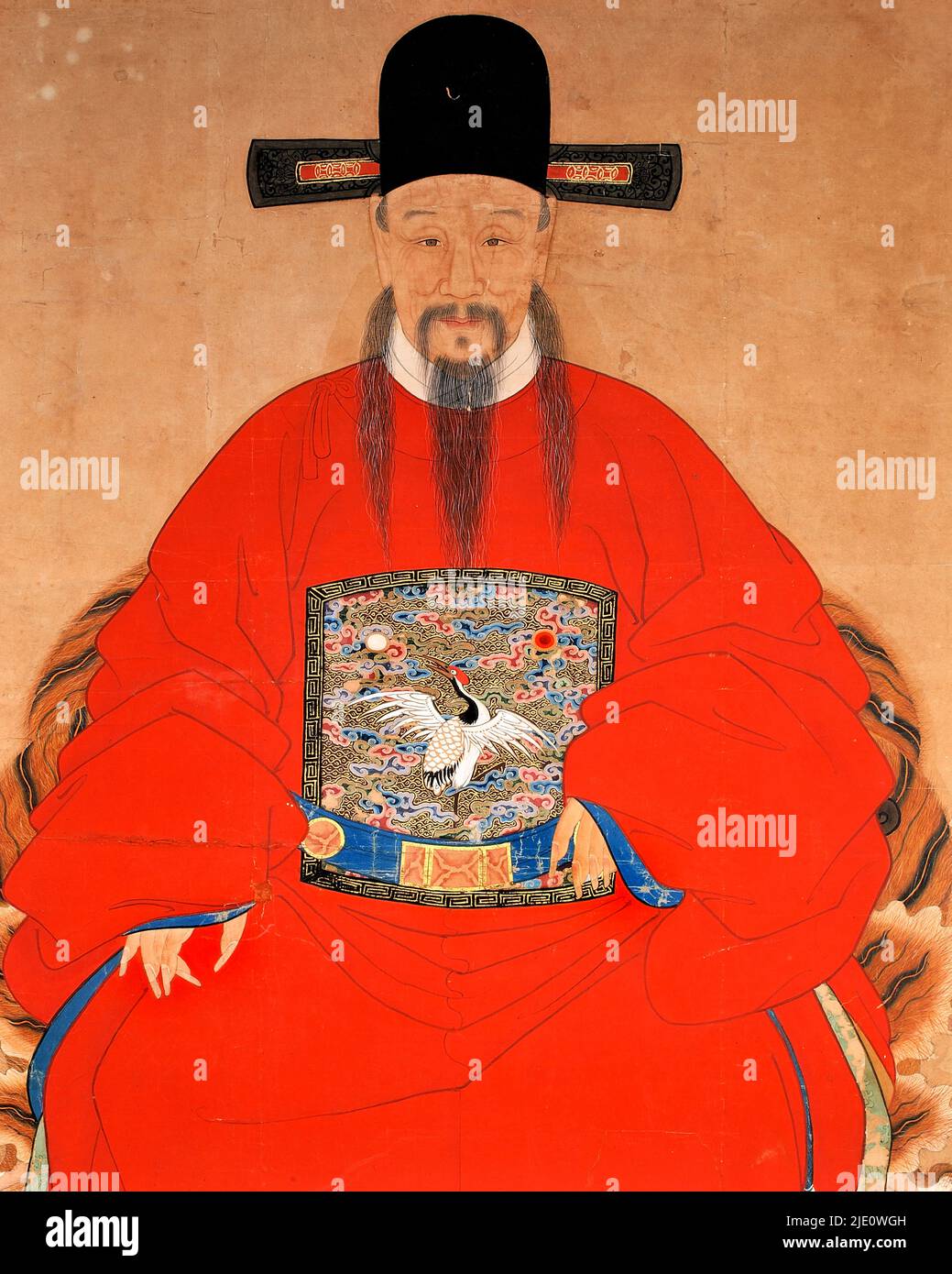 Ancient Chinese painting, portrait of a Chinese dignitary, tempera on canvas, Qing period 1644-1911. Stock Photohttps://www.alamy.com/image-license-details/?v=1https://www.alamy.com/ancient-chinese-painting-portrait-of-a-chinese-dignitary-tempera-on-canvas-qing-period-1644-1911-image473305185.html
Ancient Chinese painting, portrait of a Chinese dignitary, tempera on canvas, Qing period 1644-1911. Stock Photohttps://www.alamy.com/image-license-details/?v=1https://www.alamy.com/ancient-chinese-painting-portrait-of-a-chinese-dignitary-tempera-on-canvas-qing-period-1644-1911-image473305185.htmlRM2JE0WGH–Ancient Chinese painting, portrait of a Chinese dignitary, tempera on canvas, Qing period 1644-1911.
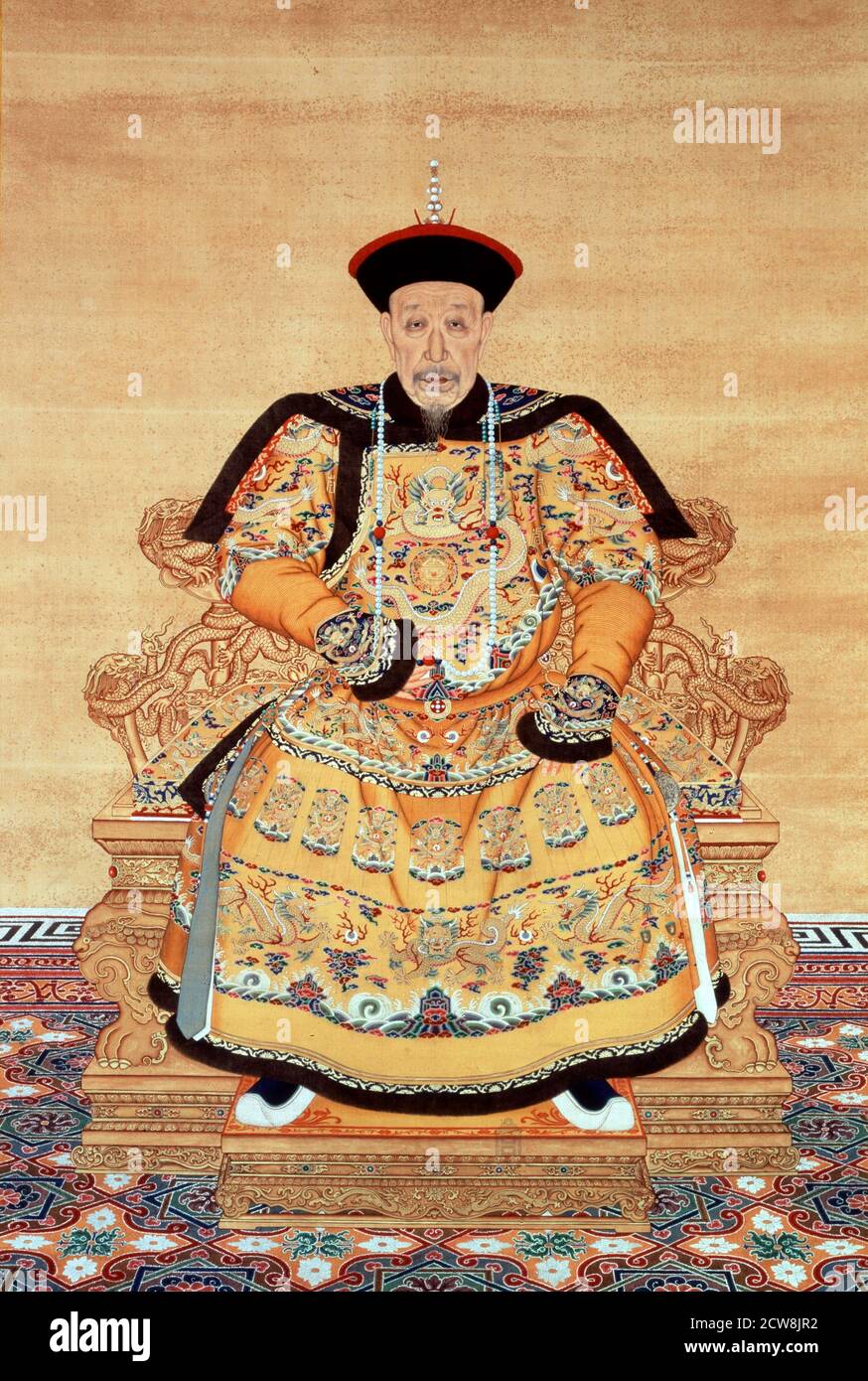 Portrait of the Qianlong Emperor in Court Robe, ink on paper, 1791. The Qianlong Emperor (1711-1799) was the 6th Emperor of the Qing Dynasty in China Stock Photohttps://www.alamy.com/image-license-details/?v=1https://www.alamy.com/portrait-of-the-qianlong-emperor-in-court-robe-ink-on-paper-1791-the-qianlong-emperor-1711-1799-was-the-6th-emperor-of-the-qing-dynasty-in-china-image376974502.html
Portrait of the Qianlong Emperor in Court Robe, ink on paper, 1791. The Qianlong Emperor (1711-1799) was the 6th Emperor of the Qing Dynasty in China Stock Photohttps://www.alamy.com/image-license-details/?v=1https://www.alamy.com/portrait-of-the-qianlong-emperor-in-court-robe-ink-on-paper-1791-the-qianlong-emperor-1711-1799-was-the-6th-emperor-of-the-qing-dynasty-in-china-image376974502.htmlRM2CW8JR2–Portrait of the Qianlong Emperor in Court Robe, ink on paper, 1791. The Qianlong Emperor (1711-1799) was the 6th Emperor of the Qing Dynasty in China
 Fish at play. Artist: Attributed to Zhao Kexiong (Chinese, active early 12th century). Culture: China. Dimensions: Image: 8 7/8 x 9 7/8 in. (22.5 x 25.1 cm). Date: 12th-late 13th century. During the reign (1101-25) of Emperor Huizong, the cultivation of rare aquarium fish came into vogue, and playful, splashing fish in plant-filled waters became a popular subject. In the Xuanhe huapu (preface dated 1120), the catalogue of Huizong's painting collection, the author of the essay 'Fishes and Dragons' decries still-life representations of fish as 'objects on a kitchen table' but praises pictures o Stock Photohttps://www.alamy.com/image-license-details/?v=1https://www.alamy.com/fish-at-play-artist-attributed-to-zhao-kexiong-chinese-active-early-12th-century-culture-china-dimensions-image-8-78-x-9-78-in-225-x-251-cm-date-12th-late-13th-century-during-the-reign-1101-25-of-emperor-huizong-the-cultivation-of-rare-aquarium-fish-came-into-vogue-and-playful-splashing-fish-in-plant-filled-waters-became-a-popular-subject-in-the-xuanhe-huapu-preface-dated-1120-the-catalogue-of-huizongs-painting-collection-the-author-of-the-essay-fishes-and-dragons-decries-still-life-representations-of-fish-as-objects-on-a-kitchen-table-but-praises-pictures-o-image212900455.html
Fish at play. Artist: Attributed to Zhao Kexiong (Chinese, active early 12th century). Culture: China. Dimensions: Image: 8 7/8 x 9 7/8 in. (22.5 x 25.1 cm). Date: 12th-late 13th century. During the reign (1101-25) of Emperor Huizong, the cultivation of rare aquarium fish came into vogue, and playful, splashing fish in plant-filled waters became a popular subject. In the Xuanhe huapu (preface dated 1120), the catalogue of Huizong's painting collection, the author of the essay 'Fishes and Dragons' decries still-life representations of fish as 'objects on a kitchen table' but praises pictures o Stock Photohttps://www.alamy.com/image-license-details/?v=1https://www.alamy.com/fish-at-play-artist-attributed-to-zhao-kexiong-chinese-active-early-12th-century-culture-china-dimensions-image-8-78-x-9-78-in-225-x-251-cm-date-12th-late-13th-century-during-the-reign-1101-25-of-emperor-huizong-the-cultivation-of-rare-aquarium-fish-came-into-vogue-and-playful-splashing-fish-in-plant-filled-waters-became-a-popular-subject-in-the-xuanhe-huapu-preface-dated-1120-the-catalogue-of-huizongs-painting-collection-the-author-of-the-essay-fishes-and-dragons-decries-still-life-representations-of-fish-as-objects-on-a-kitchen-table-but-praises-pictures-o-image212900455.htmlRMPAACKK–Fish at play. Artist: Attributed to Zhao Kexiong (Chinese, active early 12th century). Culture: China. Dimensions: Image: 8 7/8 x 9 7/8 in. (22.5 x 25.1 cm). Date: 12th-late 13th century. During the reign (1101-25) of Emperor Huizong, the cultivation of rare aquarium fish came into vogue, and playful, splashing fish in plant-filled waters became a popular subject. In the Xuanhe huapu (preface dated 1120), the catalogue of Huizong's painting collection, the author of the essay 'Fishes and Dragons' decries still-life representations of fish as 'objects on a kitchen table' but praises pictures o
 The three emperor of the Qing Dynasty portrait Stock Photohttps://www.alamy.com/image-license-details/?v=1https://www.alamy.com/the-three-emperor-of-the-qing-dynasty-portrait-image62732641.html
The three emperor of the Qing Dynasty portrait Stock Photohttps://www.alamy.com/image-license-details/?v=1https://www.alamy.com/the-three-emperor-of-the-qing-dynasty-portrait-image62732641.htmlRFDJ1M3D–The three emperor of the Qing Dynasty portrait
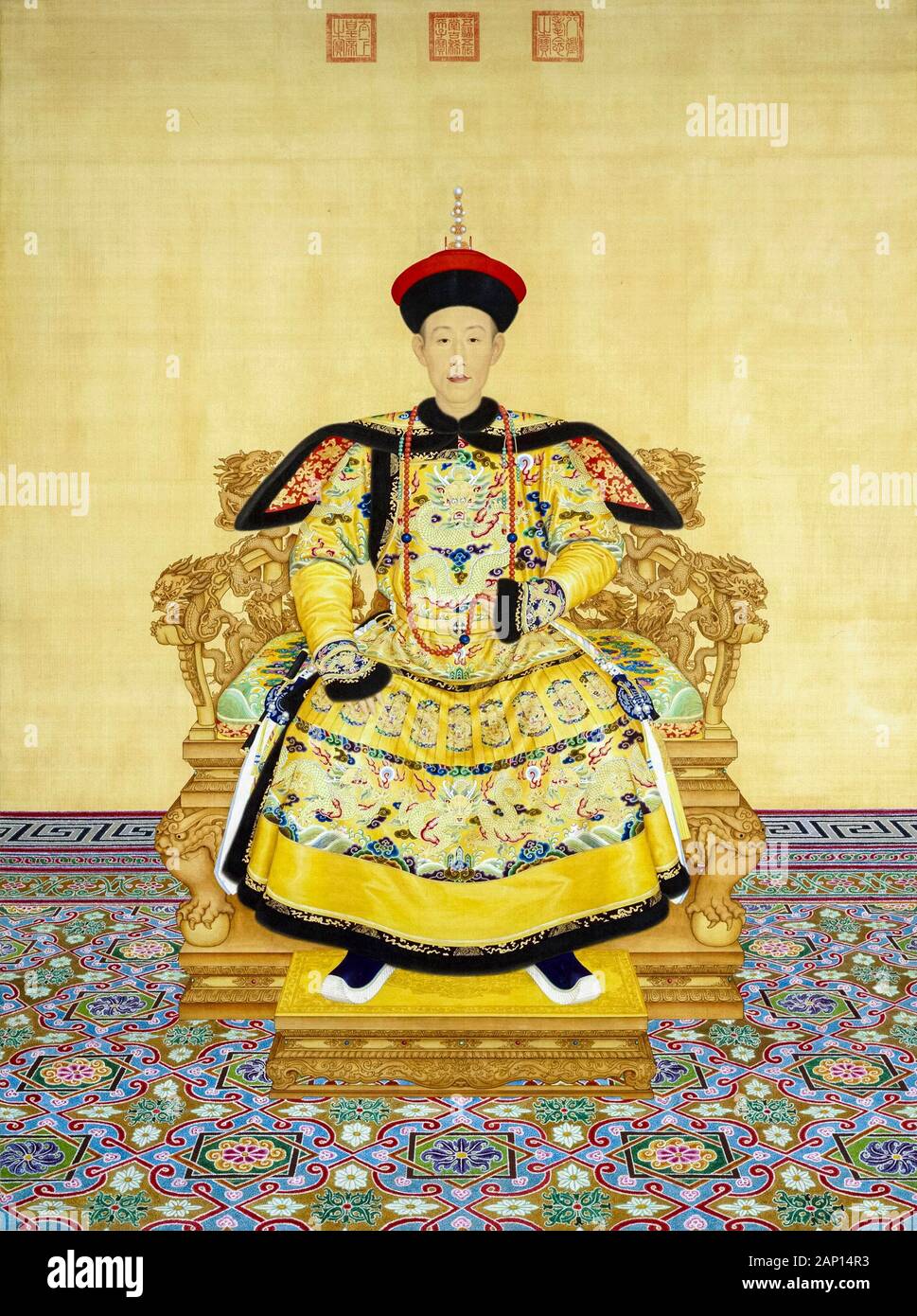 Chinese Emperor The Qianlong Emperor (1711-1799) in court dress, portrait painting by Giuseppe Castiglione, 1736 Stock Photohttps://www.alamy.com/image-license-details/?v=1https://www.alamy.com/chinese-emperor-the-qianlong-emperor-1711-1799-in-court-dress-portrait-painting-by-giuseppe-castiglione-1736-image340545159.html
Chinese Emperor The Qianlong Emperor (1711-1799) in court dress, portrait painting by Giuseppe Castiglione, 1736 Stock Photohttps://www.alamy.com/image-license-details/?v=1https://www.alamy.com/chinese-emperor-the-qianlong-emperor-1711-1799-in-court-dress-portrait-painting-by-giuseppe-castiglione-1736-image340545159.htmlRM2AP14R3–Chinese Emperor The Qianlong Emperor (1711-1799) in court dress, portrait painting by Giuseppe Castiglione, 1736
 China: 'The White Emperor of Sovereignty and Seven Qi in the West' of the Daoist pantheon. Hanging scroll painting, 20th century. Baidi or Baishen, also known as Xidi or Xiyuedadi, was the White Deity/Emperor and one of the fivefold manifestations ('Wufang Shangdi') of the supreme God of Heaven, Tian. When he was mortal, he was known as Shaohao, an ancient Chinese sovereign and son of the Yellow Emperor. He is the god of metal and autumn. The Five Emperors of the Cardinal Directions and the Centre are immortals of the Daoist pantheon. Stock Photohttps://www.alamy.com/image-license-details/?v=1https://www.alamy.com/china-the-white-emperor-of-sovereignty-and-seven-qi-in-the-west-of-the-daoist-pantheon-hanging-scroll-painting-20th-century-baidi-or-baishen-also-known-as-xidi-or-xiyuedadi-was-the-white-deityemperor-and-one-of-the-fivefold-manifestations-wufang-shangdi-of-the-supreme-god-of-heaven-tian-when-he-was-mortal-he-was-known-as-shaohao-an-ancient-chinese-sovereign-and-son-of-the-yellow-emperor-he-is-the-god-of-metal-and-autumn-the-five-emperors-of-the-cardinal-directions-and-the-centre-are-immortals-of-the-daoist-pantheon-image344232625.html
China: 'The White Emperor of Sovereignty and Seven Qi in the West' of the Daoist pantheon. Hanging scroll painting, 20th century. Baidi or Baishen, also known as Xidi or Xiyuedadi, was the White Deity/Emperor and one of the fivefold manifestations ('Wufang Shangdi') of the supreme God of Heaven, Tian. When he was mortal, he was known as Shaohao, an ancient Chinese sovereign and son of the Yellow Emperor. He is the god of metal and autumn. The Five Emperors of the Cardinal Directions and the Centre are immortals of the Daoist pantheon. Stock Photohttps://www.alamy.com/image-license-details/?v=1https://www.alamy.com/china-the-white-emperor-of-sovereignty-and-seven-qi-in-the-west-of-the-daoist-pantheon-hanging-scroll-painting-20th-century-baidi-or-baishen-also-known-as-xidi-or-xiyuedadi-was-the-white-deityemperor-and-one-of-the-fivefold-manifestations-wufang-shangdi-of-the-supreme-god-of-heaven-tian-when-he-was-mortal-he-was-known-as-shaohao-an-ancient-chinese-sovereign-and-son-of-the-yellow-emperor-he-is-the-god-of-metal-and-autumn-the-five-emperors-of-the-cardinal-directions-and-the-centre-are-immortals-of-the-daoist-pantheon-image344232625.htmlRM2B01469–China: 'The White Emperor of Sovereignty and Seven Qi in the West' of the Daoist pantheon. Hanging scroll painting, 20th century. Baidi or Baishen, also known as Xidi or Xiyuedadi, was the White Deity/Emperor and one of the fivefold manifestations ('Wufang Shangdi') of the supreme God of Heaven, Tian. When he was mortal, he was known as Shaohao, an ancient Chinese sovereign and son of the Yellow Emperor. He is the god of metal and autumn. The Five Emperors of the Cardinal Directions and the Centre are immortals of the Daoist pantheon.
 The Summer Palace (Chinese: 頤和園), is a vast ensemble of lakes, gardens and palaces in Beijing. Stock Photohttps://www.alamy.com/image-license-details/?v=1https://www.alamy.com/the-summer-palace-chinese-is-a-vast-ensemble-of-lakes-gardens-and-palaces-in-beijing-image231129042.html
The Summer Palace (Chinese: 頤和園), is a vast ensemble of lakes, gardens and palaces in Beijing. Stock Photohttps://www.alamy.com/image-license-details/?v=1https://www.alamy.com/the-summer-palace-chinese-is-a-vast-ensemble-of-lakes-gardens-and-palaces-in-beijing-image231129042.htmlRMRC0RCJ–The Summer Palace (Chinese: 頤和園), is a vast ensemble of lakes, gardens and palaces in Beijing.
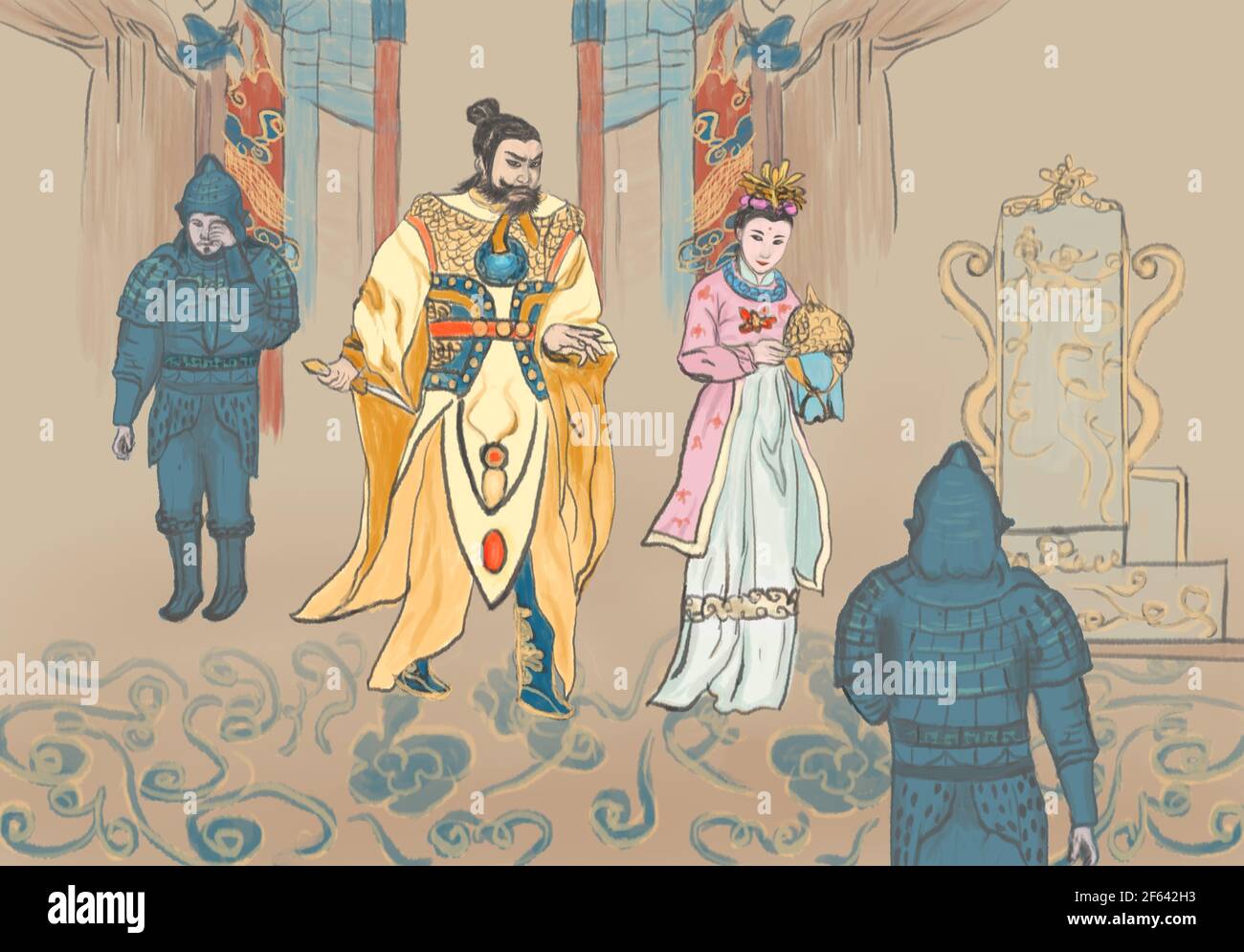 Fake Overlord, Real Concubine Court painting Stock Photohttps://www.alamy.com/image-license-details/?v=1https://www.alamy.com/fake-overlord-real-concubine-court-painting-image416826623.html
Fake Overlord, Real Concubine Court painting Stock Photohttps://www.alamy.com/image-license-details/?v=1https://www.alamy.com/fake-overlord-real-concubine-court-painting-image416826623.htmlRF2F642H3–Fake Overlord, Real Concubine Court painting
 Emperor Taizong gives an audience to the ambassador of Tibet, 641 Stock Photohttps://www.alamy.com/image-license-details/?v=1https://www.alamy.com/emperor-taizong-gives-an-audience-to-the-ambassador-of-tibet-641-image235886203.html
Emperor Taizong gives an audience to the ambassador of Tibet, 641 Stock Photohttps://www.alamy.com/image-license-details/?v=1https://www.alamy.com/emperor-taizong-gives-an-audience-to-the-ambassador-of-tibet-641-image235886203.htmlRMRKNF77–Emperor Taizong gives an audience to the ambassador of Tibet, 641
 Artist Painting Black Dragon Pool Park, Lijiang, Yunnan, China Stock Photohttps://www.alamy.com/image-license-details/?v=1https://www.alamy.com/stock-image-artist-painting-black-dragon-pool-park-lijiang-yunnan-china-163164498.html
Artist Painting Black Dragon Pool Park, Lijiang, Yunnan, China Stock Photohttps://www.alamy.com/image-license-details/?v=1https://www.alamy.com/stock-image-artist-painting-black-dragon-pool-park-lijiang-yunnan-china-163164498.htmlRMKDCNYE–Artist Painting Black Dragon Pool Park, Lijiang, Yunnan, China
 Portraits of the Qianlong Emperor and His Twelve Consorts, 1736 - c. 1770s. Giuseppe Castiglione (Italian, 1688-1766), and others (Chinese). Handscroll, ink and color on silk; overall: 53.8 x 1154.5 cm (21 3/16 x 454 1/2 in.); painting only: 53 x 688.3 cm (20 7/8 x 271 in Stock Photohttps://www.alamy.com/image-license-details/?v=1https://www.alamy.com/portraits-of-the-qianlong-emperor-and-his-twelve-consorts-1736-c-1770s-giuseppe-castiglione-italian-1688-1766-and-others-chinese-handscroll-ink-and-color-on-silk-overall-538-x-11545-cm-21-316-x-454-12-in-painting-only-53-x-6883-cm-20-78-x-271-in-image240447075.html
Portraits of the Qianlong Emperor and His Twelve Consorts, 1736 - c. 1770s. Giuseppe Castiglione (Italian, 1688-1766), and others (Chinese). Handscroll, ink and color on silk; overall: 53.8 x 1154.5 cm (21 3/16 x 454 1/2 in.); painting only: 53 x 688.3 cm (20 7/8 x 271 in Stock Photohttps://www.alamy.com/image-license-details/?v=1https://www.alamy.com/portraits-of-the-qianlong-emperor-and-his-twelve-consorts-1736-c-1770s-giuseppe-castiglione-italian-1688-1766-and-others-chinese-handscroll-ink-and-color-on-silk-overall-538-x-11545-cm-21-316-x-454-12-in-painting-only-53-x-6883-cm-20-78-x-271-in-image240447075.htmlRMRY58KF–Portraits of the Qianlong Emperor and His Twelve Consorts, 1736 - c. 1770s. Giuseppe Castiglione (Italian, 1688-1766), and others (Chinese). Handscroll, ink and color on silk; overall: 53.8 x 1154.5 cm (21 3/16 x 454 1/2 in.); painting only: 53 x 688.3 cm (20 7/8 x 271 in
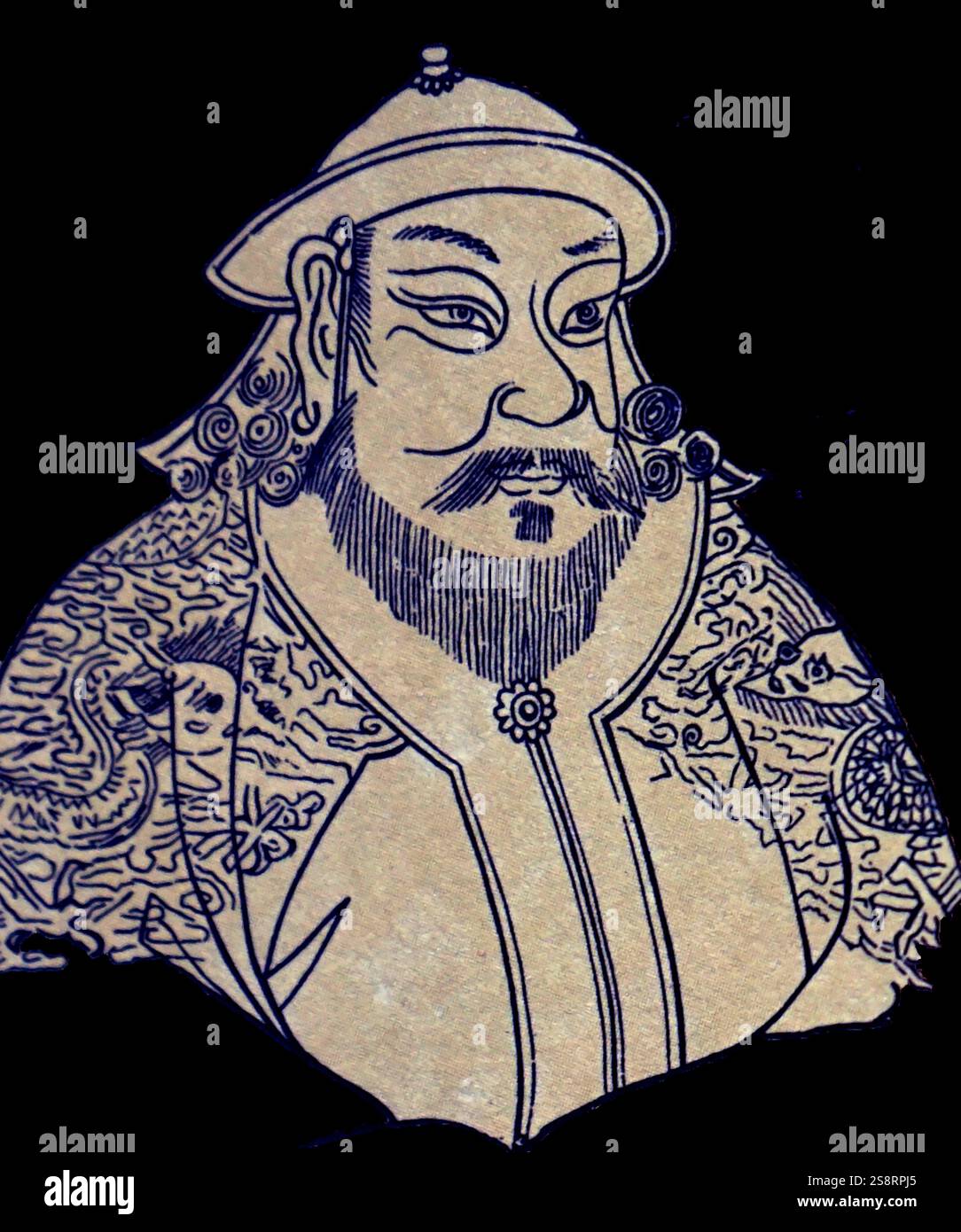 Portrait of Kublai Khan (1215-1294) the fifth Khagan of the Mongol Empire. He founded the Yuan dynasty in China as a conquest dynasty, and ruled as the first Yuan emperor. Dated 13th Century Stock Photohttps://www.alamy.com/image-license-details/?v=1https://www.alamy.com/portrait-of-kublai-khan-1215-1294-the-fifth-khagan-of-the-mongol-empire-he-founded-the-yuan-dynasty-in-china-as-a-conquest-dynasty-and-ruled-as-the-first-yuan-emperor-dated-13th-century-image642223517.html
Portrait of Kublai Khan (1215-1294) the fifth Khagan of the Mongol Empire. He founded the Yuan dynasty in China as a conquest dynasty, and ruled as the first Yuan emperor. Dated 13th Century Stock Photohttps://www.alamy.com/image-license-details/?v=1https://www.alamy.com/portrait-of-kublai-khan-1215-1294-the-fifth-khagan-of-the-mongol-empire-he-founded-the-yuan-dynasty-in-china-as-a-conquest-dynasty-and-ruled-as-the-first-yuan-emperor-dated-13th-century-image642223517.htmlRM2S8RPJ5–Portrait of Kublai Khan (1215-1294) the fifth Khagan of the Mongol Empire. He founded the Yuan dynasty in China as a conquest dynasty, and ruled as the first Yuan emperor. Dated 13th Century
 Taiwan, Jiufen, Chinese temple wall painting Stock Photohttps://www.alamy.com/image-license-details/?v=1https://www.alamy.com/stock-photo-taiwan-jiufen-chinese-temple-wall-painting-103935736.html
Taiwan, Jiufen, Chinese temple wall painting Stock Photohttps://www.alamy.com/image-license-details/?v=1https://www.alamy.com/stock-photo-taiwan-jiufen-chinese-temple-wall-painting-103935736.htmlRMG12K2G–Taiwan, Jiufen, Chinese temple wall painting
 AMH-7975-KB Ambassador being received by the Chinese emperor Stock Photohttps://www.alamy.com/image-license-details/?v=1https://www.alamy.com/stock-photo-amh-7975-kb-ambassador-being-received-by-the-chinese-emperor-132610281.html
AMH-7975-KB Ambassador being received by the Chinese emperor Stock Photohttps://www.alamy.com/image-license-details/?v=1https://www.alamy.com/stock-photo-amh-7975-kb-ambassador-being-received-by-the-chinese-emperor-132610281.htmlRMHKMWND–AMH-7975-KB Ambassador being received by the Chinese emperor
 Grand Imperial Wedding of the Guangxu Emperor. The future Empress Xiaoding exiting the Gate of Divine Prowess, by Qing Kuan, c. 1889. The Guangxu Emperor (1871 ? 14 November 1908), also known by his temple name Emperor Dezong of Qing, personal name Zaitian, was the tenth emperor of the Qing dynasty, and the ninth Qing emperor to rule over China proper. His reign was largely dominated by his maternal aunt Empress Dowager Cixi. He initiated the radical Hundred Days' Reform but was abruptly stopped when the Empress Dowager launched a coup in 1898, after which he was held under virtual house arres Stock Photohttps://www.alamy.com/image-license-details/?v=1https://www.alamy.com/grand-imperial-wedding-of-the-guangxu-emperor-the-future-empress-xiaoding-exiting-the-gate-of-divine-prowess-by-qing-kuan-c-1889-the-guangxu-emperor-1871-14-november-1908-also-known-by-his-temple-name-emperor-dezong-of-qing-personal-name-zaitian-was-the-tenth-emperor-of-the-qing-dynasty-and-the-ninth-qing-emperor-to-rule-over-china-proper-his-reign-was-largely-dominated-by-his-maternal-aunt-empress-dowager-cixi-he-initiated-the-radical-hundred-days-reform-but-was-abruptly-stopped-when-the-empress-dowager-launched-a-coup-in-1898-after-which-he-was-held-under-virtual-house-arres-image634299401.html
Grand Imperial Wedding of the Guangxu Emperor. The future Empress Xiaoding exiting the Gate of Divine Prowess, by Qing Kuan, c. 1889. The Guangxu Emperor (1871 ? 14 November 1908), also known by his temple name Emperor Dezong of Qing, personal name Zaitian, was the tenth emperor of the Qing dynasty, and the ninth Qing emperor to rule over China proper. His reign was largely dominated by his maternal aunt Empress Dowager Cixi. He initiated the radical Hundred Days' Reform but was abruptly stopped when the Empress Dowager launched a coup in 1898, after which he was held under virtual house arres Stock Photohttps://www.alamy.com/image-license-details/?v=1https://www.alamy.com/grand-imperial-wedding-of-the-guangxu-emperor-the-future-empress-xiaoding-exiting-the-gate-of-divine-prowess-by-qing-kuan-c-1889-the-guangxu-emperor-1871-14-november-1908-also-known-by-his-temple-name-emperor-dezong-of-qing-personal-name-zaitian-was-the-tenth-emperor-of-the-qing-dynasty-and-the-ninth-qing-emperor-to-rule-over-china-proper-his-reign-was-largely-dominated-by-his-maternal-aunt-empress-dowager-cixi-he-initiated-the-radical-hundred-days-reform-but-was-abruptly-stopped-when-the-empress-dowager-launched-a-coup-in-1898-after-which-he-was-held-under-virtual-house-arres-image634299401.htmlRM2YRXRA1–Grand Imperial Wedding of the Guangxu Emperor. The future Empress Xiaoding exiting the Gate of Divine Prowess, by Qing Kuan, c. 1889. The Guangxu Emperor (1871 ? 14 November 1908), also known by his temple name Emperor Dezong of Qing, personal name Zaitian, was the tenth emperor of the Qing dynasty, and the ninth Qing emperor to rule over China proper. His reign was largely dominated by his maternal aunt Empress Dowager Cixi. He initiated the radical Hundred Days' Reform but was abruptly stopped when the Empress Dowager launched a coup in 1898, after which he was held under virtual house arres
 vintage authentic oriental illustration Stock Photohttps://www.alamy.com/image-license-details/?v=1https://www.alamy.com/vintage-authentic-oriental-illustration-image184306320.html
vintage authentic oriental illustration Stock Photohttps://www.alamy.com/image-license-details/?v=1https://www.alamy.com/vintage-authentic-oriental-illustration-image184306320.htmlRMMKRTGG–vintage authentic oriental illustration
 Huntley Wright as Li in San Toy, or The Emperor 's Own, a Chinese musical comedy. An English stage and film actor, comedian, dancer and singer, best k Stock Photohttps://www.alamy.com/image-license-details/?v=1https://www.alamy.com/huntley-wright-as-li-in-san-toy-or-the-emperor-s-own-a-chinese-musical-comedy-an-english-stage-and-film-actor-comedian-dancer-and-singer-best-k-image177876955.html
Huntley Wright as Li in San Toy, or The Emperor 's Own, a Chinese musical comedy. An English stage and film actor, comedian, dancer and singer, best k Stock Photohttps://www.alamy.com/image-license-details/?v=1https://www.alamy.com/huntley-wright-as-li-in-san-toy-or-the-emperor-s-own-a-chinese-musical-comedy-an-english-stage-and-film-actor-comedian-dancer-and-singer-best-k-image177876955.htmlRMM9AYTB–Huntley Wright as Li in San Toy, or The Emperor 's Own, a Chinese musical comedy. An English stage and film actor, comedian, dancer and singer, best k
 . English: Zhuanxu, one of the mythical Five Sovereigns. Inscription reads: 'The God Zhuanxu, Gao Yang, was the grandson of the Yellow Emperor and the son of Chang Yi' (Birrell, Chinese Mythology, ISBN 0-8018-6183-7, p.48) 中文: 帝顓頊,高陽者,黄帝之孫而昌意之子 . AD 151. mural painting from Han dynasty 187 EmperorZhuanxu Stock Photohttps://www.alamy.com/image-license-details/?v=1https://www.alamy.com/english-zhuanxu-one-of-the-mythical-five-sovereigns-inscription-reads-the-god-zhuanxu-gao-yang-was-the-grandson-of-the-yellow-emperor-and-the-son-of-chang-yi-birrell-chinese-mythology-isbn-0-8018-6183-7-p48-ad-151-mural-painting-from-han-dynasty-187-emperorzhuanxu-image188255735.html
. English: Zhuanxu, one of the mythical Five Sovereigns. Inscription reads: 'The God Zhuanxu, Gao Yang, was the grandson of the Yellow Emperor and the son of Chang Yi' (Birrell, Chinese Mythology, ISBN 0-8018-6183-7, p.48) 中文: 帝顓頊,高陽者,黄帝之孫而昌意之子 . AD 151. mural painting from Han dynasty 187 EmperorZhuanxu Stock Photohttps://www.alamy.com/image-license-details/?v=1https://www.alamy.com/english-zhuanxu-one-of-the-mythical-five-sovereigns-inscription-reads-the-god-zhuanxu-gao-yang-was-the-grandson-of-the-yellow-emperor-and-the-son-of-chang-yi-birrell-chinese-mythology-isbn-0-8018-6183-7-p48-ad-151-mural-painting-from-han-dynasty-187-emperorzhuanxu-image188255735.htmlRMMX7P33–. English: Zhuanxu, one of the mythical Five Sovereigns. Inscription reads: 'The God Zhuanxu, Gao Yang, was the grandson of the Yellow Emperor and the son of Chang Yi' (Birrell, Chinese Mythology, ISBN 0-8018-6183-7, p.48) 中文: 帝顓頊,高陽者,黄帝之孫而昌意之子 . AD 151. mural painting from Han dynasty 187 EmperorZhuanxu
 Crowd of asian tourists in front of The Coronation of Napoleon oil painting at the Louvre Museum in Paris, France, Europe Stock Photohttps://www.alamy.com/image-license-details/?v=1https://www.alamy.com/crowd-of-asian-tourists-in-front-of-the-coronation-of-napoleon-oil-painting-at-the-louvre-museum-in-paris-france-europe-image348791204.html
Crowd of asian tourists in front of The Coronation of Napoleon oil painting at the Louvre Museum in Paris, France, Europe Stock Photohttps://www.alamy.com/image-license-details/?v=1https://www.alamy.com/crowd-of-asian-tourists-in-front-of-the-coronation-of-napoleon-oil-painting-at-the-louvre-museum-in-paris-france-europe-image348791204.htmlRM2B7CPMM–Crowd of asian tourists in front of The Coronation of Napoleon oil painting at the Louvre Museum in Paris, France, Europe
 Finches on Bamboo, Hui-Tsung, Emperor Stock Photohttps://www.alamy.com/image-license-details/?v=1https://www.alamy.com/finches-on-bamboo-hui-tsung-emperor-image215545364.html
Finches on Bamboo, Hui-Tsung, Emperor Stock Photohttps://www.alamy.com/image-license-details/?v=1https://www.alamy.com/finches-on-bamboo-hui-tsung-emperor-image215545364.htmlRMPEJX8M–Finches on Bamboo, Hui-Tsung, Emperor
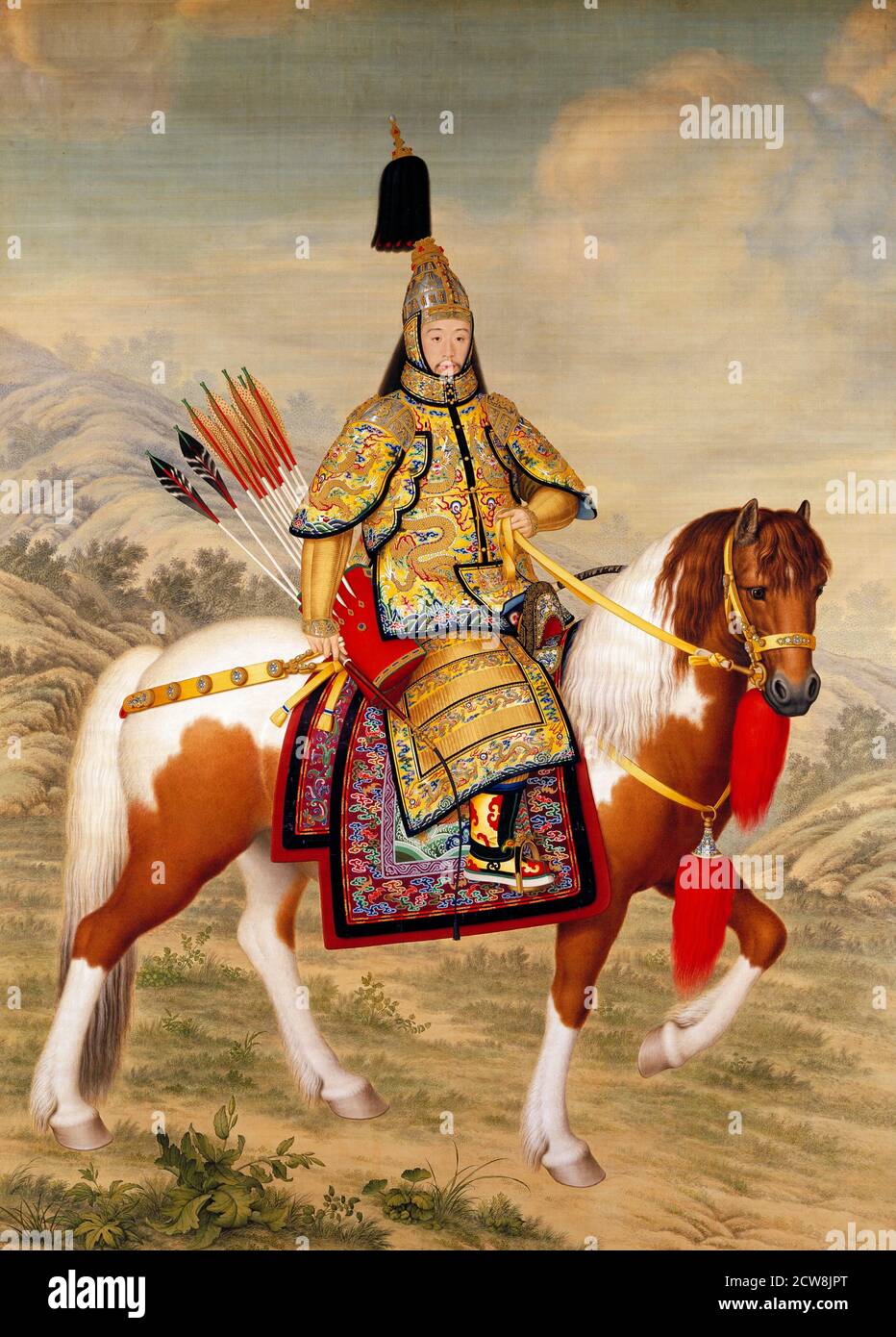 The Qianlong Emperor in Ceremonial Armor on Horseback by Giuseppe Castiglione (1688-1766, Chinese name Lang Shining), ink and color on silk, 1758, The Qianlong Emperor (1711-1799) was the 6th Emperor of the Qing Dynasty in China Stock Photohttps://www.alamy.com/image-license-details/?v=1https://www.alamy.com/the-qianlong-emperor-in-ceremonial-armor-on-horseback-by-giuseppe-castiglione-1688-1766-chinese-name-lang-shining-ink-and-color-on-silk-1758-the-qianlong-emperor-1711-1799-was-the-6th-emperor-of-the-qing-dynasty-in-china-image376974496.html
The Qianlong Emperor in Ceremonial Armor on Horseback by Giuseppe Castiglione (1688-1766, Chinese name Lang Shining), ink and color on silk, 1758, The Qianlong Emperor (1711-1799) was the 6th Emperor of the Qing Dynasty in China Stock Photohttps://www.alamy.com/image-license-details/?v=1https://www.alamy.com/the-qianlong-emperor-in-ceremonial-armor-on-horseback-by-giuseppe-castiglione-1688-1766-chinese-name-lang-shining-ink-and-color-on-silk-1758-the-qianlong-emperor-1711-1799-was-the-6th-emperor-of-the-qing-dynasty-in-china-image376974496.htmlRM2CW8JPT–The Qianlong Emperor in Ceremonial Armor on Horseback by Giuseppe Castiglione (1688-1766, Chinese name Lang Shining), ink and color on silk, 1758, The Qianlong Emperor (1711-1799) was the 6th Emperor of the Qing Dynasty in China
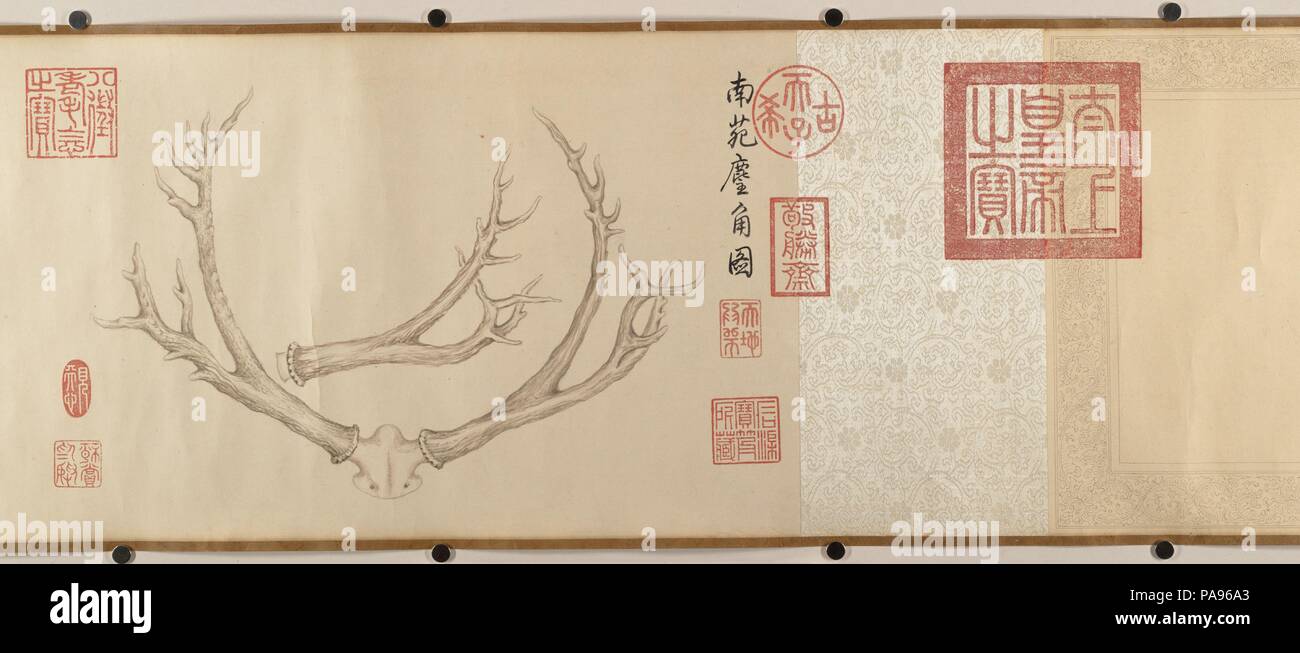 Two Paintings of Deer Antlers. Artist: Qianlong Emperor (Chinese, (1711-1799; r. 1736-95)). Culture: China. Dimensions: a: 9 3/4 × 81 1/4 in. (24.8 × 206.4 cm) b: 9 7/8 × 81 1/4 in. (25.1 × 206.4 cm). Date: dated 1762 and 1767. The Qianlong Emperor practiced both calligraphy and painting as a way of identifying himself with Chinese literati ideals of self-cultivation. However, the subject matter of these two scrolls reveals his concomitant desire to align himself with Manchu hunting traditions. Furthermore, the realistic rendering of texture and three-dimensional form reflects the influence Stock Photohttps://www.alamy.com/image-license-details/?v=1https://www.alamy.com/two-paintings-of-deer-antlers-artist-qianlong-emperor-chinese-1711-1799-r-1736-95-culture-china-dimensions-a-9-34-81-14-in-248-2064-cm-b-9-78-81-14-in-251-2064-cm-date-dated-1762-and-1767-the-qianlong-emperor-practiced-both-calligraphy-and-painting-as-a-way-of-identifying-himself-with-chinese-literati-ideals-of-self-cultivation-however-the-subject-matter-of-these-two-scrolls-reveals-his-concomitant-desire-to-align-himself-with-manchu-hunting-traditions-furthermore-the-realistic-rendering-of-texture-and-three-dimensional-form-reflects-the-influence-image212873531.html
Two Paintings of Deer Antlers. Artist: Qianlong Emperor (Chinese, (1711-1799; r. 1736-95)). Culture: China. Dimensions: a: 9 3/4 × 81 1/4 in. (24.8 × 206.4 cm) b: 9 7/8 × 81 1/4 in. (25.1 × 206.4 cm). Date: dated 1762 and 1767. The Qianlong Emperor practiced both calligraphy and painting as a way of identifying himself with Chinese literati ideals of self-cultivation. However, the subject matter of these two scrolls reveals his concomitant desire to align himself with Manchu hunting traditions. Furthermore, the realistic rendering of texture and three-dimensional form reflects the influence Stock Photohttps://www.alamy.com/image-license-details/?v=1https://www.alamy.com/two-paintings-of-deer-antlers-artist-qianlong-emperor-chinese-1711-1799-r-1736-95-culture-china-dimensions-a-9-34-81-14-in-248-2064-cm-b-9-78-81-14-in-251-2064-cm-date-dated-1762-and-1767-the-qianlong-emperor-practiced-both-calligraphy-and-painting-as-a-way-of-identifying-himself-with-chinese-literati-ideals-of-self-cultivation-however-the-subject-matter-of-these-two-scrolls-reveals-his-concomitant-desire-to-align-himself-with-manchu-hunting-traditions-furthermore-the-realistic-rendering-of-texture-and-three-dimensional-form-reflects-the-influence-image212873531.htmlRMPA96A3–Two Paintings of Deer Antlers. Artist: Qianlong Emperor (Chinese, (1711-1799; r. 1736-95)). Culture: China. Dimensions: a: 9 3/4 × 81 1/4 in. (24.8 × 206.4 cm) b: 9 7/8 × 81 1/4 in. (25.1 × 206.4 cm). Date: dated 1762 and 1767. The Qianlong Emperor practiced both calligraphy and painting as a way of identifying himself with Chinese literati ideals of self-cultivation. However, the subject matter of these two scrolls reveals his concomitant desire to align himself with Manchu hunting traditions. Furthermore, the realistic rendering of texture and three-dimensional form reflects the influence
 Ancient Painting Stock Photohttps://www.alamy.com/image-license-details/?v=1https://www.alamy.com/stock-photo-ancient-painting-15730004.html
Ancient Painting Stock Photohttps://www.alamy.com/image-license-details/?v=1https://www.alamy.com/stock-photo-ancient-painting-15730004.htmlRFAPAJ4N–Ancient Painting
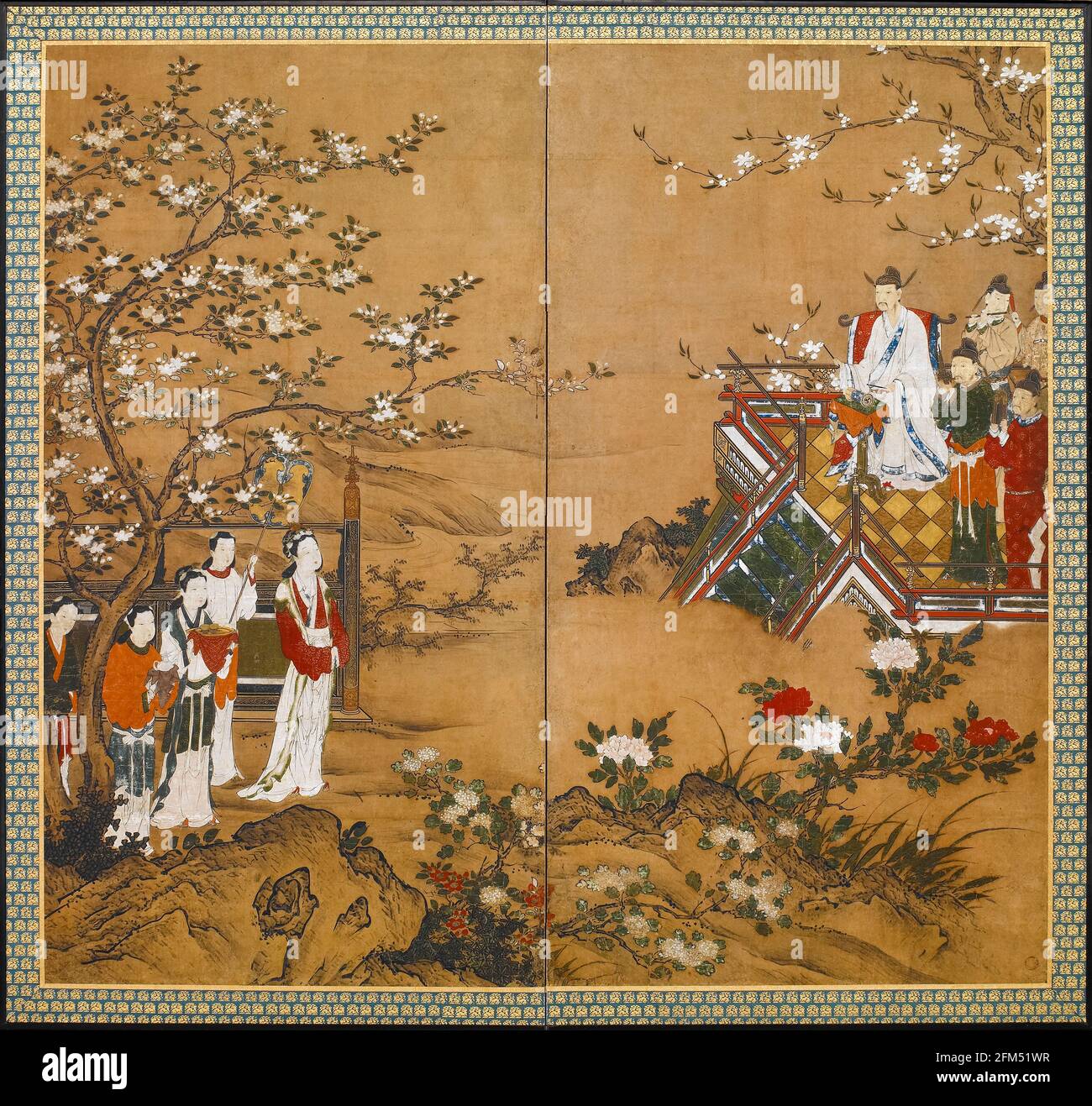 Chinese Emperor Xuanzong of Tang (685-762) and his Concubine Yang Guifei (719-756), painting by Kano School, 1600-1650 Stock Photohttps://www.alamy.com/image-license-details/?v=1https://www.alamy.com/chineseemperor-xuanzong-of-tang-685-762-and-his-concubine-yang-guifei-719-756-painting-by-kano-school-1600-1650-image425453219.html
Chinese Emperor Xuanzong of Tang (685-762) and his Concubine Yang Guifei (719-756), painting by Kano School, 1600-1650 Stock Photohttps://www.alamy.com/image-license-details/?v=1https://www.alamy.com/chineseemperor-xuanzong-of-tang-685-762-and-his-concubine-yang-guifei-719-756-painting-by-kano-school-1600-1650-image425453219.htmlRM2FM51WR–Chinese Emperor Xuanzong of Tang (685-762) and his Concubine Yang Guifei (719-756), painting by Kano School, 1600-1650
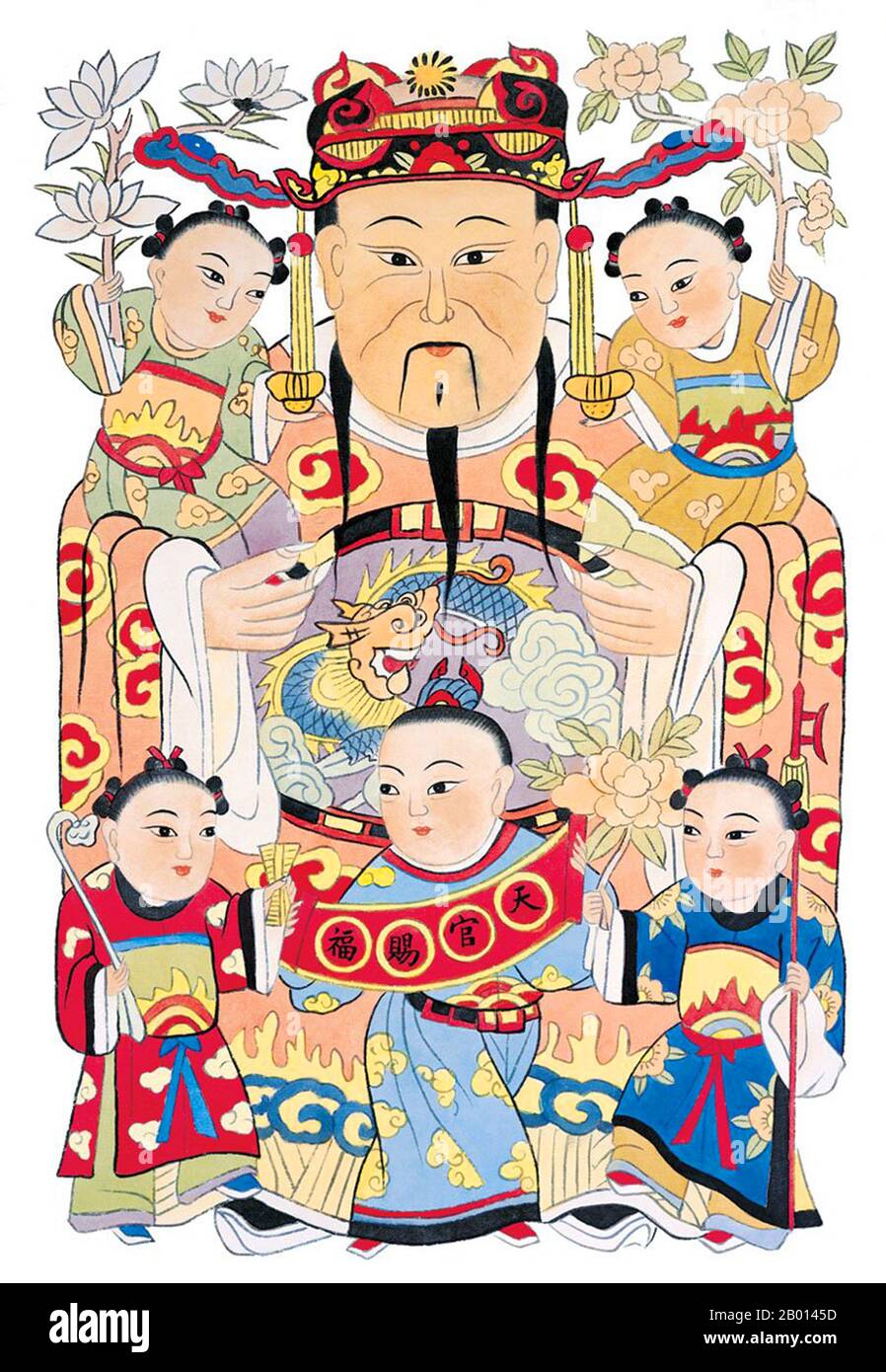 Vietnam: A Vietnamese painting of the Jade Emperor, Ngoc Hoang Thuong De (Ngọc Hoàng Thượng Đế), the 'Jade Emperor God', 20th century. The Jade Emperor is the Daoist ruler of Heaven and all realms of existence below including that of Man and Hell, according to Daoist mythology. He is one of the most important gods of the Chinese traditional religion pantheon. In Daoist belief, the Jade Emperor governs all of the mortals' realm and below, but ranks below the Three Pure Ones. Stock Photohttps://www.alamy.com/image-license-details/?v=1https://www.alamy.com/vietnam-a-vietnamese-painting-of-the-jade-emperor-ngoc-hoang-thuong-de-ngc-hong-thng-the-jade-emperor-god-20th-century-the-jade-emperor-is-the-daoist-ruler-of-heaven-and-all-realms-of-existence-below-including-that-of-man-and-hell-according-to-daoist-mythology-he-is-one-of-the-most-important-gods-of-the-chinese-traditional-religion-pantheon-in-daoist-belief-the-jade-emperor-governs-all-of-the-mortals-realm-and-below-but-ranks-below-the-three-pure-ones-image344232601.html
Vietnam: A Vietnamese painting of the Jade Emperor, Ngoc Hoang Thuong De (Ngọc Hoàng Thượng Đế), the 'Jade Emperor God', 20th century. The Jade Emperor is the Daoist ruler of Heaven and all realms of existence below including that of Man and Hell, according to Daoist mythology. He is one of the most important gods of the Chinese traditional religion pantheon. In Daoist belief, the Jade Emperor governs all of the mortals' realm and below, but ranks below the Three Pure Ones. Stock Photohttps://www.alamy.com/image-license-details/?v=1https://www.alamy.com/vietnam-a-vietnamese-painting-of-the-jade-emperor-ngoc-hoang-thuong-de-ngc-hong-thng-the-jade-emperor-god-20th-century-the-jade-emperor-is-the-daoist-ruler-of-heaven-and-all-realms-of-existence-below-including-that-of-man-and-hell-according-to-daoist-mythology-he-is-one-of-the-most-important-gods-of-the-chinese-traditional-religion-pantheon-in-daoist-belief-the-jade-emperor-governs-all-of-the-mortals-realm-and-below-but-ranks-below-the-three-pure-ones-image344232601.htmlRM2B0145D–Vietnam: A Vietnamese painting of the Jade Emperor, Ngoc Hoang Thuong De (Ngọc Hoàng Thượng Đế), the 'Jade Emperor God', 20th century. The Jade Emperor is the Daoist ruler of Heaven and all realms of existence below including that of Man and Hell, according to Daoist mythology. He is one of the most important gods of the Chinese traditional religion pantheon. In Daoist belief, the Jade Emperor governs all of the mortals' realm and below, but ranks below the Three Pure Ones.
 The Summer Palace (Chinese: 頤和園), is a vast ensemble of lakes, gardens and palaces in Beijing. Stock Photohttps://www.alamy.com/image-license-details/?v=1https://www.alamy.com/the-summer-palace-chinese-is-a-vast-ensemble-of-lakes-gardens-and-palaces-in-beijing-image231129025.html
The Summer Palace (Chinese: 頤和園), is a vast ensemble of lakes, gardens and palaces in Beijing. Stock Photohttps://www.alamy.com/image-license-details/?v=1https://www.alamy.com/the-summer-palace-chinese-is-a-vast-ensemble-of-lakes-gardens-and-palaces-in-beijing-image231129025.htmlRMRC0RC1–The Summer Palace (Chinese: 頤和園), is a vast ensemble of lakes, gardens and palaces in Beijing.
 Kublai Khan, Chinese Yuan Dynasty Emperor Shi Tsu, portrait 17th/18th century Qing Kangxi court artist, painting on paper. Grandson Ghenghis Khan Stock Photohttps://www.alamy.com/image-license-details/?v=1https://www.alamy.com/kublai-khan-chinese-yuan-dynasty-emperor-shi-tsu-portrait-17th18th-century-qing-kangxi-court-artist-painting-on-paper-grandson-ghenghis-khan-image431569468.html
Kublai Khan, Chinese Yuan Dynasty Emperor Shi Tsu, portrait 17th/18th century Qing Kangxi court artist, painting on paper. Grandson Ghenghis Khan Stock Photohttps://www.alamy.com/image-license-details/?v=1https://www.alamy.com/kublai-khan-chinese-yuan-dynasty-emperor-shi-tsu-portrait-17th18th-century-qing-kangxi-court-artist-painting-on-paper-grandson-ghenghis-khan-image431569468.htmlRM2G23K78–Kublai Khan, Chinese Yuan Dynasty Emperor Shi Tsu, portrait 17th/18th century Qing Kangxi court artist, painting on paper. Grandson Ghenghis Khan
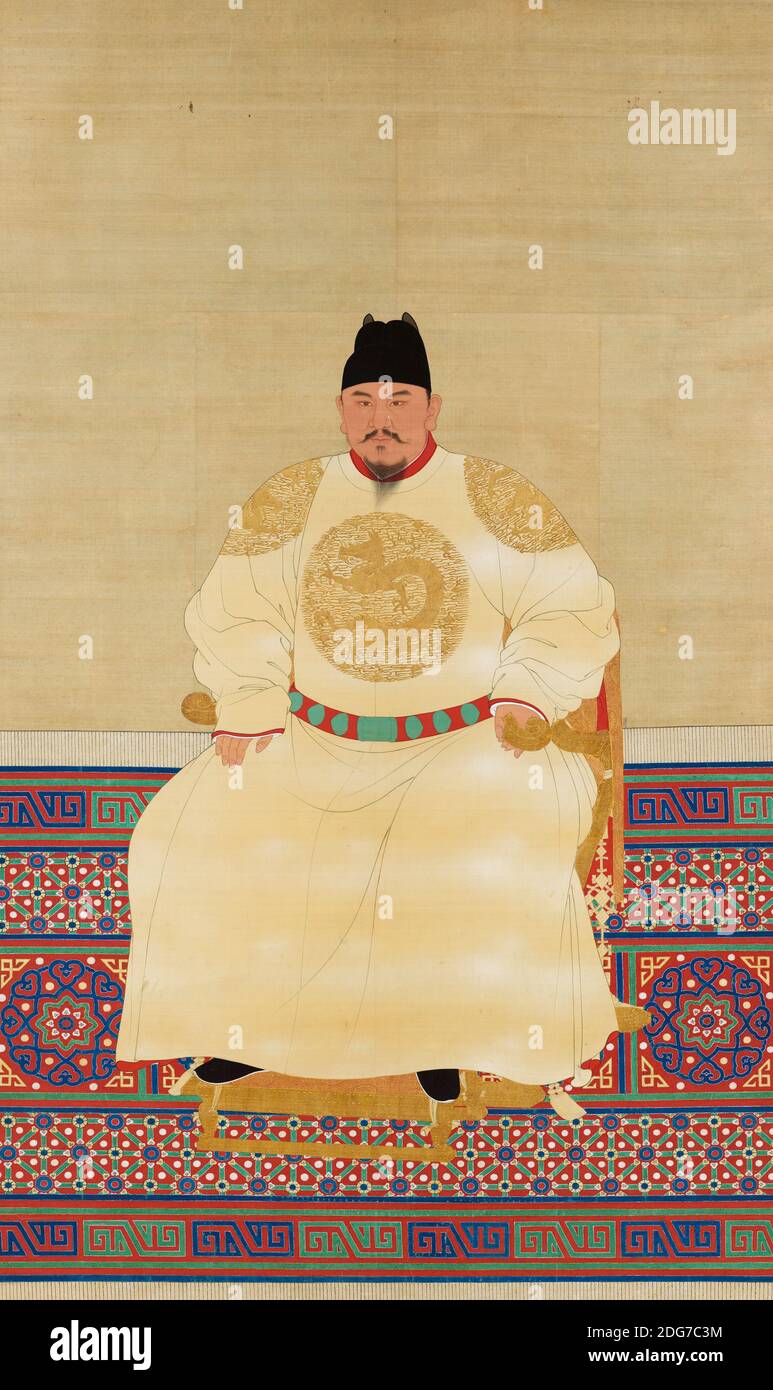 A Seated Portrait of Ming Emperor Taizu - Chinese Ming Dynasty Stock Photohttps://www.alamy.com/image-license-details/?v=1https://www.alamy.com/a-seated-portrait-of-ming-emperor-taizu-chinese-ming-dynasty-image388625768.html
A Seated Portrait of Ming Emperor Taizu - Chinese Ming Dynasty Stock Photohttps://www.alamy.com/image-license-details/?v=1https://www.alamy.com/a-seated-portrait-of-ming-emperor-taizu-chinese-ming-dynasty-image388625768.htmlRM2DG7C3M–A Seated Portrait of Ming Emperor Taizu - Chinese Ming Dynasty
 Art, Painted landscape scene Stock Photohttps://www.alamy.com/image-license-details/?v=1https://www.alamy.com/art-painted-landscape-scene-image429238.html
Art, Painted landscape scene Stock Photohttps://www.alamy.com/image-license-details/?v=1https://www.alamy.com/art-painted-landscape-scene-image429238.htmlRMA68CB6–Art, Painted landscape scene
 Imperial Procession in Beijing, Marche Ordinaire de l'Empereur de la Chine lorsqu'il passe dans la ville de Péking (title on object), Conquests of the Chinese Emperor (series title), Conquêtes de l'Empereur de la Chine (series title ), print maker: Isidore Stanislas Henri Helman, after painting by: unknown, publisher: Isidore Stanislas Henri Helman, print maker: France, after painting by: Beijing, publisher: Paris, publisher: Paris, France, France, 1786, paper, etching, engraving, height 305 mm × width 434 mm, print Stock Photohttps://www.alamy.com/image-license-details/?v=1https://www.alamy.com/imperial-procession-in-beijing-marche-ordinaire-de-lempereur-de-la-chine-lorsquil-passe-dans-la-ville-de-pking-title-on-object-conquests-of-the-chinese-emperor-series-title-conqutes-de-lempereur-de-la-chine-series-title-print-maker-isidore-stanislas-henri-helman-after-painting-by-unknown-publisher-isidore-stanislas-henri-helman-print-maker-france-after-painting-by-beijing-publisher-paris-publisher-paris-france-france-1786-paper-etching-engraving-height-305-mm-width-434-mm-print-image599535942.html
Imperial Procession in Beijing, Marche Ordinaire de l'Empereur de la Chine lorsqu'il passe dans la ville de Péking (title on object), Conquests of the Chinese Emperor (series title), Conquêtes de l'Empereur de la Chine (series title ), print maker: Isidore Stanislas Henri Helman, after painting by: unknown, publisher: Isidore Stanislas Henri Helman, print maker: France, after painting by: Beijing, publisher: Paris, publisher: Paris, France, France, 1786, paper, etching, engraving, height 305 mm × width 434 mm, print Stock Photohttps://www.alamy.com/image-license-details/?v=1https://www.alamy.com/imperial-procession-in-beijing-marche-ordinaire-de-lempereur-de-la-chine-lorsquil-passe-dans-la-ville-de-pking-title-on-object-conquests-of-the-chinese-emperor-series-title-conqutes-de-lempereur-de-la-chine-series-title-print-maker-isidore-stanislas-henri-helman-after-painting-by-unknown-publisher-isidore-stanislas-henri-helman-print-maker-france-after-painting-by-beijing-publisher-paris-publisher-paris-france-france-1786-paper-etching-engraving-height-305-mm-width-434-mm-print-image599535942.htmlRM2WRB65X–Imperial Procession in Beijing, Marche Ordinaire de l'Empereur de la Chine lorsqu'il passe dans la ville de Péking (title on object), Conquests of the Chinese Emperor (series title), Conquêtes de l'Empereur de la Chine (series title ), print maker: Isidore Stanislas Henri Helman, after painting by: unknown, publisher: Isidore Stanislas Henri Helman, print maker: France, after painting by: Beijing, publisher: Paris, publisher: Paris, France, France, 1786, paper, etching, engraving, height 305 mm × width 434 mm, print
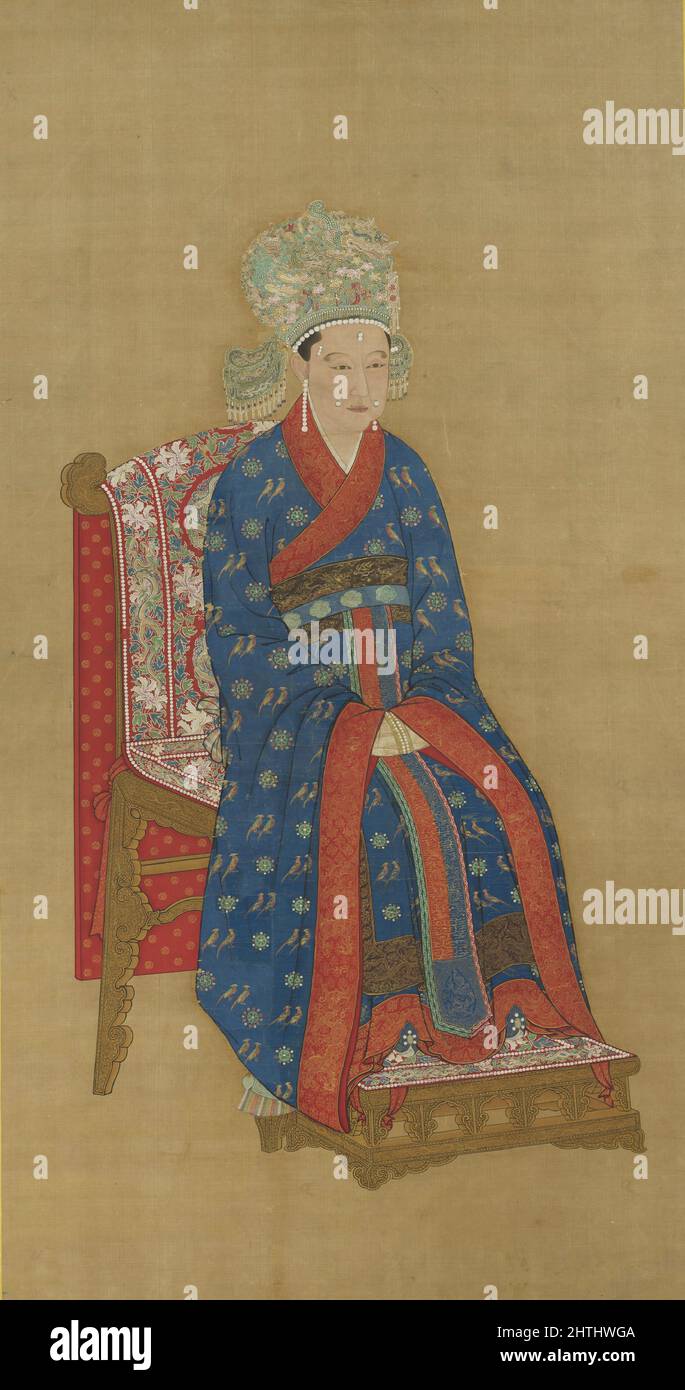 Portrait of Empress Li Fengniang (1144 – 1200) was a Chinese Empress consort of the Song Dynasty, married to Emperor Guangzong of Song. Stock Photohttps://www.alamy.com/image-license-details/?v=1https://www.alamy.com/portrait-of-empress-li-fengniang-1144-1200-was-a-chinese-empress-consort-of-the-song-dynasty-married-to-emperor-guangzong-of-song-image462614554.html
Portrait of Empress Li Fengniang (1144 – 1200) was a Chinese Empress consort of the Song Dynasty, married to Emperor Guangzong of Song. Stock Photohttps://www.alamy.com/image-license-details/?v=1https://www.alamy.com/portrait-of-empress-li-fengniang-1144-1200-was-a-chinese-empress-consort-of-the-song-dynasty-married-to-emperor-guangzong-of-song-image462614554.htmlRM2HTHWGA–Portrait of Empress Li Fengniang (1144 – 1200) was a Chinese Empress consort of the Song Dynasty, married to Emperor Guangzong of Song.
 Art inspired by Giraffe with Two Keepers, Qing dynasty (1644–1911), China, Framed painting; ink and color on silk, Image: 53 3/4 x 33 1/2 in. (136.5 x 85.1 cm), Paintings, Unidentified Artist Chinese, 17th century or later, In 1414, a giraffe—a creature unknown in China at the time—was, Classic works modernized by Artotop with a splash of modernity. Shapes, color and value, eye-catching visual impact on art. Emotions through freedom of artworks in a contemporary way. A timeless message pursuing a wildly creative new direction. Artists turning to the digital medium and creating the Artotop NFT Stock Photohttps://www.alamy.com/image-license-details/?v=1https://www.alamy.com/art-inspired-by-giraffe-with-two-keepers-qing-dynasty-16441911-china-framed-painting-ink-and-color-on-silk-image-53-34-x-33-12-in-1365-x-851-cm-paintings-unidentified-artist-chinese-17th-century-or-later-in-1414-a-giraffea-creature-unknown-in-china-at-the-timewas-classic-works-modernized-by-artotop-with-a-splash-of-modernity-shapes-color-and-value-eye-catching-visual-impact-on-art-emotions-through-freedom-of-artworks-in-a-contemporary-way-a-timeless-message-pursuing-a-wildly-creative-new-direction-artists-turning-to-the-digital-medium-and-creating-the-artotop-nft-image462911997.html
Art inspired by Giraffe with Two Keepers, Qing dynasty (1644–1911), China, Framed painting; ink and color on silk, Image: 53 3/4 x 33 1/2 in. (136.5 x 85.1 cm), Paintings, Unidentified Artist Chinese, 17th century or later, In 1414, a giraffe—a creature unknown in China at the time—was, Classic works modernized by Artotop with a splash of modernity. Shapes, color and value, eye-catching visual impact on art. Emotions through freedom of artworks in a contemporary way. A timeless message pursuing a wildly creative new direction. Artists turning to the digital medium and creating the Artotop NFT Stock Photohttps://www.alamy.com/image-license-details/?v=1https://www.alamy.com/art-inspired-by-giraffe-with-two-keepers-qing-dynasty-16441911-china-framed-painting-ink-and-color-on-silk-image-53-34-x-33-12-in-1365-x-851-cm-paintings-unidentified-artist-chinese-17th-century-or-later-in-1414-a-giraffea-creature-unknown-in-china-at-the-timewas-classic-works-modernized-by-artotop-with-a-splash-of-modernity-shapes-color-and-value-eye-catching-visual-impact-on-art-emotions-through-freedom-of-artworks-in-a-contemporary-way-a-timeless-message-pursuing-a-wildly-creative-new-direction-artists-turning-to-the-digital-medium-and-creating-the-artotop-nft-image462911997.htmlRF2HW3CY9–Art inspired by Giraffe with Two Keepers, Qing dynasty (1644–1911), China, Framed painting; ink and color on silk, Image: 53 3/4 x 33 1/2 in. (136.5 x 85.1 cm), Paintings, Unidentified Artist Chinese, 17th century or later, In 1414, a giraffe—a creature unknown in China at the time—was, Classic works modernized by Artotop with a splash of modernity. Shapes, color and value, eye-catching visual impact on art. Emotions through freedom of artworks in a contemporary way. A timeless message pursuing a wildly creative new direction. Artists turning to the digital medium and creating the Artotop NFT
 A Chinese Emperor With his Concubines Inspecting his Fantasy Fishing Fleet Stock Photohttps://www.alamy.com/image-license-details/?v=1https://www.alamy.com/stock-photo-a-chinese-emperor-with-his-concubines-inspecting-his-fantasy-fishing-132409605.html
A Chinese Emperor With his Concubines Inspecting his Fantasy Fishing Fleet Stock Photohttps://www.alamy.com/image-license-details/?v=1https://www.alamy.com/stock-photo-a-chinese-emperor-with-his-concubines-inspecting-his-fantasy-fishing-132409605.htmlRMHKBNPD–A Chinese Emperor With his Concubines Inspecting his Fantasy Fishing Fleet
 The travelling court of an eighteenth century chinese emperor. Possibly, the Qianlong Emperor (Chien-lung, 1711 – 1799). sixth emperor of the Manchu-led Qing Dynasty, and the fourth Qing emperor to rule over China proper. reigned from 1735 to 1796 Stock Photohttps://www.alamy.com/image-license-details/?v=1https://www.alamy.com/stock-photo-the-travelling-court-of-an-eighteenth-century-chinese-emperor-possibly-90823829.html
The travelling court of an eighteenth century chinese emperor. Possibly, the Qianlong Emperor (Chien-lung, 1711 – 1799). sixth emperor of the Manchu-led Qing Dynasty, and the fourth Qing emperor to rule over China proper. reigned from 1735 to 1796 Stock Photohttps://www.alamy.com/image-license-details/?v=1https://www.alamy.com/stock-photo-the-travelling-court-of-an-eighteenth-century-chinese-emperor-possibly-90823829.htmlRMF7NAM5–The travelling court of an eighteenth century chinese emperor. Possibly, the Qianlong Emperor (Chien-lung, 1711 – 1799). sixth emperor of the Manchu-led Qing Dynasty, and the fourth Qing emperor to rule over China proper. reigned from 1735 to 1796
 Painting of a Chinese emperor at Soon Thian Keing Temple (Tua Konsi), Lorong 29, Geylang, Singapore Stock Photohttps://www.alamy.com/image-license-details/?v=1https://www.alamy.com/painting-of-a-chinese-emperor-at-soon-thian-keing-temple-tua-konsi-lorong-29-geylang-singapore-image375364632.html
Painting of a Chinese emperor at Soon Thian Keing Temple (Tua Konsi), Lorong 29, Geylang, Singapore Stock Photohttps://www.alamy.com/image-license-details/?v=1https://www.alamy.com/painting-of-a-chinese-emperor-at-soon-thian-keing-temple-tua-konsi-lorong-29-geylang-singapore-image375364632.htmlRF2CPK9BM–Painting of a Chinese emperor at Soon Thian Keing Temple (Tua Konsi), Lorong 29, Geylang, Singapore
 Afrasiab murals, North wall, "Chinese panel": Emperor Taizong hunting, and the Chinese Empress on a boat, Between 648 and 651. Found in the Collection of the Afrasiab Museum, Samarkand. Stock Photohttps://www.alamy.com/image-license-details/?v=1https://www.alamy.com/afrasiab-murals-north-wall-quotchinese-panelquot-emperor-taizong-hunting-and-the-chinese-empress-on-a-boat-between-648-and-651-found-in-the-collection-of-the-afrasiab-museum-samarkand-image462499565.html
Afrasiab murals, North wall, "Chinese panel": Emperor Taizong hunting, and the Chinese Empress on a boat, Between 648 and 651. Found in the Collection of the Afrasiab Museum, Samarkand. Stock Photohttps://www.alamy.com/image-license-details/?v=1https://www.alamy.com/afrasiab-murals-north-wall-quotchinese-panelquot-emperor-taizong-hunting-and-the-chinese-empress-on-a-boat-between-648-and-651-found-in-the-collection-of-the-afrasiab-museum-samarkand-image462499565.htmlRM2HTCJWH–Afrasiab murals, North wall, "Chinese panel": Emperor Taizong hunting, and the Chinese Empress on a boat, Between 648 and 651. Found in the Collection of the Afrasiab Museum, Samarkand.
 . English: Zhuanxu, one of the mythical Five Sovereigns. Inscription reads: 'The God Zhuanxu, Gao Yang, was the grandson of the Yellow Emperor and the son of Chang Yi' (Birrell, Chinese Mythology, ISBN 0-8018-6183-7, p.48) 中文: 帝顓頊,高陽者,黄帝之孫而昌意之子 . AD 151. mural painting from Han dynasty 161 EmperorZhuanxu Stock Photohttps://www.alamy.com/image-license-details/?v=1https://www.alamy.com/english-zhuanxu-one-of-the-mythical-five-sovereigns-inscription-reads-the-god-zhuanxu-gao-yang-was-the-grandson-of-the-yellow-emperor-and-the-son-of-chang-yi-birrell-chinese-mythology-isbn-0-8018-6183-7-p48-ad-151-mural-painting-from-han-dynasty-161-emperorzhuanxu-image189002727.html
. English: Zhuanxu, one of the mythical Five Sovereigns. Inscription reads: 'The God Zhuanxu, Gao Yang, was the grandson of the Yellow Emperor and the son of Chang Yi' (Birrell, Chinese Mythology, ISBN 0-8018-6183-7, p.48) 中文: 帝顓頊,高陽者,黄帝之孫而昌意之子 . AD 151. mural painting from Han dynasty 161 EmperorZhuanxu Stock Photohttps://www.alamy.com/image-license-details/?v=1https://www.alamy.com/english-zhuanxu-one-of-the-mythical-five-sovereigns-inscription-reads-the-god-zhuanxu-gao-yang-was-the-grandson-of-the-yellow-emperor-and-the-son-of-chang-yi-birrell-chinese-mythology-isbn-0-8018-6183-7-p48-ad-151-mural-painting-from-han-dynasty-161-emperorzhuanxu-image189002727.htmlRMMYDPWB–. English: Zhuanxu, one of the mythical Five Sovereigns. Inscription reads: 'The God Zhuanxu, Gao Yang, was the grandson of the Yellow Emperor and the son of Chang Yi' (Birrell, Chinese Mythology, ISBN 0-8018-6183-7, p.48) 中文: 帝顓頊,高陽者,黄帝之孫而昌意之子 . AD 151. mural painting from Han dynasty 161 EmperorZhuanxu
 Emperor of the Tang Dynasty. After a native painting from Cyclopedia universal history : embracing the most complete and recent presentation of the subject in two principal parts or divisions of more than six thousand pages by John Clark Ridpath, 1840-1900 Publication date 1895 Publisher Boston : Balch Bros. Volume 7 History of Man Stock Photohttps://www.alamy.com/image-license-details/?v=1https://www.alamy.com/emperor-of-the-tang-dynasty-after-a-native-painting-from-cyclopedia-universal-history-embracing-the-most-complete-and-recent-presentation-of-the-subject-in-two-principal-parts-or-divisions-of-more-than-six-thousand-pages-by-john-clark-ridpath-1840-1900-publication-date-1895-publisher-boston-balch-bros-volume-7-history-of-man-image543433552.html
Emperor of the Tang Dynasty. After a native painting from Cyclopedia universal history : embracing the most complete and recent presentation of the subject in two principal parts or divisions of more than six thousand pages by John Clark Ridpath, 1840-1900 Publication date 1895 Publisher Boston : Balch Bros. Volume 7 History of Man Stock Photohttps://www.alamy.com/image-license-details/?v=1https://www.alamy.com/emperor-of-the-tang-dynasty-after-a-native-painting-from-cyclopedia-universal-history-embracing-the-most-complete-and-recent-presentation-of-the-subject-in-two-principal-parts-or-divisions-of-more-than-six-thousand-pages-by-john-clark-ridpath-1840-1900-publication-date-1895-publisher-boston-balch-bros-volume-7-history-of-man-image543433552.htmlRF2PG3F14–Emperor of the Tang Dynasty. After a native painting from Cyclopedia universal history : embracing the most complete and recent presentation of the subject in two principal parts or divisions of more than six thousand pages by John Clark Ridpath, 1840-1900 Publication date 1895 Publisher Boston : Balch Bros. Volume 7 History of Man
 Emperor's Journey, Unknown artist. Stock Photohttps://www.alamy.com/image-license-details/?v=1https://www.alamy.com/emperors-journey-unknown-artist-image215545340.html
Emperor's Journey, Unknown artist. Stock Photohttps://www.alamy.com/image-license-details/?v=1https://www.alamy.com/emperors-journey-unknown-artist-image215545340.htmlRMPEJX7T–Emperor's Journey, Unknown artist.
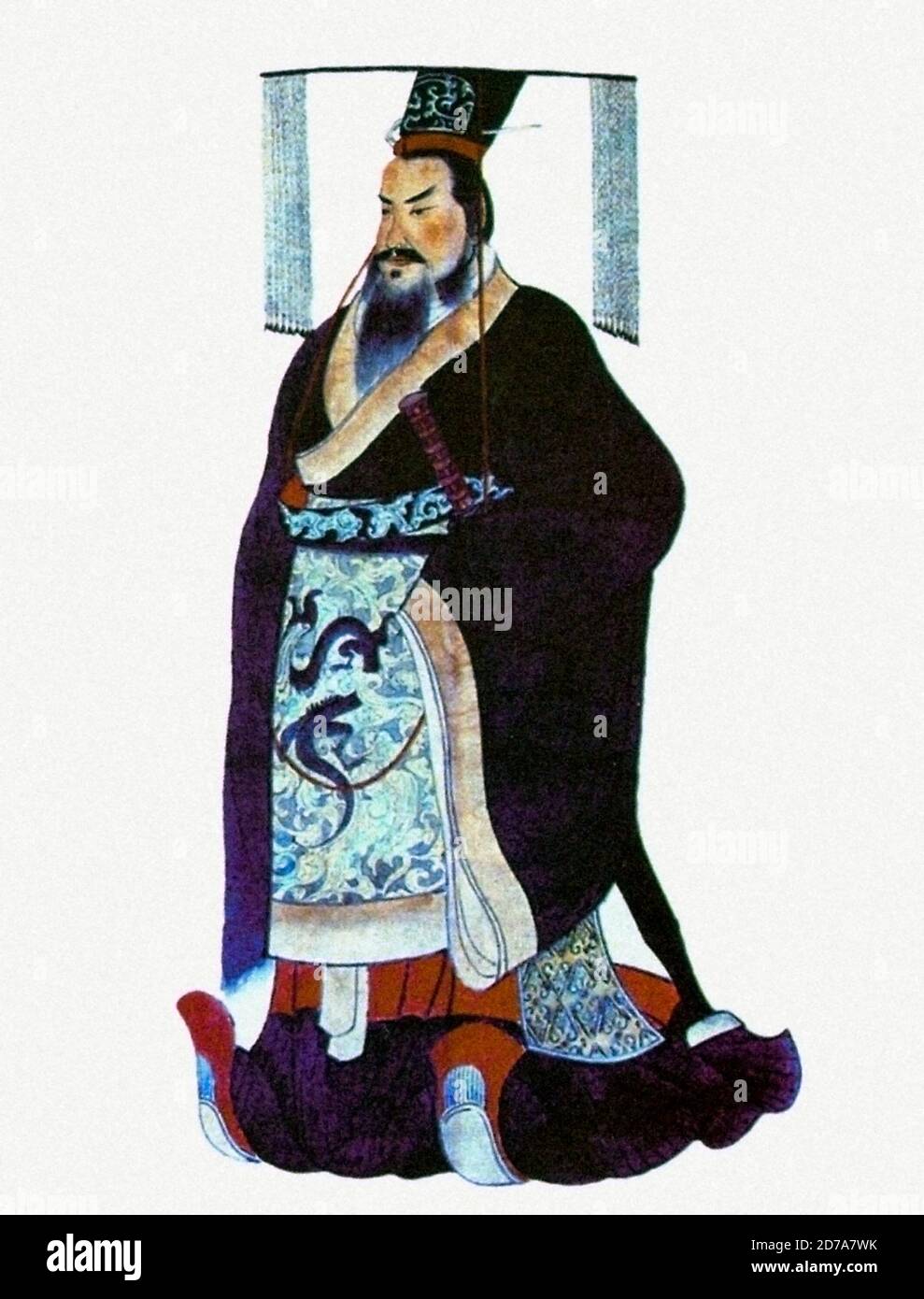 Qin Shi Huang (259 BC-210 BC). Portrait of the founder of the Qin dynasty and the first emperor of a unified China. Illustration, c.1850, from 'China's terracotta army and the First Emperor's mausoleum' by Zhongyi Yuan Stock Photohttps://www.alamy.com/image-license-details/?v=1https://www.alamy.com/qin-shi-huang-259-bc-210-bc-portrait-of-the-founder-of-the-qin-dynasty-and-the-first-emperor-of-a-unified-china-illustration-c1850-from-chinas-terracotta-army-and-the-first-emperors-mausoleum-by-zhongyi-yuan-image383156415.html
Qin Shi Huang (259 BC-210 BC). Portrait of the founder of the Qin dynasty and the first emperor of a unified China. Illustration, c.1850, from 'China's terracotta army and the First Emperor's mausoleum' by Zhongyi Yuan Stock Photohttps://www.alamy.com/image-license-details/?v=1https://www.alamy.com/qin-shi-huang-259-bc-210-bc-portrait-of-the-founder-of-the-qin-dynasty-and-the-first-emperor-of-a-unified-china-illustration-c1850-from-chinas-terracotta-army-and-the-first-emperors-mausoleum-by-zhongyi-yuan-image383156415.htmlRM2D7A7WK–Qin Shi Huang (259 BC-210 BC). Portrait of the founder of the Qin dynasty and the first emperor of a unified China. Illustration, c.1850, from 'China's terracotta army and the First Emperor's mausoleum' by Zhongyi Yuan
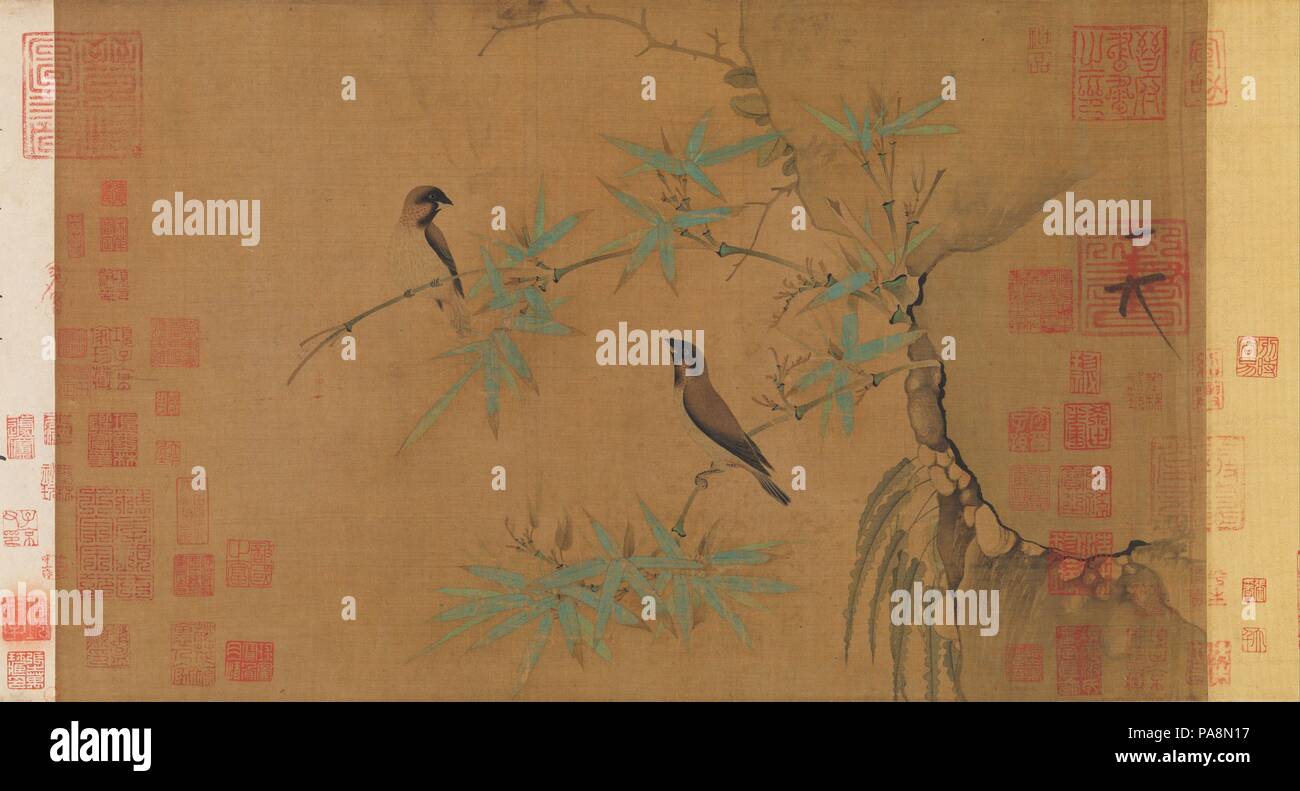 Finches and bamboo. Artist: Emperor Huizong (Chinese, 1082-1135; r. 1100-25). Culture: China. Dimensions: Image: 13 1/4 × 21 13/16 in. (33.7 × 55.4 cm) Overall with mounting: 13 3/4 in. × 27 ft. 6 5/16 in. (34.9 × 839 cm). Date: early 12th century. Huizong was the eighth emperor of the Song dynasty and the most artistically accomplished of his imperial line. Finches and Bamboo exemplifies the realistic style of flower-and-bird painting practiced at Huizong's academy. Whether making a study from nature or illustrating a line of poetry, however, the emperor valued capturing the spirit of a su Stock Photohttps://www.alamy.com/image-license-details/?v=1https://www.alamy.com/finches-and-bamboo-artist-emperor-huizong-chinese-1082-1135-r-1100-25-culture-china-dimensions-image-13-14-21-1316-in-337-554-cm-overall-with-mounting-13-34-in-27-ft-6-516-in-349-839-cm-date-early-12th-century-huizong-was-the-eighth-emperor-of-the-song-dynasty-and-the-most-artistically-accomplished-of-his-imperial-line-finches-and-bamboo-exemplifies-the-realistic-style-of-flower-and-bird-painting-practiced-at-huizongs-academy-whether-making-a-study-from-nature-or-illustrating-a-line-of-poetry-however-the-emperor-valued-capturing-the-spirit-of-a-su-image212863091.html
Finches and bamboo. Artist: Emperor Huizong (Chinese, 1082-1135; r. 1100-25). Culture: China. Dimensions: Image: 13 1/4 × 21 13/16 in. (33.7 × 55.4 cm) Overall with mounting: 13 3/4 in. × 27 ft. 6 5/16 in. (34.9 × 839 cm). Date: early 12th century. Huizong was the eighth emperor of the Song dynasty and the most artistically accomplished of his imperial line. Finches and Bamboo exemplifies the realistic style of flower-and-bird painting practiced at Huizong's academy. Whether making a study from nature or illustrating a line of poetry, however, the emperor valued capturing the spirit of a su Stock Photohttps://www.alamy.com/image-license-details/?v=1https://www.alamy.com/finches-and-bamboo-artist-emperor-huizong-chinese-1082-1135-r-1100-25-culture-china-dimensions-image-13-14-21-1316-in-337-554-cm-overall-with-mounting-13-34-in-27-ft-6-516-in-349-839-cm-date-early-12th-century-huizong-was-the-eighth-emperor-of-the-song-dynasty-and-the-most-artistically-accomplished-of-his-imperial-line-finches-and-bamboo-exemplifies-the-realistic-style-of-flower-and-bird-painting-practiced-at-huizongs-academy-whether-making-a-study-from-nature-or-illustrating-a-line-of-poetry-however-the-emperor-valued-capturing-the-spirit-of-a-su-image212863091.htmlRMPA8N17–Finches and bamboo. Artist: Emperor Huizong (Chinese, 1082-1135; r. 1100-25). Culture: China. Dimensions: Image: 13 1/4 × 21 13/16 in. (33.7 × 55.4 cm) Overall with mounting: 13 3/4 in. × 27 ft. 6 5/16 in. (34.9 × 839 cm). Date: early 12th century. Huizong was the eighth emperor of the Song dynasty and the most artistically accomplished of his imperial line. Finches and Bamboo exemplifies the realistic style of flower-and-bird painting practiced at Huizong's academy. Whether making a study from nature or illustrating a line of poetry, however, the emperor valued capturing the spirit of a su
 Ancient Painting Stock Photohttps://www.alamy.com/image-license-details/?v=1https://www.alamy.com/stock-photo-ancient-painting-15729998.html
Ancient Painting Stock Photohttps://www.alamy.com/image-license-details/?v=1https://www.alamy.com/stock-photo-ancient-painting-15729998.htmlRFAPAJ3Y–Ancient Painting
 Scenes from the life of the Chinese Emperor Xuanzong of Tang (685-762), and his Consort Yang Guifei (719-756), painting by Kano Mitsunobu, 1580-1608 Stock Photohttps://www.alamy.com/image-license-details/?v=1https://www.alamy.com/scenes-from-the-life-of-the-chineseemperor-xuanzong-of-tang-685-762-and-his-consort-yang-guifei-719-756-painting-by-kano-mitsunobu-1580-1608-image425453218.html
Scenes from the life of the Chinese Emperor Xuanzong of Tang (685-762), and his Consort Yang Guifei (719-756), painting by Kano Mitsunobu, 1580-1608 Stock Photohttps://www.alamy.com/image-license-details/?v=1https://www.alamy.com/scenes-from-the-life-of-the-chineseemperor-xuanzong-of-tang-685-762-and-his-consort-yang-guifei-719-756-painting-by-kano-mitsunobu-1580-1608-image425453218.htmlRM2FM51WP–Scenes from the life of the Chinese Emperor Xuanzong of Tang (685-762), and his Consort Yang Guifei (719-756), painting by Kano Mitsunobu, 1580-1608
 China/Korea: 'Nambang Yeomje (Nanfang Yendi), Lord of the Southern Quadrant'. Ink and colour on hemp painting, Joseon Dynasty, 18th century. Nambang Yeomje (Chinese: Nanfang Yendi) was the Korean name for the legendary Emperor Shen Nong, also known as the Yan Emperor (Flame Emperor), who is said to have discovered tea in 2737 BCE and is venerated as the father of traditional Chinese medicine. He is worshipped as a Daoist and folk religion entity in China and Vietnam. Stock Photohttps://www.alamy.com/image-license-details/?v=1https://www.alamy.com/chinakorea-nambang-yeomje-nanfang-yendi-lord-of-the-southern-quadrant-ink-and-colour-on-hemp-painting-joseon-dynasty-18th-century-nambang-yeomje-chinese-nanfang-yendi-was-the-korean-name-for-the-legendary-emperor-shen-nong-also-known-as-the-yan-emperor-flame-emperor-who-is-said-to-have-discovered-tea-in-2737-bce-and-is-venerated-as-the-father-of-traditional-chinese-medicine-he-is-worshipped-as-a-daoist-and-folk-religion-entity-in-china-and-vietnam-image344230377.html
China/Korea: 'Nambang Yeomje (Nanfang Yendi), Lord of the Southern Quadrant'. Ink and colour on hemp painting, Joseon Dynasty, 18th century. Nambang Yeomje (Chinese: Nanfang Yendi) was the Korean name for the legendary Emperor Shen Nong, also known as the Yan Emperor (Flame Emperor), who is said to have discovered tea in 2737 BCE and is venerated as the father of traditional Chinese medicine. He is worshipped as a Daoist and folk religion entity in China and Vietnam. Stock Photohttps://www.alamy.com/image-license-details/?v=1https://www.alamy.com/chinakorea-nambang-yeomje-nanfang-yendi-lord-of-the-southern-quadrant-ink-and-colour-on-hemp-painting-joseon-dynasty-18th-century-nambang-yeomje-chinese-nanfang-yendi-was-the-korean-name-for-the-legendary-emperor-shen-nong-also-known-as-the-yan-emperor-flame-emperor-who-is-said-to-have-discovered-tea-in-2737-bce-and-is-venerated-as-the-father-of-traditional-chinese-medicine-he-is-worshipped-as-a-daoist-and-folk-religion-entity-in-china-and-vietnam-image344230377.htmlRM2B011A1–China/Korea: 'Nambang Yeomje (Nanfang Yendi), Lord of the Southern Quadrant'. Ink and colour on hemp painting, Joseon Dynasty, 18th century. Nambang Yeomje (Chinese: Nanfang Yendi) was the Korean name for the legendary Emperor Shen Nong, also known as the Yan Emperor (Flame Emperor), who is said to have discovered tea in 2737 BCE and is venerated as the father of traditional Chinese medicine. He is worshipped as a Daoist and folk religion entity in China and Vietnam.
 The Summer Palace (Chinese: 頤和園), is a vast ensemble of lakes, gardens and palaces in Beijing. Stock Photohttps://www.alamy.com/image-license-details/?v=1https://www.alamy.com/the-summer-palace-chinese-is-a-vast-ensemble-of-lakes-gardens-and-palaces-in-beijing-image231129024.html
The Summer Palace (Chinese: 頤和園), is a vast ensemble of lakes, gardens and palaces in Beijing. Stock Photohttps://www.alamy.com/image-license-details/?v=1https://www.alamy.com/the-summer-palace-chinese-is-a-vast-ensemble-of-lakes-gardens-and-palaces-in-beijing-image231129024.htmlRMRC0RC0–The Summer Palace (Chinese: 頤和園), is a vast ensemble of lakes, gardens and palaces in Beijing.
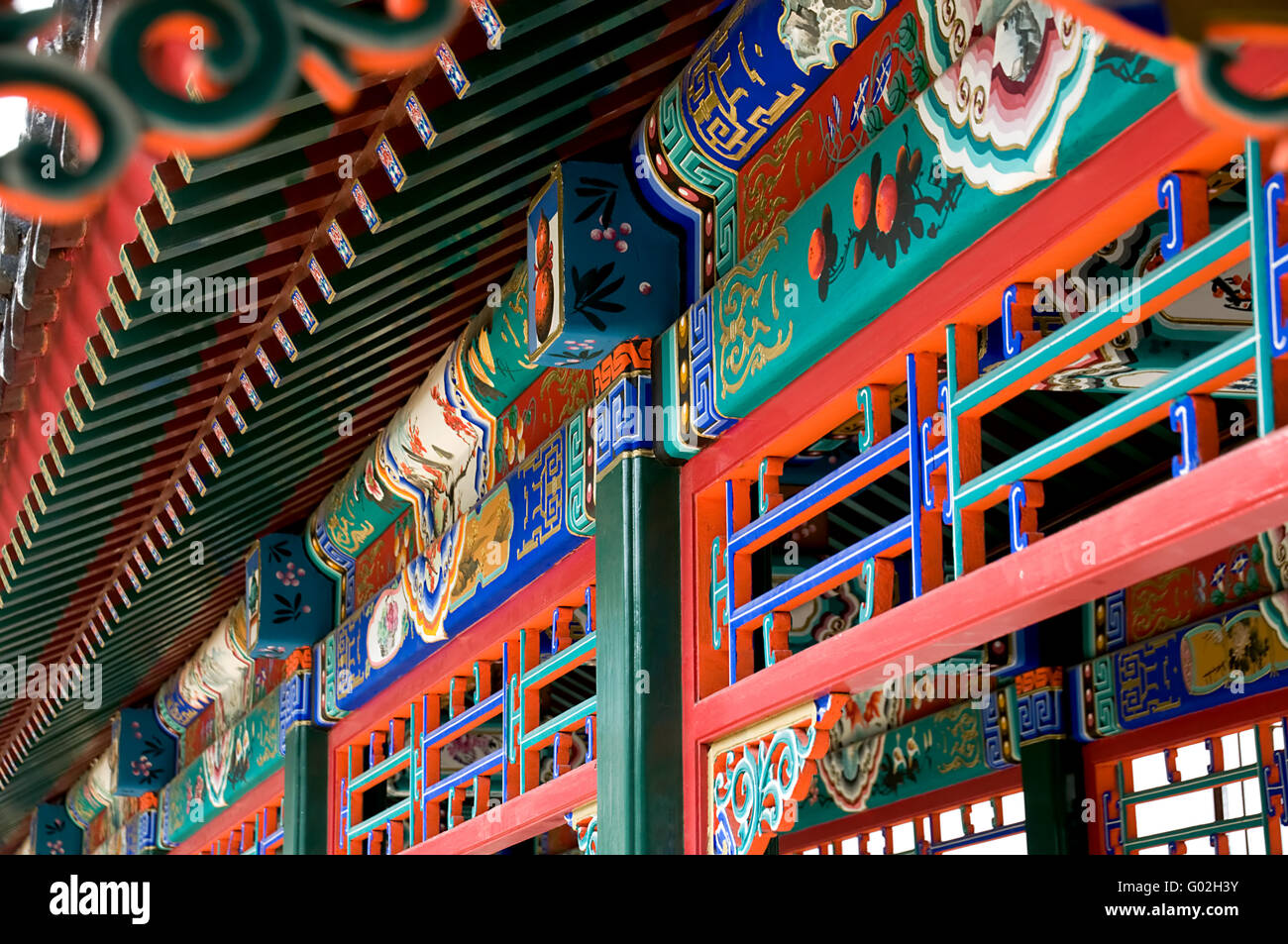 The details of (Chinese) corridor architecture with colorful painting Stock Photohttps://www.alamy.com/image-license-details/?v=1https://www.alamy.com/stock-photo-the-details-of-chinese-corridor-architecture-with-colorful-painting-103319551.html
The details of (Chinese) corridor architecture with colorful painting Stock Photohttps://www.alamy.com/image-license-details/?v=1https://www.alamy.com/stock-photo-the-details-of-chinese-corridor-architecture-with-colorful-painting-103319551.htmlRMG02H3Y–The details of (Chinese) corridor architecture with colorful painting